Japan Kyushu Road Trip! 8-Day North Kyushu Fukuoka Self-Drive Itinerary and Route Sharing
Kyushu is the region in Japan where autumn foliage appears the latest, usually around mid-November. During the major holiday in mid-November 2011, we chose to embark on a self-drive trip to Kyushu. Kyushu is not small, and it’s impossible to explore the entire region in just eight to ten days, so we focused on the northern part of Kyushu, starting our self-drive journey from Fukuoka. The itinerary included Fukuoka, Beppu, Yufuin, Mount Aso, Kumamoto, and Nagasaki.
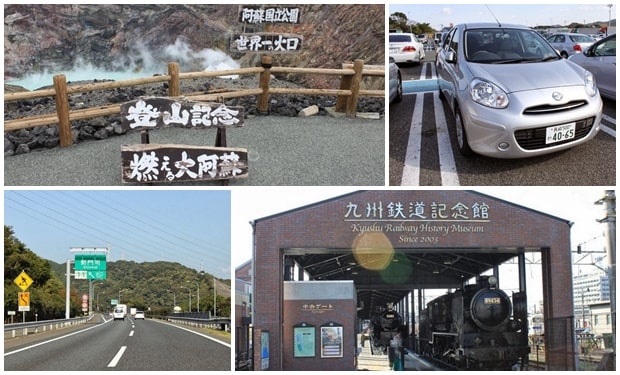
This North Kyushu self-drive trip lasted eight days, with Fukuoka as the entry and exit point. On the first day, we arrived in Fukuoka but didn’t pick up the car immediately. Instead, we stayed in Fukuoka city for one night and picked up the car on the second day to begin a five-day self-drive adventure, visiting Mojiko, Beppu Onsen, Yufuin, Mount Aso, Kumamoto, and Nagasaki. On the sixth day, we returned to Fukuoka to return the car, spent the seventh day exploring Fukuoka city, and flew home on the eighth day.
Below is the route for this 8-day self-drive trip in North Kyushu, Japan.
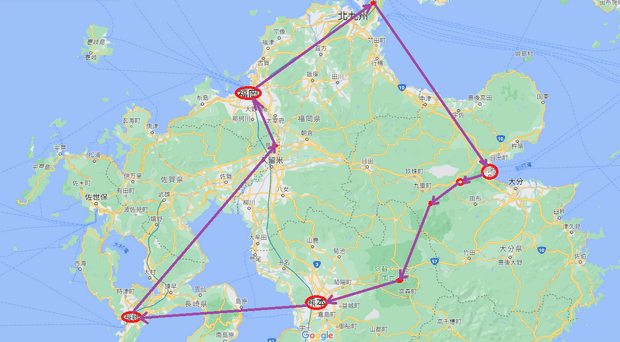
Table of Contents
Day 1: Exploring Fukuoka’s Canal City and Yatai Street
We arrived in Fukuoka at 3:30 PM. Fukuoka Airport’s international and domestic terminals are located in different places, and the subway connecting to the city only goes to the domestic terminal. After clearing immigration at the international terminal, we had to take a shuttle bus to the domestic terminal and then transfer to the subway to reach the city. However, Fukuoka Airport is very close to the city, so if transferring to the subway seems too troublesome, you can also opt to take a taxi directly.
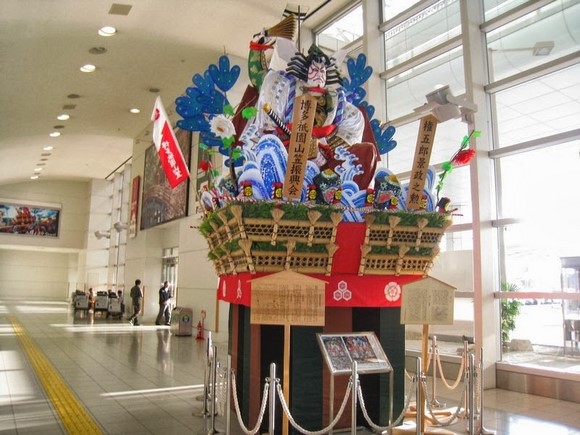
The hotel we stayed in on the first night was Hotel Sunroute Hakata (the hotel has since been renamed), located right next to JR Hakata Station. This hotel is very convenient, just a short walk from the JR Hakata Station’s Tsukushi Exit, and Sunroute hotels are known for their reliable quality, though the rooms are quite small.
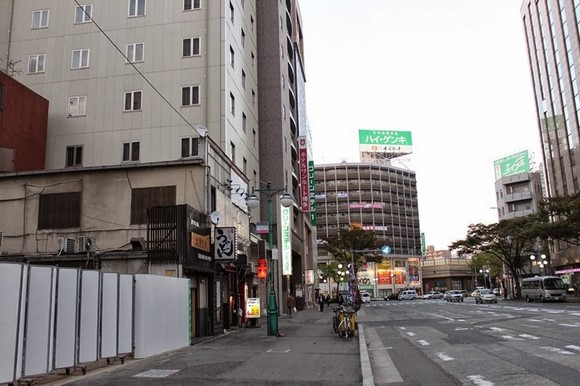
Tsukushi Exit of Hakata Station
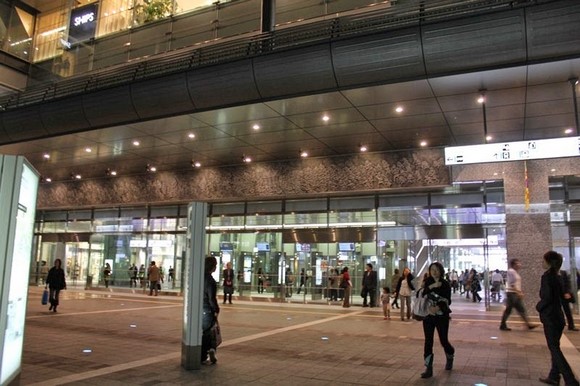
Inside Hakata Station
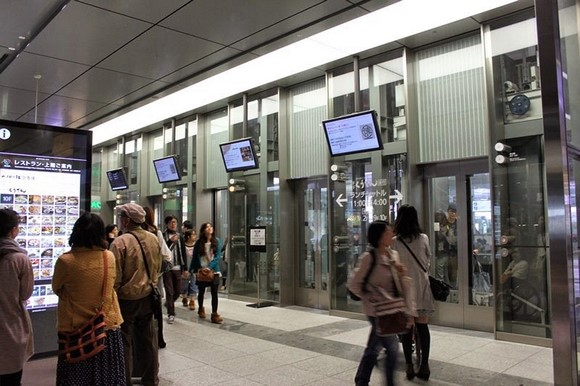
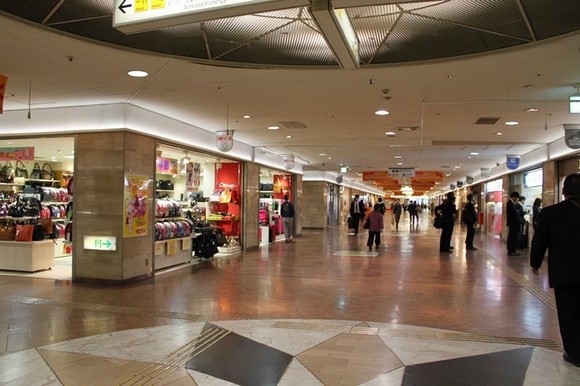
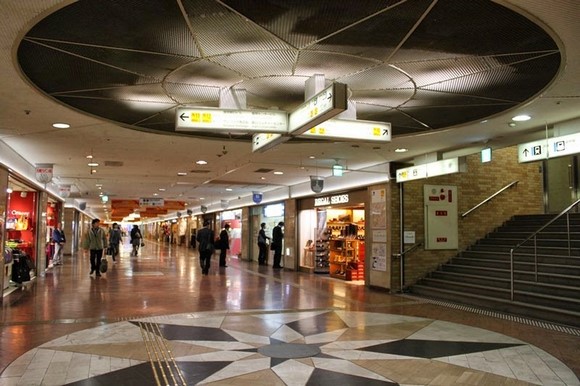
Hakata Station has several floors of dining options, and for our first meal, we tried Hakata’s famous motsunabe (offal hotpot).
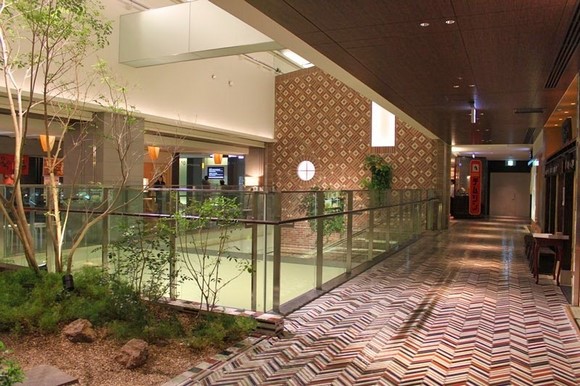
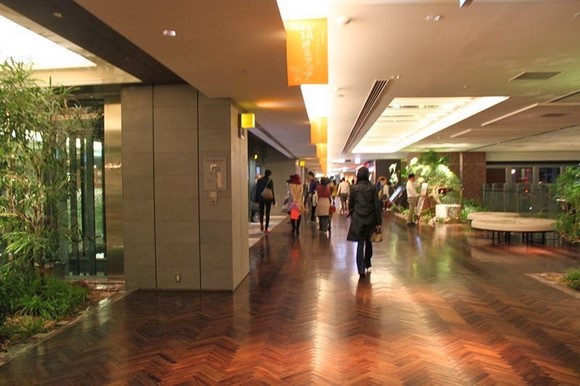
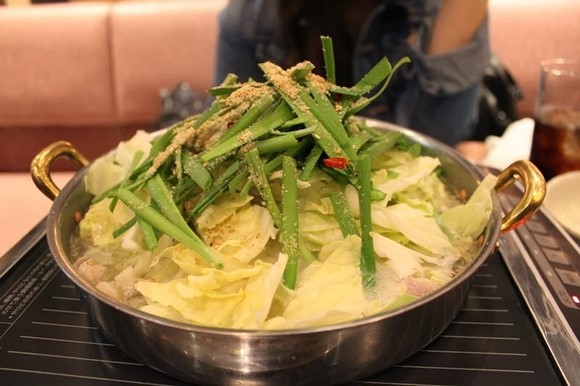
After dinner, we headed to the first attraction of our Kyushu trip: Canal City Hakata. Canal City is not located along the subway line, so there’s no direct subway access. However, you can take a bus from the Hakata Exit of Hakata Station.
Hakata Exit of Hakata Station
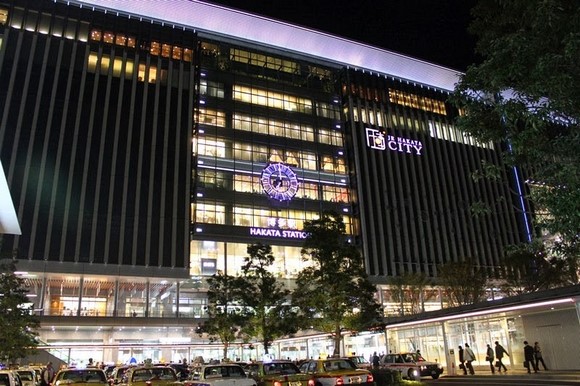
The bus fare from Hakata Station to Tenjin is a flat rate of 100 yen.
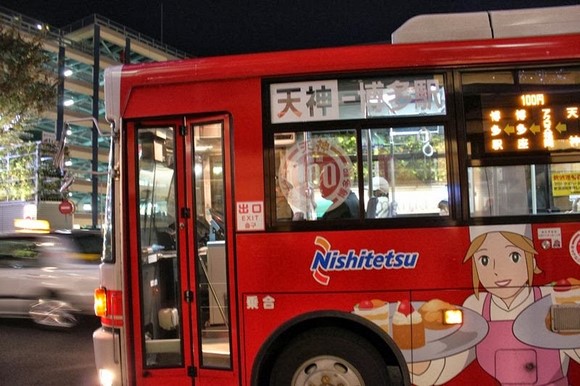
Canal City Hakata
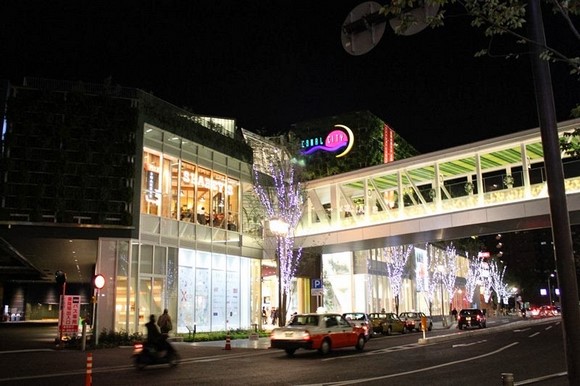
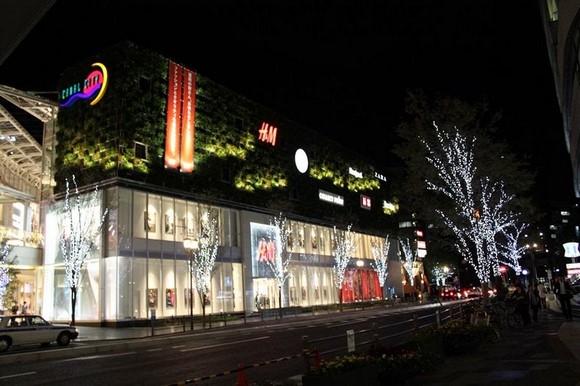
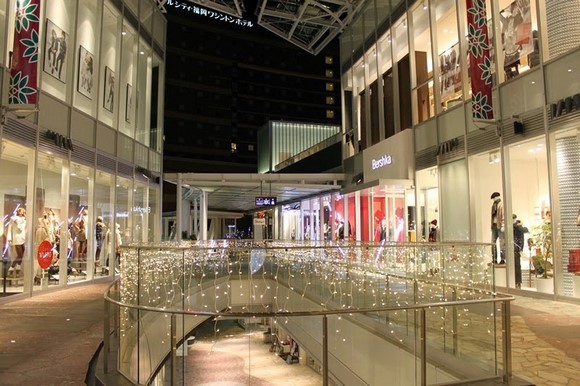
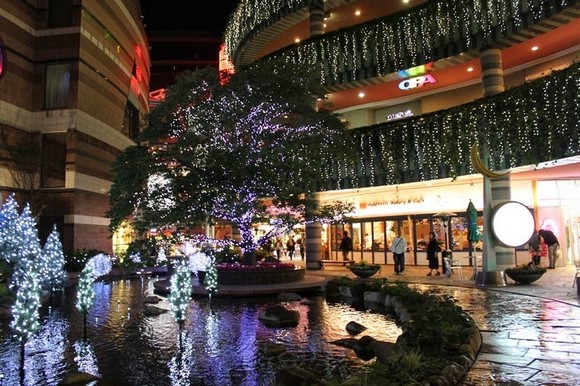
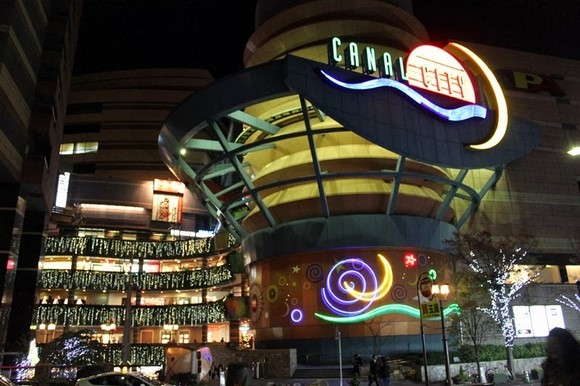
Walking from Canal City Hakata toward Nakasu, there are many food stalls along the riverbank, known as yatai. However, since we had already eaten dinner, we didn’t try any.
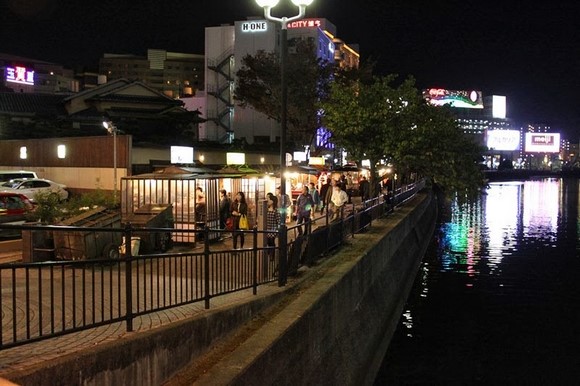
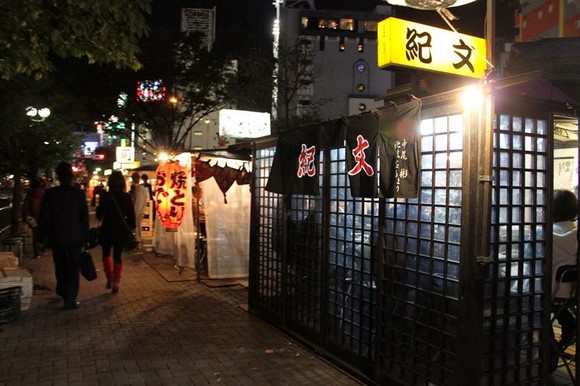
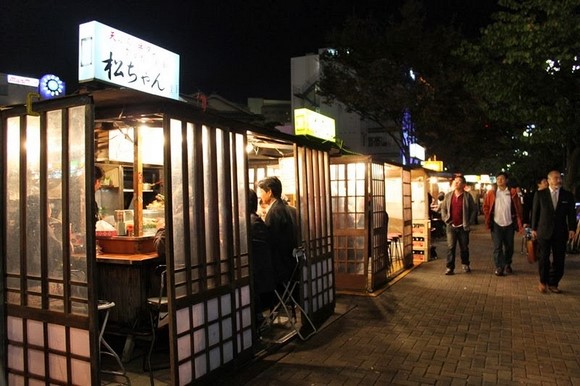
– End of Day 1 –
Day 2: Starting the Fukuoka Self-Drive, Visiting Mojiko and Beppu
The self-drive portion of the trip began on Day 2. This day’s itinerary included a visit to Mojiko, located near the Kanmon Strait, the shortest distance between Kyushu and Honshu, followed by a trip to Beppu Onsen, where we stayed at our first hot spring ryokan of the trip, Beppu Myoban Onsen Okamoto Ryokan.
We rented a Nissan March for this self-drive trip through Rakuten Travel from Orix Car Rental. The five-day rental cost 22,300 yen, and we didn’t purchase the optional insurance. The rental company was conveniently located across from Hotel Sunroute Hakata, making it easy to pick up the car in the morning.

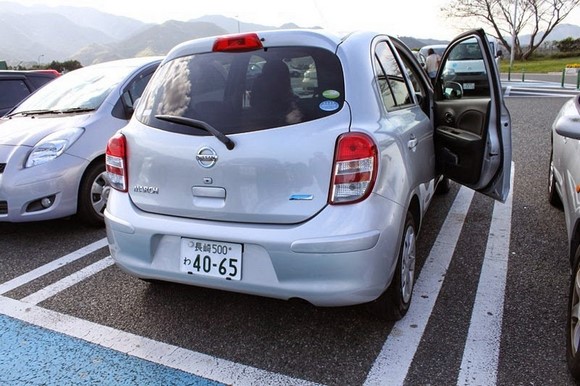
After leaving Fukuoka, we took the highway north and stopped for a short break at a rest area called Koga.
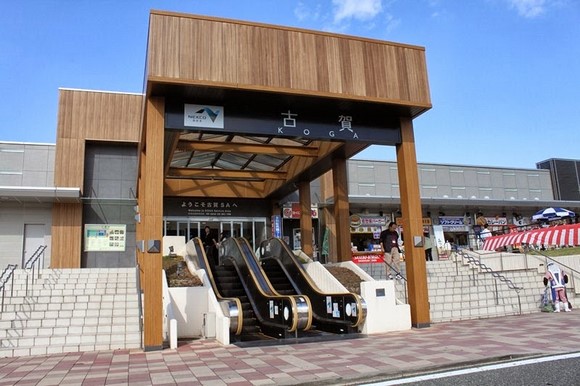
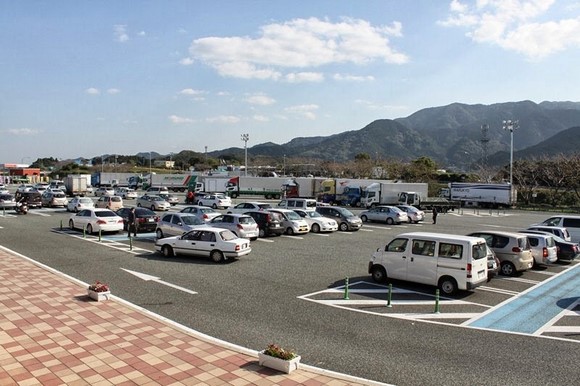
After the break, we continued toward Mojiko. The drive from Fukuoka to Mojiko takes about 1 hour and 15 minutes, excluding rest stops.
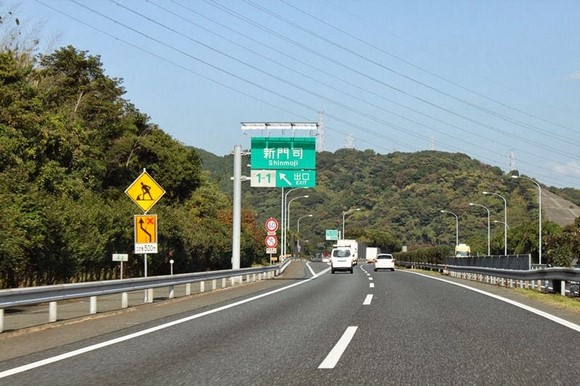
Mojiko isn’t very large, and the main attractions are concentrated around JR Mojiko Station. However, there aren’t many parking lots nearby, so the most convenient option is the paid parking lot next to the Kyushu Railway History Museum.

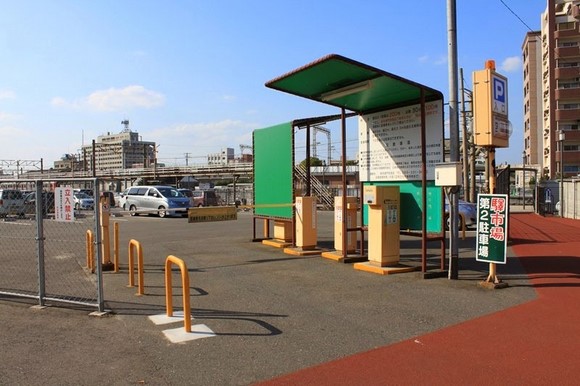
After parking, we first visited the nearby Kyushu Railway History Museum, which displays several old locomotives. However, we weren’t particularly interested, and since admission required a ticket, we just took some photos outside before leaving.
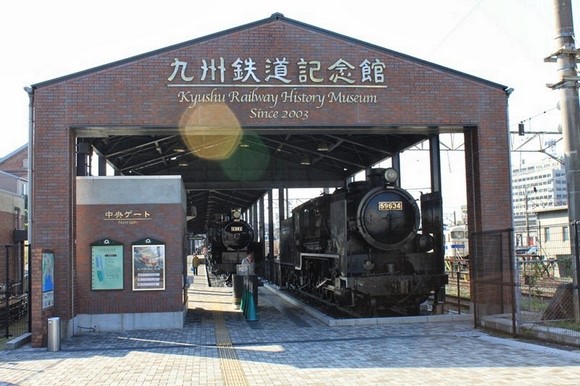

Walking from the Kyushu Railway History Museum toward the sea, you’ll see several historic buildings. If you’re interested, you can go inside to explore.
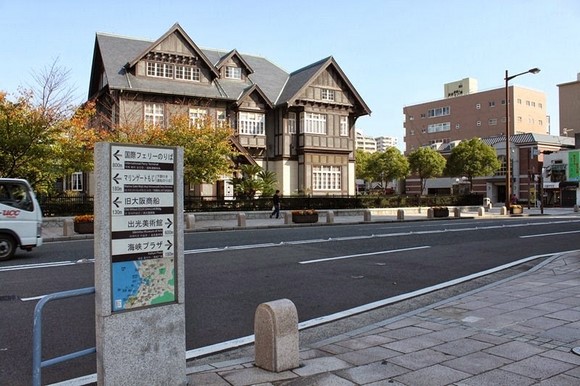
Next to the Kyushu Railway History Museum is JR Mojiko Station, an important historic building and tourist attraction in Mojiko.
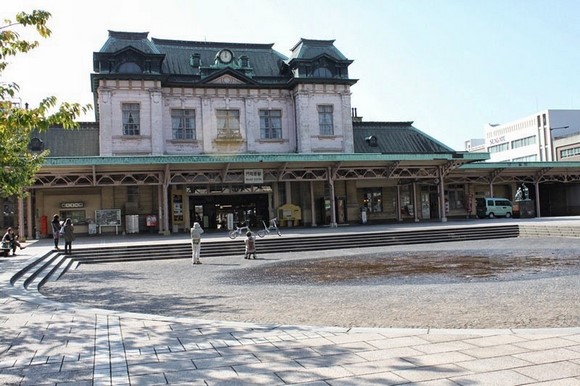
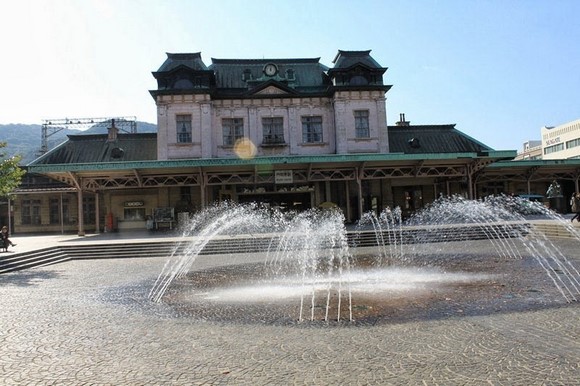
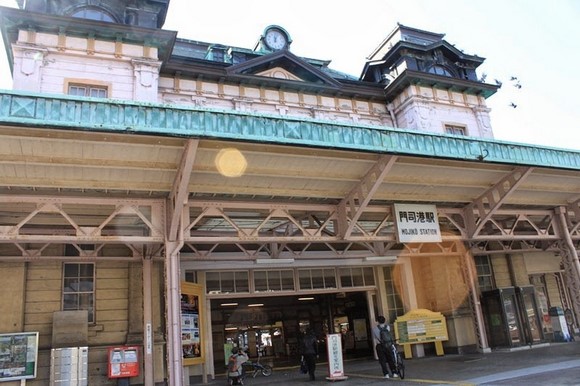
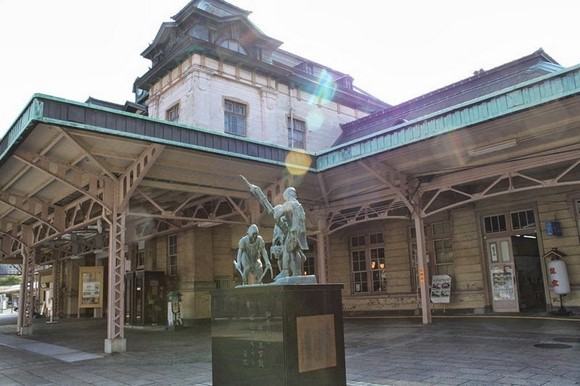
Outside Mojiko Station, there are several rickshaw pullers. If you’re interested, you can take a rickshaw tour of Mojiko.
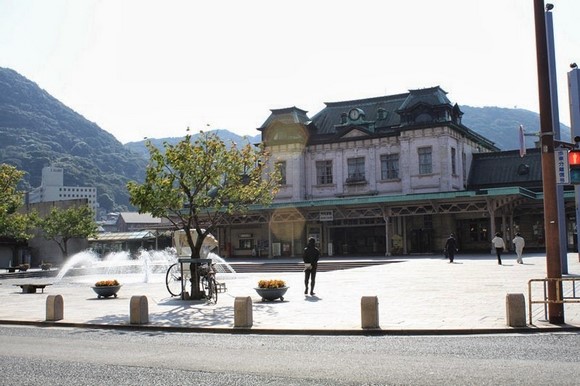
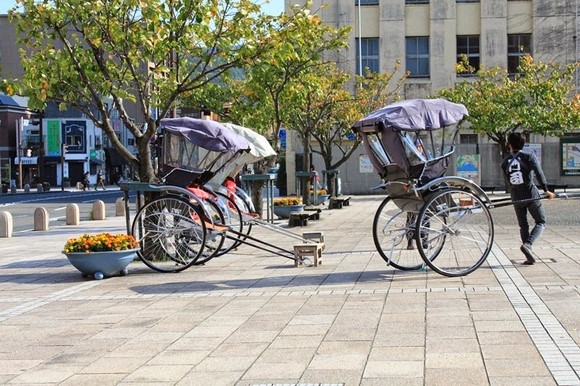
Inside Mojiko Station
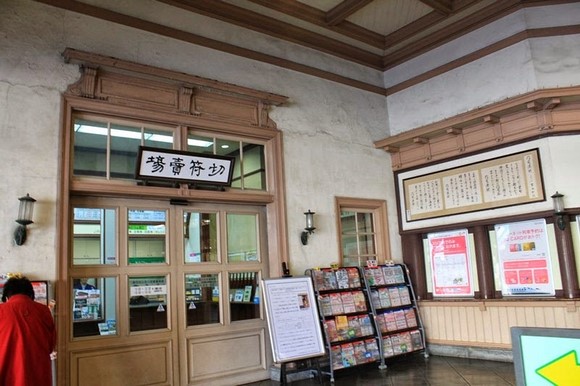
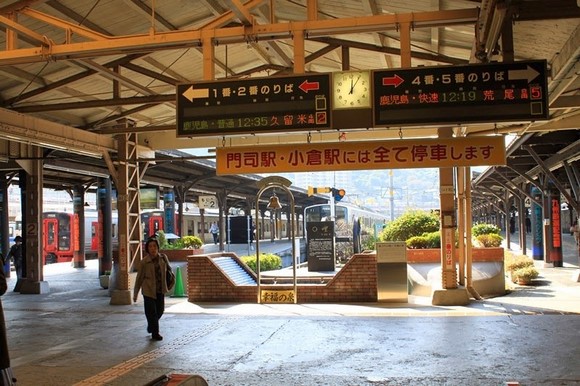
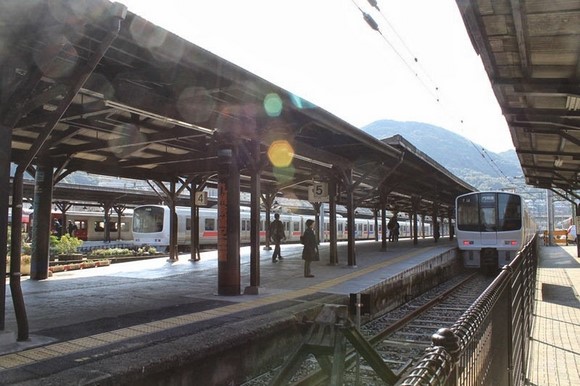
Next to Mojiko Station is the Kanmon Strait, with Shimonoseki on the opposite shore of Honshu connected by the Kanmon Bridge.
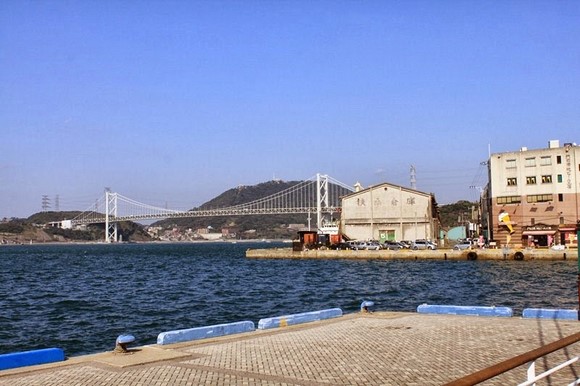
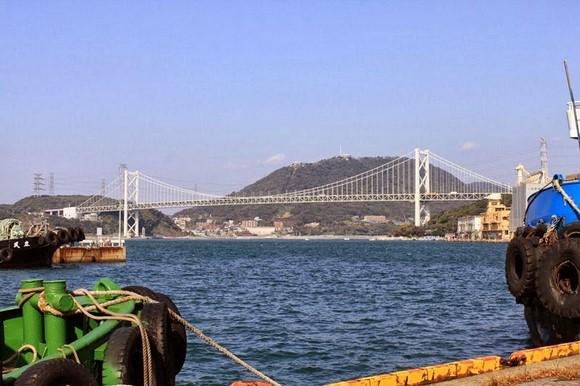

Curry rice is one of Mojiko’s specialties, and this small shop across the street from Mojiko Station is said to be famous for its curry rice, so we decided to try it for lunch.
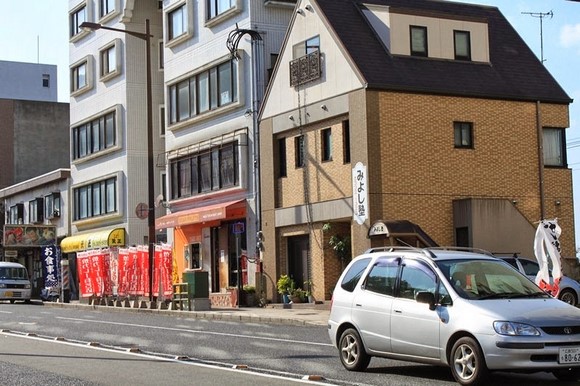
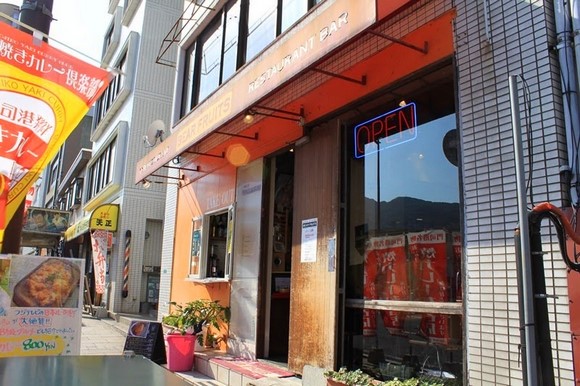
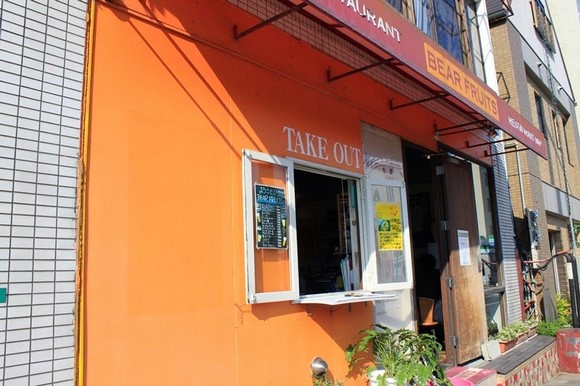
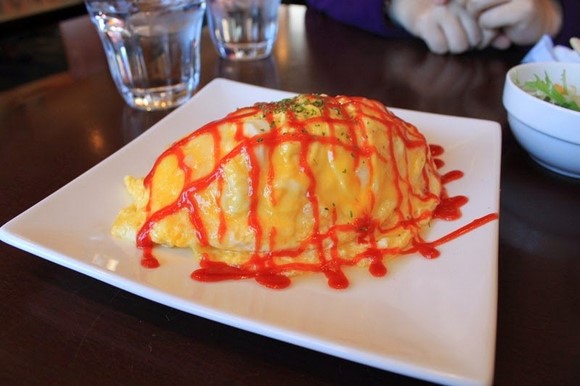
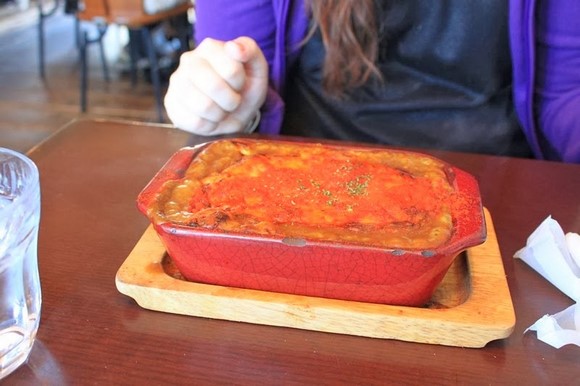
After leaving Mojiko, we drove to our next destination, Beppu.

From Northern Kyushu, we took the Oita Expressway to Beppu. Before reaching Beppu, there’s a rest stop overlooking Beppu Bay, where you can enjoy the beautiful scenery—worth a quick stop.
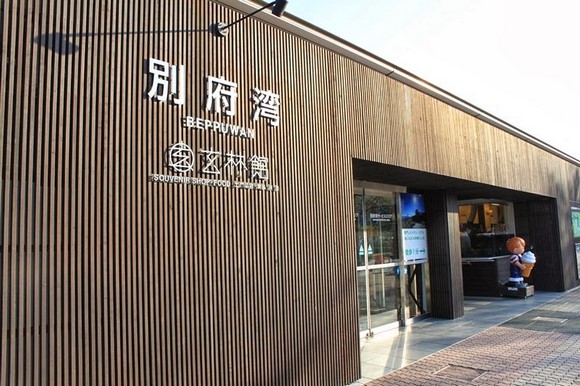
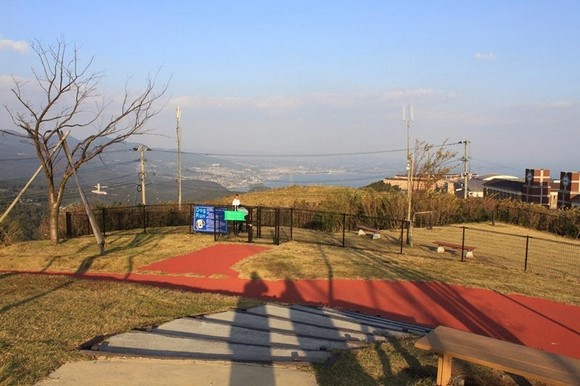
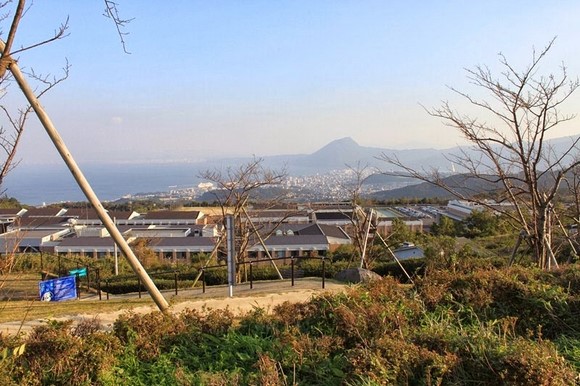
The drive took longer than expected, and by the time we arrived in Beppu, it was already past 4 p.m., so we only had time to stroll around the streets.
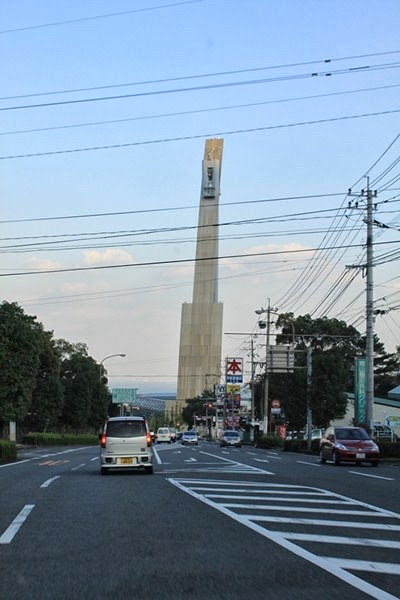
There’s a parking lot behind Beppu Station where we parked our car.
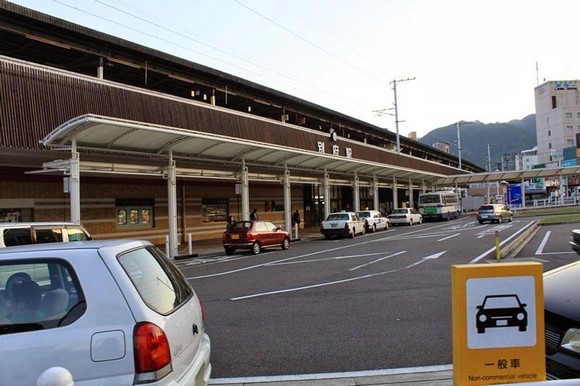
The hand bath in front of Beppu Station.
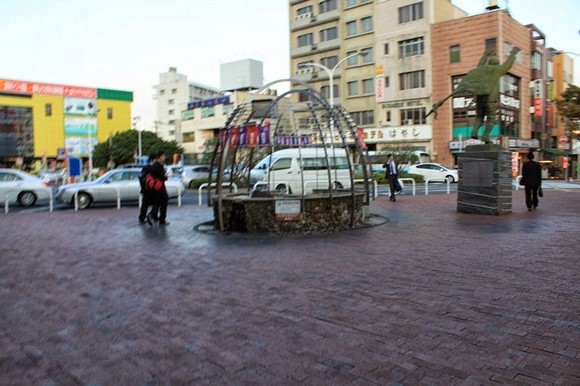
The main street in front of Beppu Station is Ekimae-dori, the primary thoroughfare in Beppu.
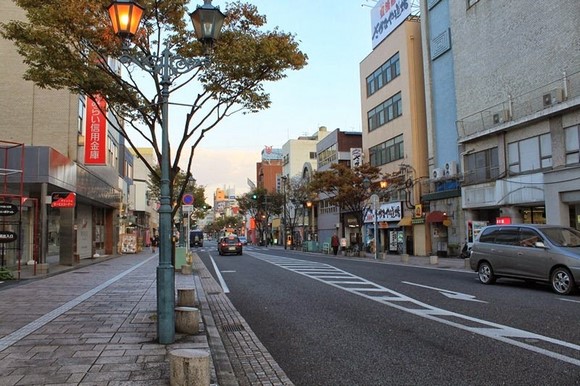
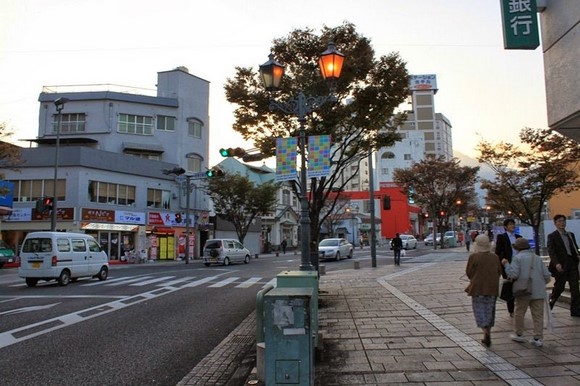
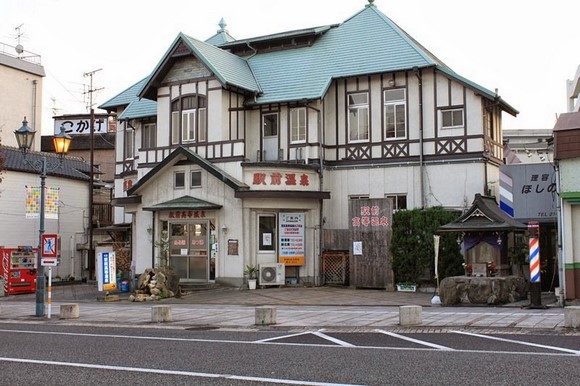
We only stayed near Beppu Station for a short time before driving to the hot spring ryokan where we would stay for the night: Beppu Myoban Onsen Okamoto-ya Ryokan.
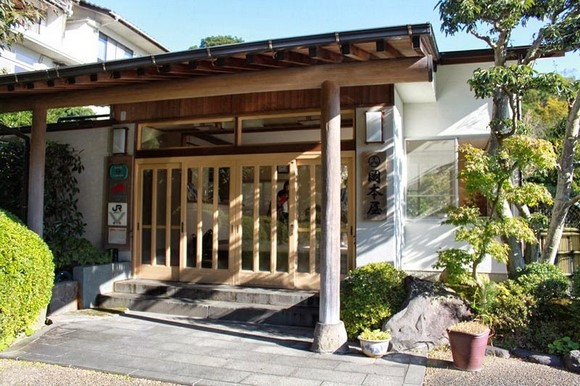
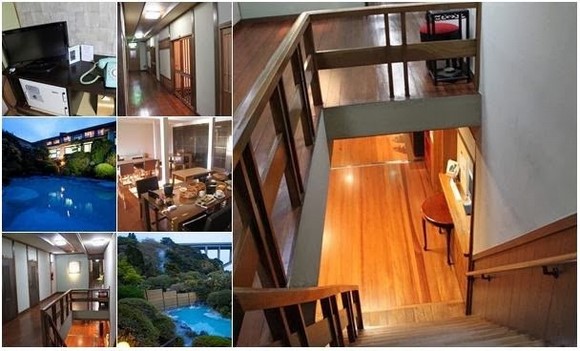
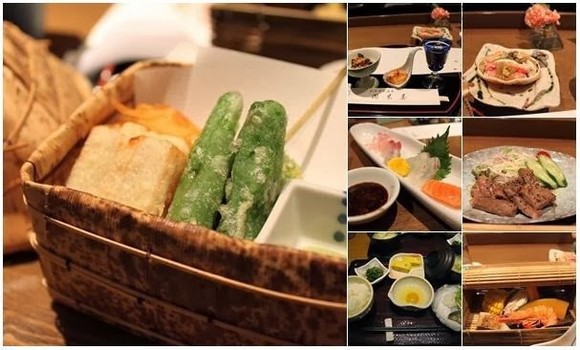
– End of Day 2 –
Day 3: Beppu Hot Springs and Yufuin
Tonight’s accommodation is in Yufuin Onsen, just an hour’s drive from Beppu, so we didn’t need to spend much time on transportation and could explore more of Beppu and Yufuin’s attractions.
The first thing in the morning was, of course, another dip in the hot springs, followed by breakfast, then checking out and heading out for the day.
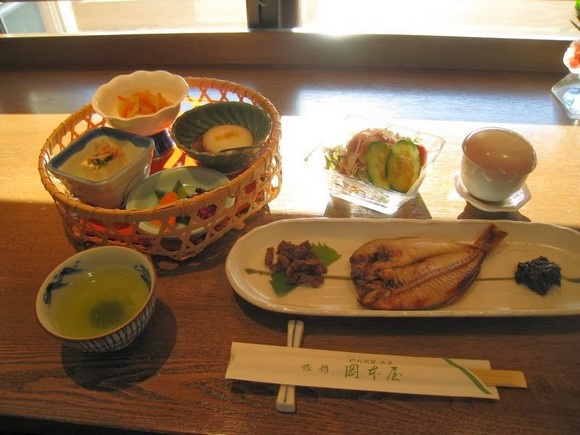
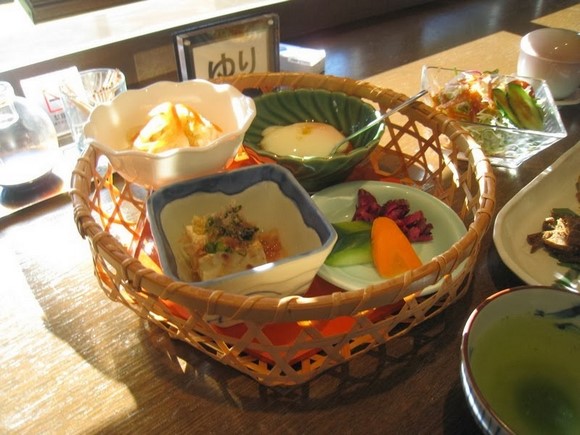
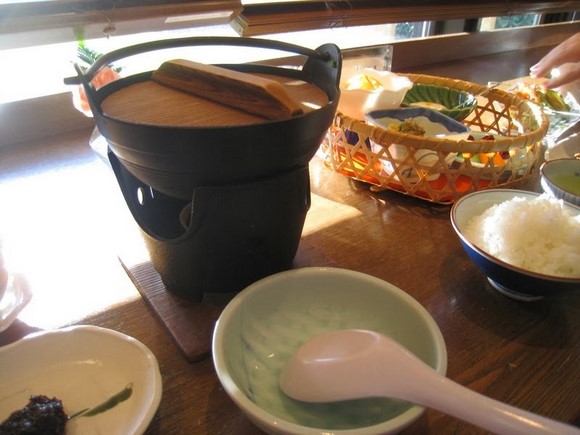
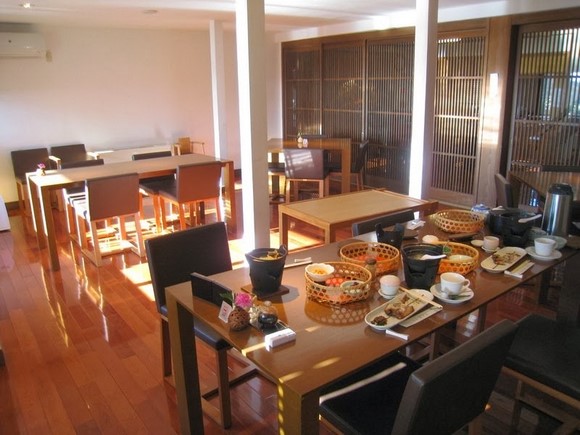
Beppu’s most famous attraction is the Beppu Hells, a collection of eight unique hot springs, including: Umi Jigoku (Sea Hell), Yama Jigoku (Mountain Hell), Oniishibozu Jigoku (Monk’s Head Hell), Kamado Jigoku (Cooking Pot Hell), Oniyama Jigoku (Devil’s Mountain Hell), Shiraike Jigoku (White Pond Hell), Chinoike Jigoku (Blood Pond Hell), and Tatsumaki Jigoku (Tornado Hell). Umi Jigoku, Yama Jigoku, Oniishibozu Jigoku, Kamado Jigoku, Oniyama Jigoku, and Shiraike Jigoku are located near Kannawa Onsen and are conveniently close to each other. Chinoike Jigoku and Tatsumaki Jigoku are farther away, so if you’re not driving or short on time, you might consider skipping them.
Tickets for each hell can be purchased separately, but it’s more economical to buy a combined ticket for all eight hells. You can also use a 10% discount coupon (currently a 200-yen discount coupon). The combined ticket can be purchased at the ticket office of any hell entrance. Besides buying tickets on-site, you can also purchase them on Klook.
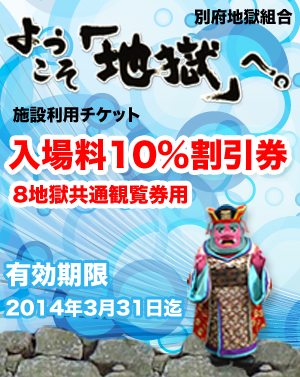
The combined ticket for the Beppu Hells includes eight vouchers, one for each hell.
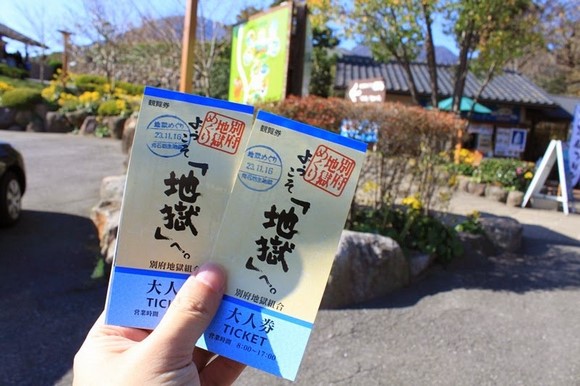
Each hell has plenty of free parking spaces nearby. Since Umi Jigoku, Yama Jigoku, Oniishibozu Jigoku, Kamado Jigoku, Oniyama Jigoku, and Shiraike Jigoku are in the same area, you can park your car once and walk between them.
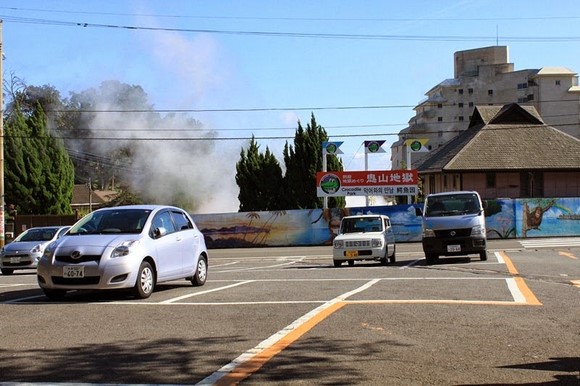
Our hell tour began with Oniishibozu Jigoku.
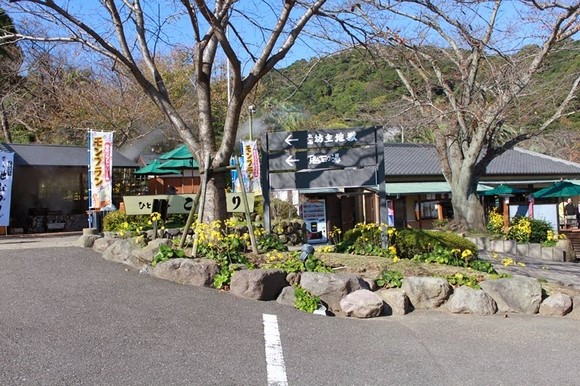
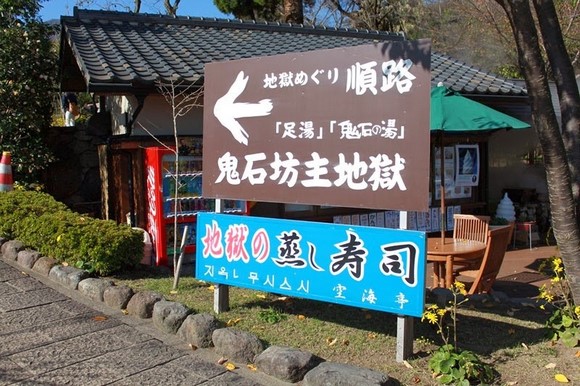
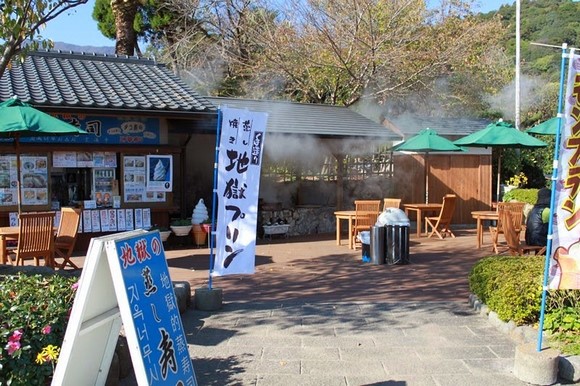
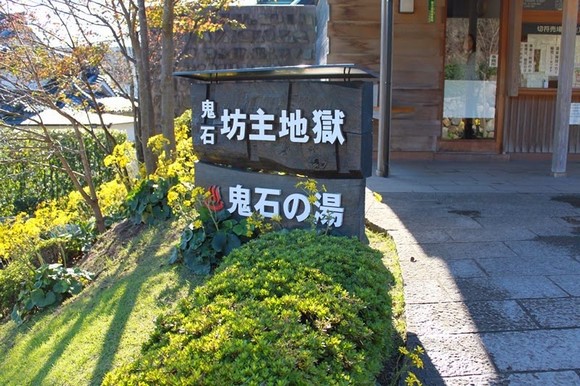
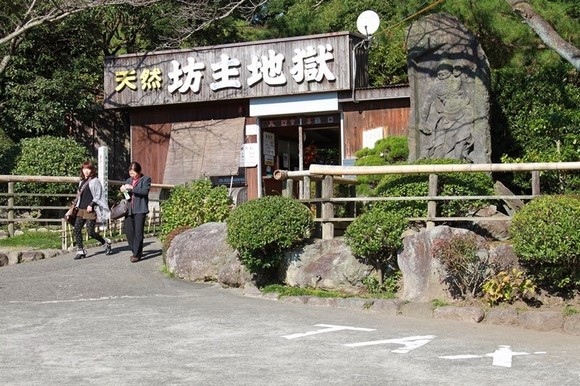
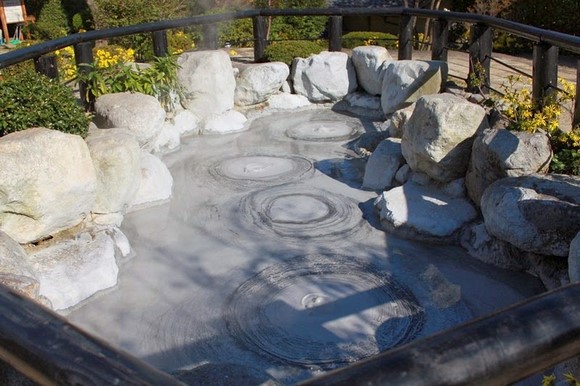
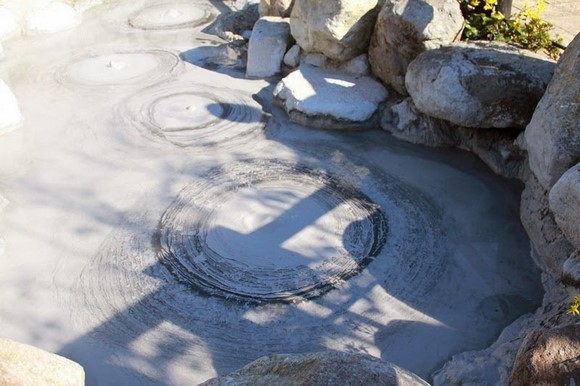
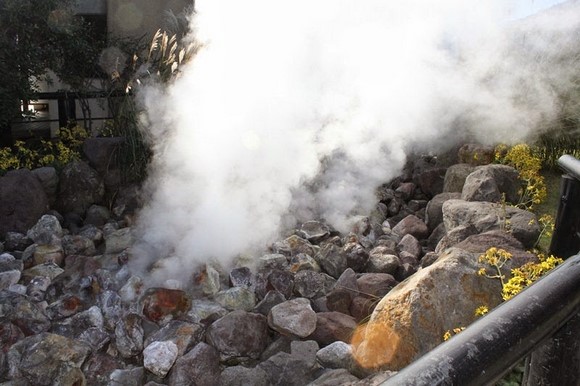

Some of the hells have free foot baths, like this one in Oniishibozu Jigoku.
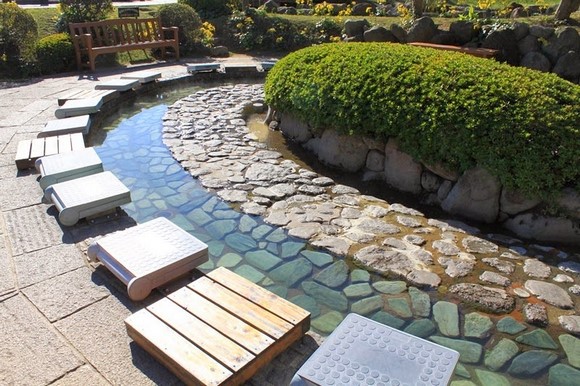
After leaving Oniishibozu Jigoku, we descended into another hell: Umi Jigoku. Umi Jigoku is the largest and most beautiful of the hells. If you only visit one, this should be it.
The entrance to Umi Jigoku.
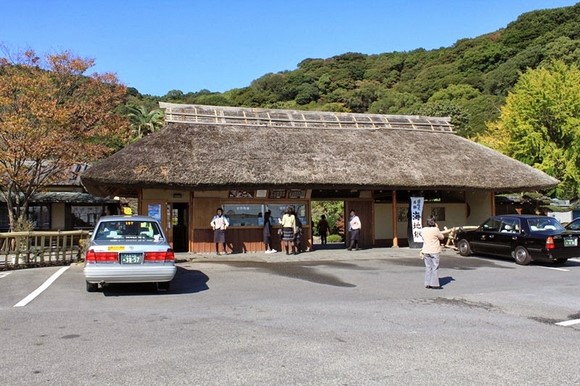
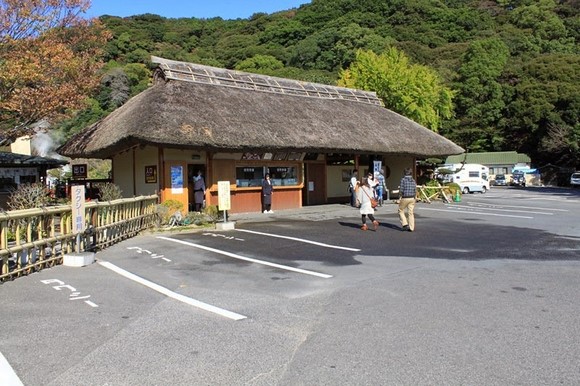
At least there are buns to eat in hell![]() .
.
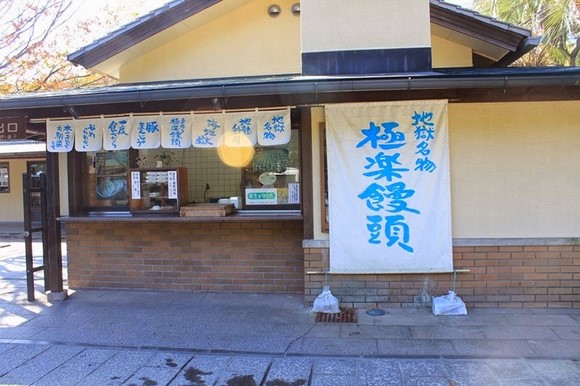
Umi Jigoku covers a large area and has a sizable souvenir shop inside.

The blue hot spring in Umi Jigoku is the most beautiful of all the hells. The steam rises periodically and then dissipates, creating an interesting cycle.

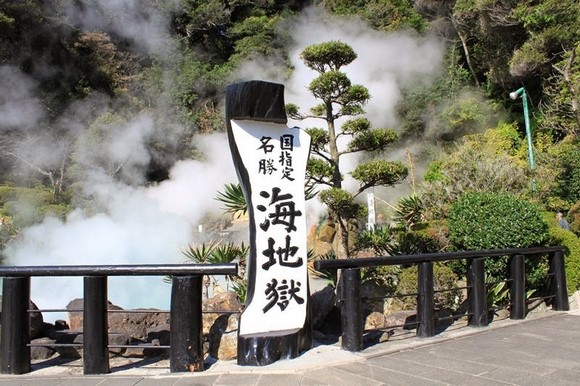
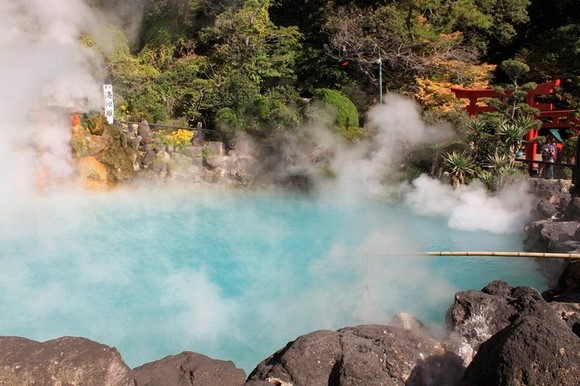
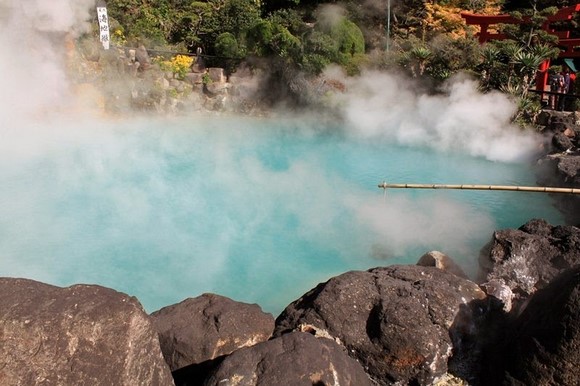
There’s also a mini shrine next to the hot spring
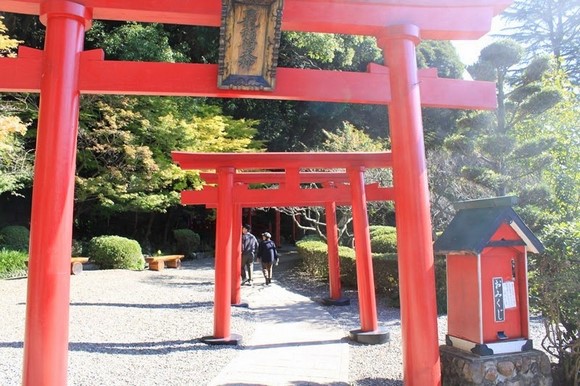
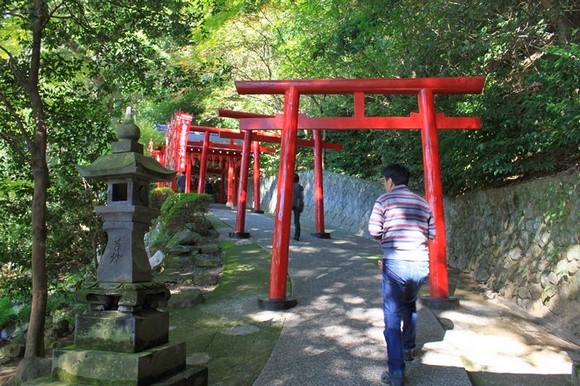
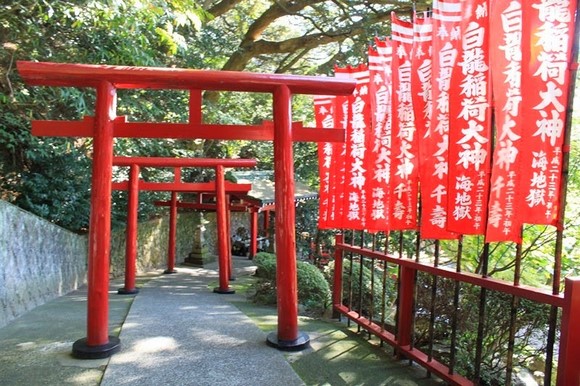
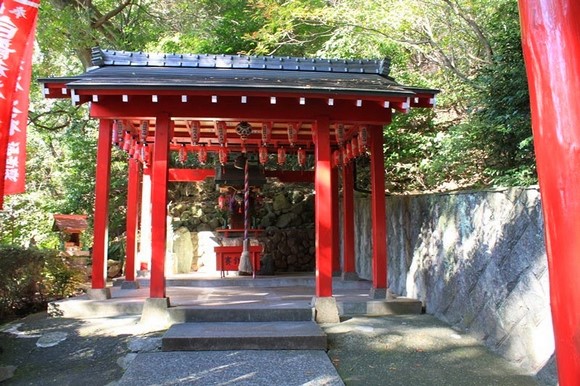
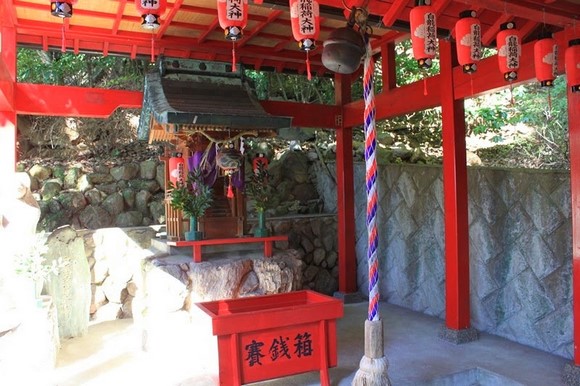
The Sea Hell (Umi Jigoku) also features a small greenhouse with a lotus pond
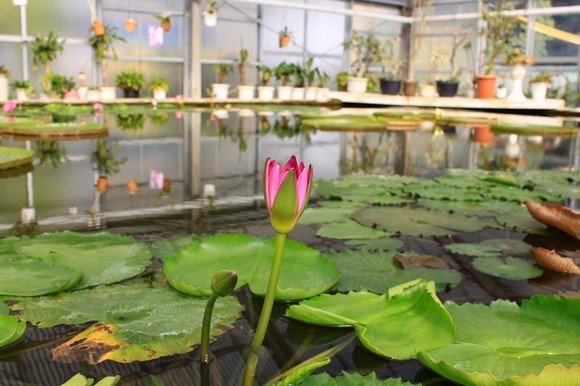
The Sea Hell also has other forms of hot springs
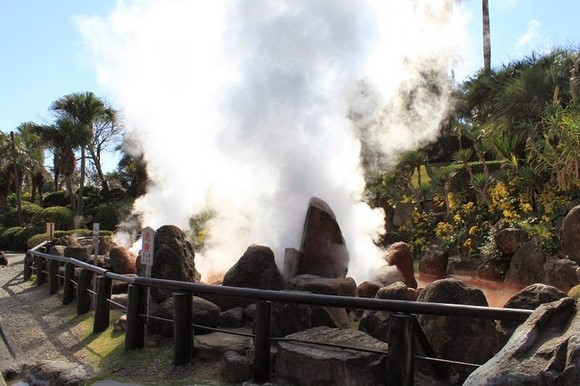
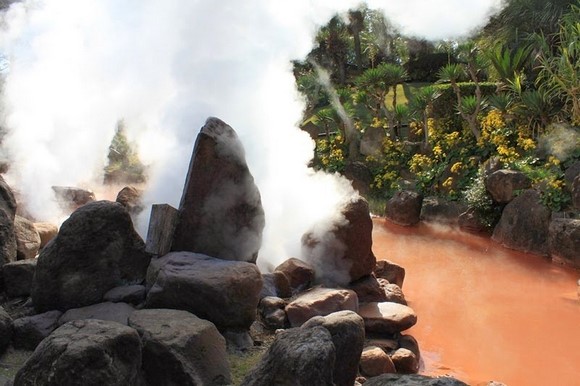
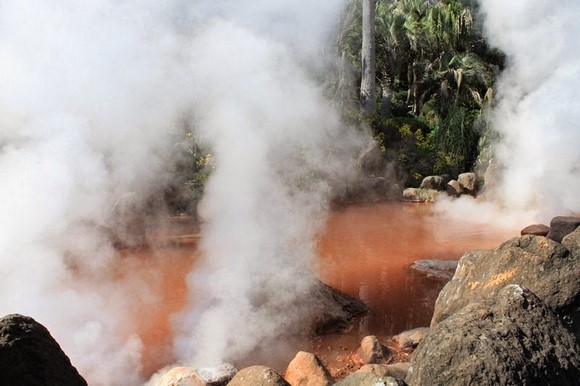
The Sea Hell also has a foot bath
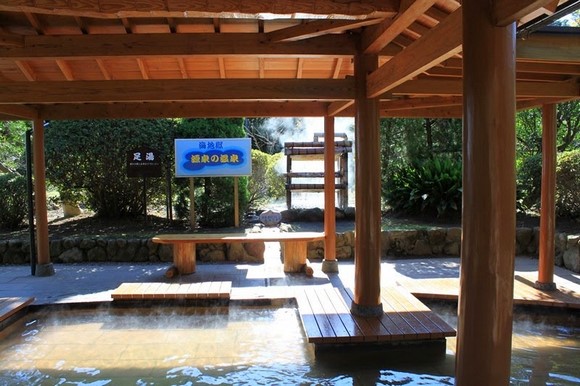
After leaving the Sea Hell, we arrived at the Mountain Hell (Yama Jigoku)
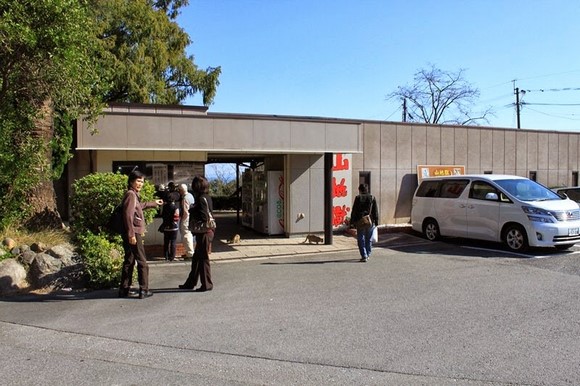
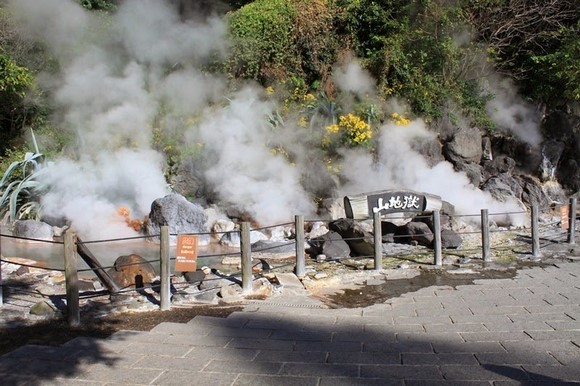
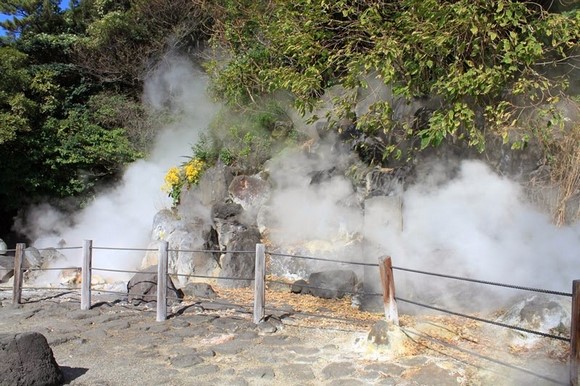
The Mountain Hell keeps some animals, making it feel like a small zoo.
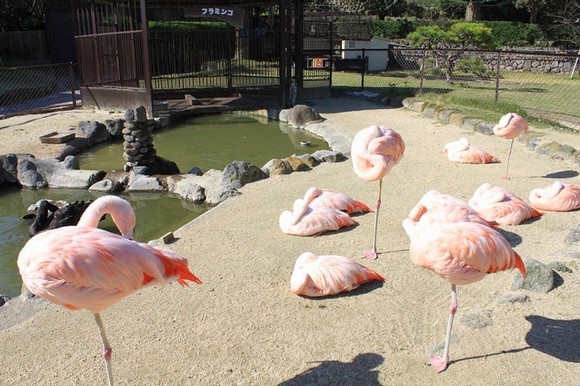
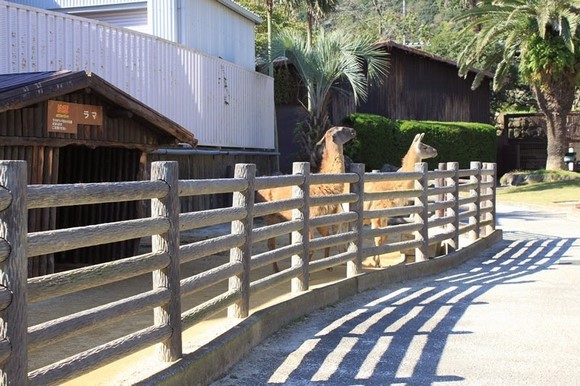
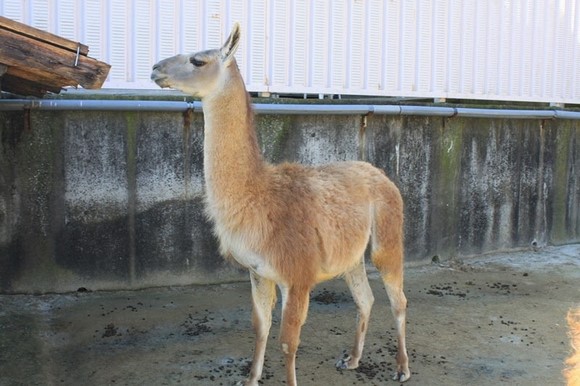
Next, we went to Kamado Hell (Kamado Jigoku)

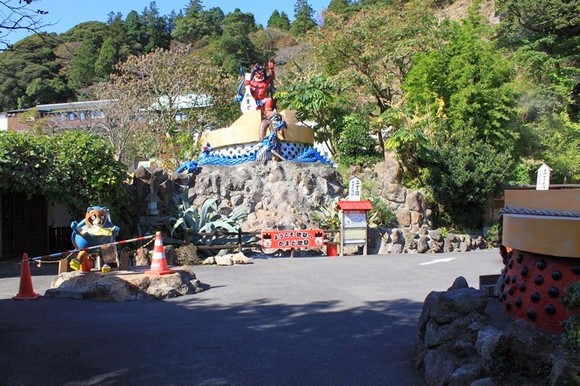
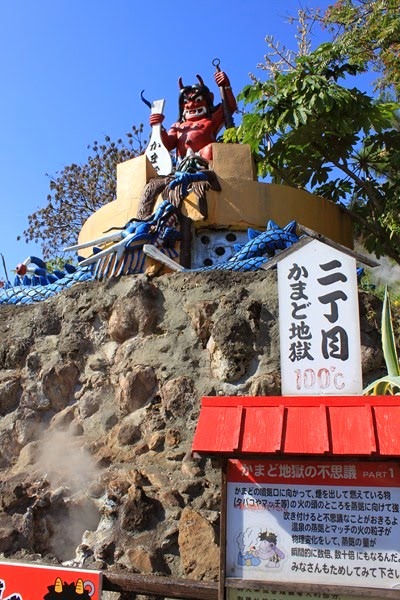
Here, there are some hot springs covered with wooden boards. You can open small lids to feel the steam’s heat, which is said to have skin-beautifying effects.
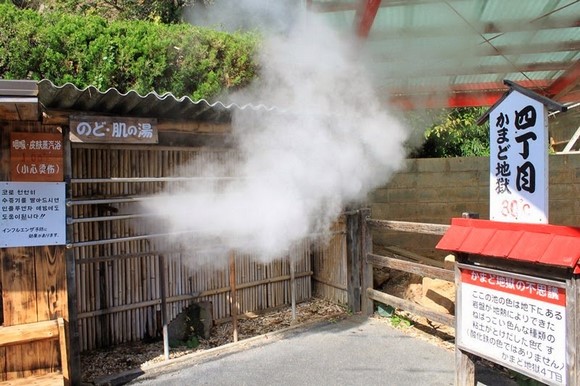
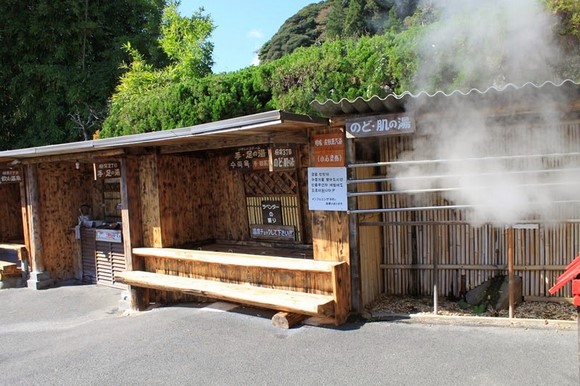
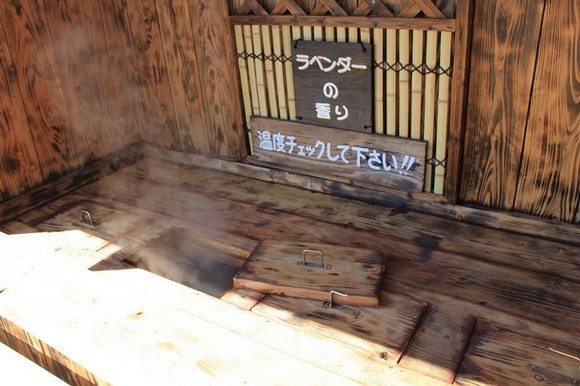
There’s also a foot bath here for soaking your feet
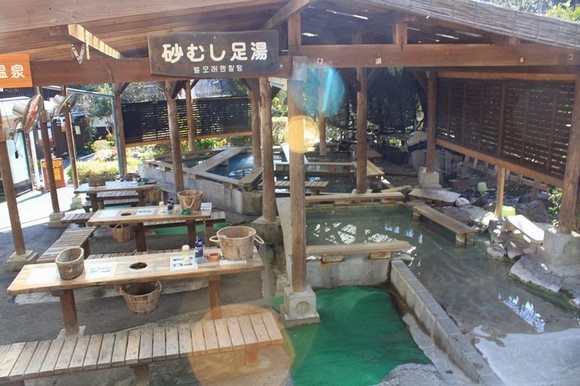
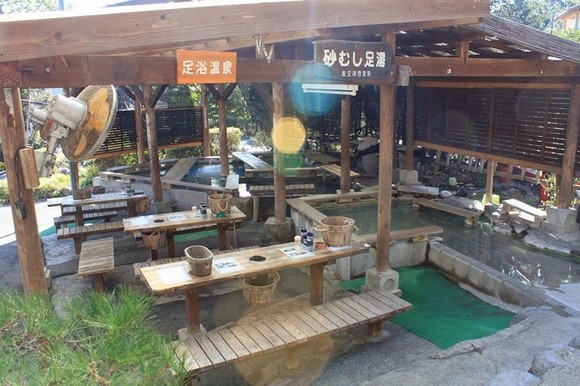
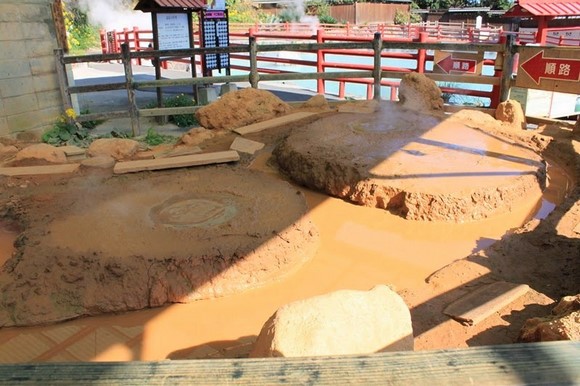
The highlight of Kamado Hell is this color-changing hot spring
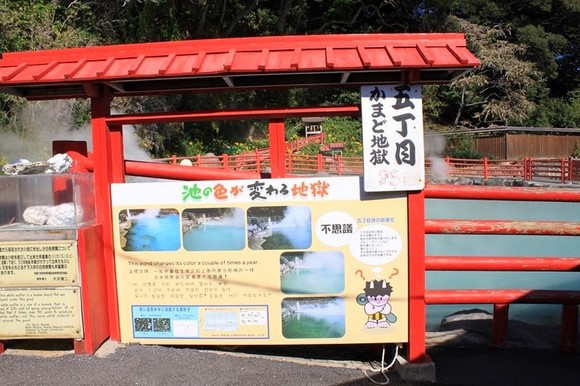
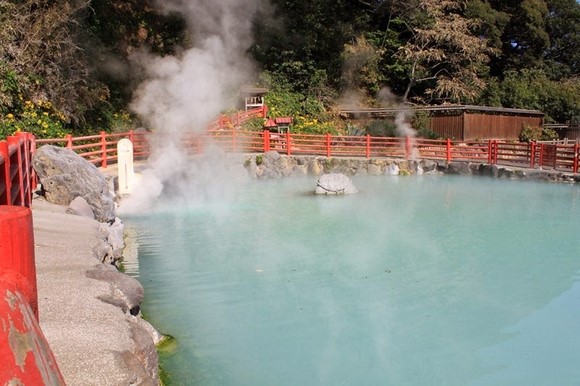
So much steam!
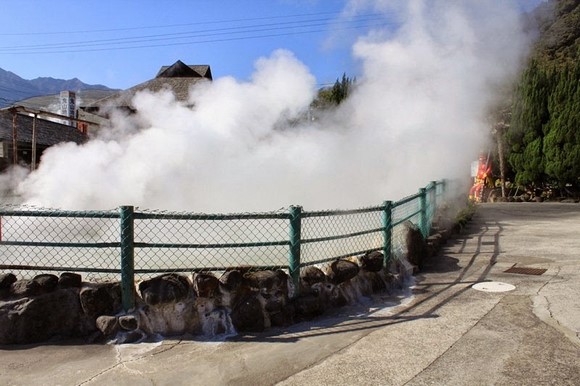

On the way from Kamado Hell to Shiraike Hell, there’s a small souvenir street
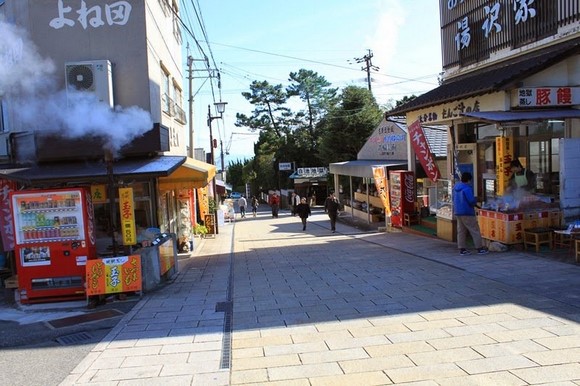
Shiraike Hell (White Pond Hell)
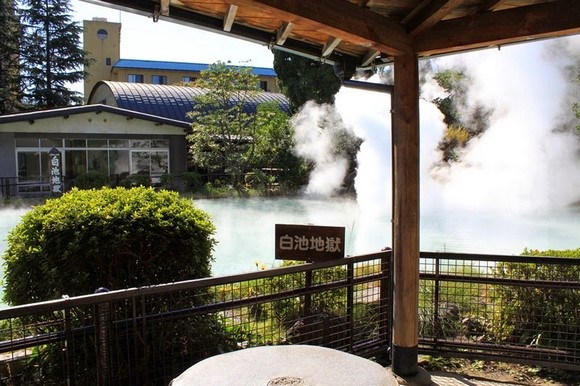
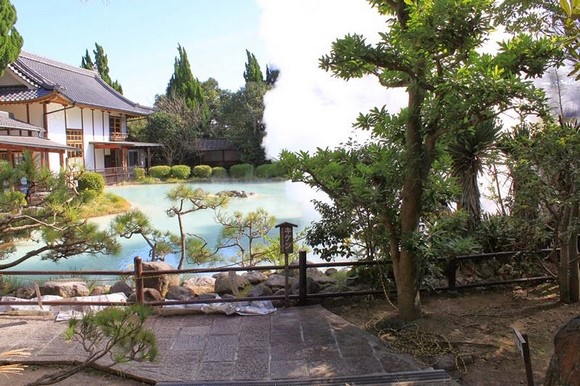
We didn’t dare enter Oniyama Hell because there were too many crocodiles ![]() . However, when we revisited in 2018, we did go inside, and there really were many crocodiles, but they were all behind fences.
. However, when we revisited in 2018, we did go inside, and there really were many crocodiles, but they were all behind fences.
After visiting the Sea Hell, Mountain Hell, Oniishi Bozu Hell, Kamado Hell, Oniyama Hell, and Shiraike Hell, only the Blood Pond Hell (Chinoike Jigoku) and Tatsumaki Hell remained. These two hells are located farther away, so we needed to drive there. However, we took a wrong turn and ended up on a longer route, which unexpectedly led us to an observation deck overlooking Beppu.
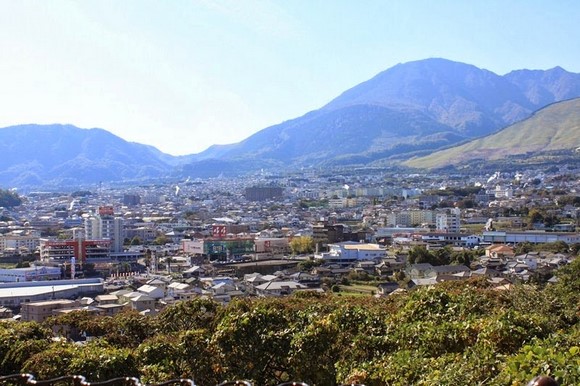

Finally, we arrived at the Blood Pond Hell
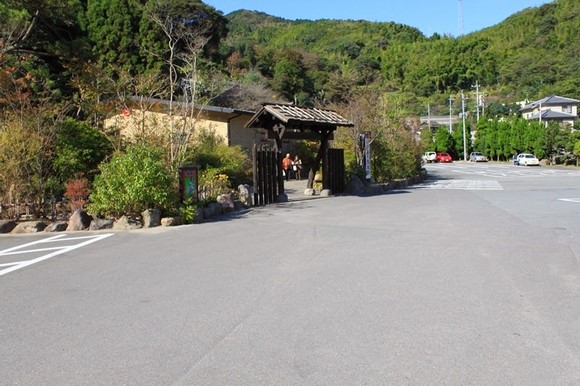
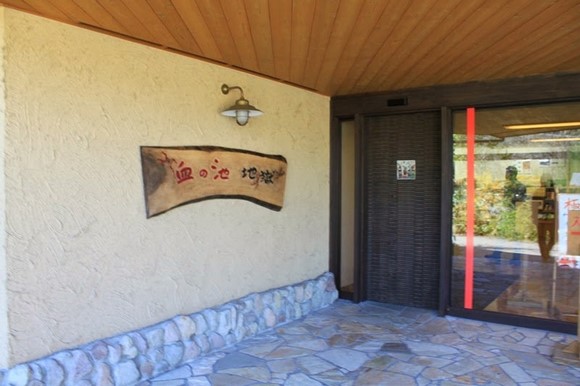
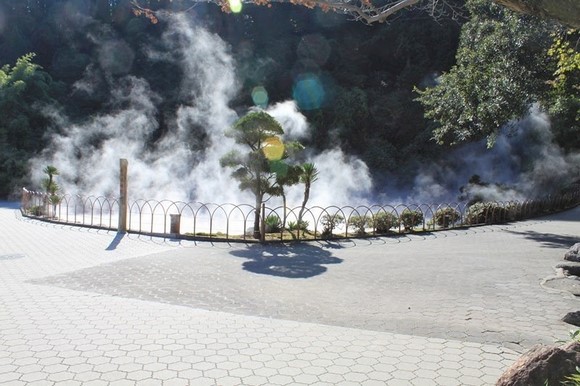
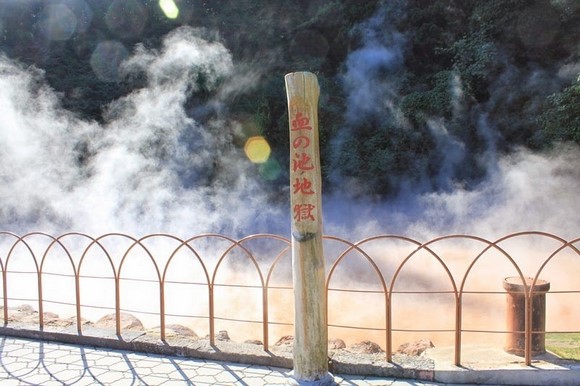
Tatsumaki Hell is actually located near the Blood Pond Hell, but due to time constraints, we decided not to visit. After exploring the Blood Pond Hell, we headed to Yufuin. When we revisited Beppu in 2018, we did go to Tatsumaki Hell, which features an intermittent geyser and is worth seeing.
After touring the Beppu Hells, it was time to leave Beppu and head to our next destination, Yufuin. There’s a highway connecting Beppu to Yufuin, making the drive take only about 50 minutes. The highway is wide and easy to navigate.
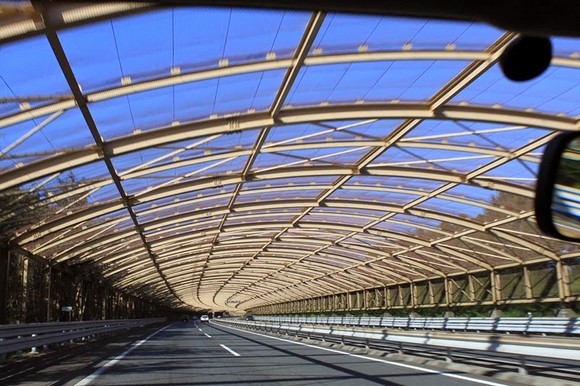
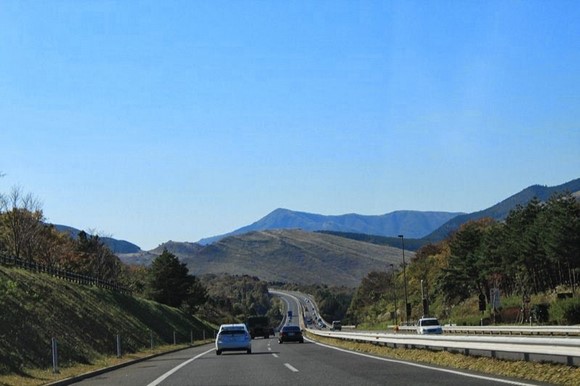
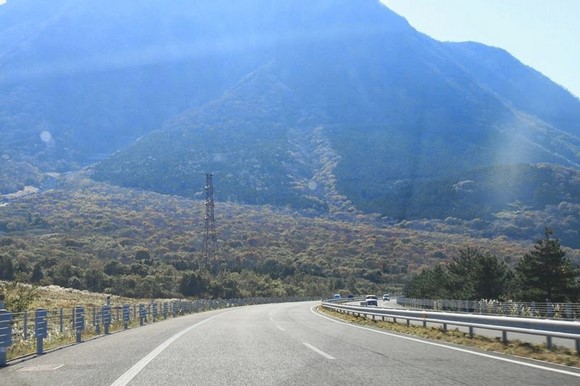
After leaving the highway, we still had to drive a bit further on regular roads to reach Yufuin. The area is surrounded by mountains, so the roads are relatively narrow. There’s also a Self-Defense Force base here, so military vehicles frequently pass through.
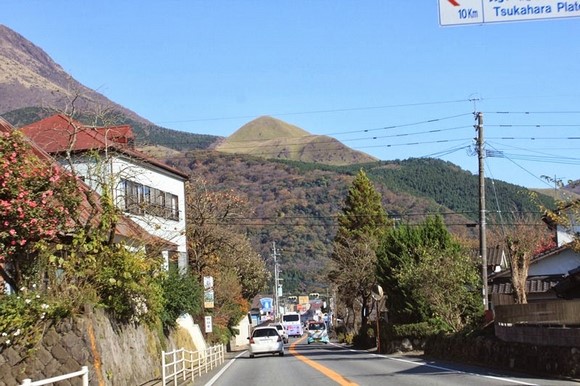
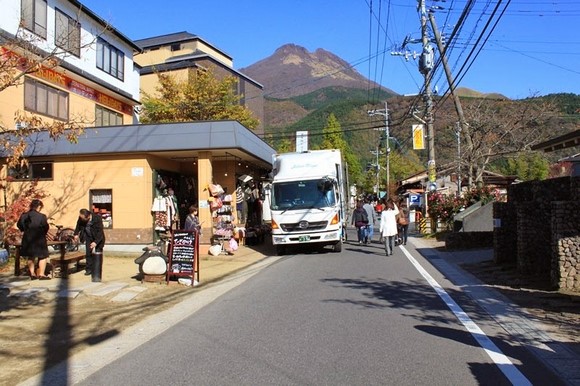
The attractions in Yufuin are mainly distributed along the approximately 1.5-kilometer hot spring street between JR Yufuin Station and Kinrinko Lake, with many parking lots available nearby.
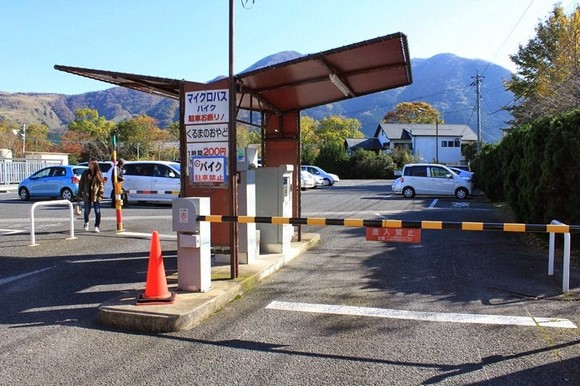


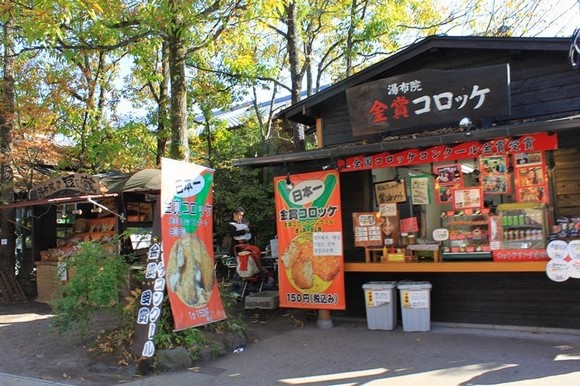
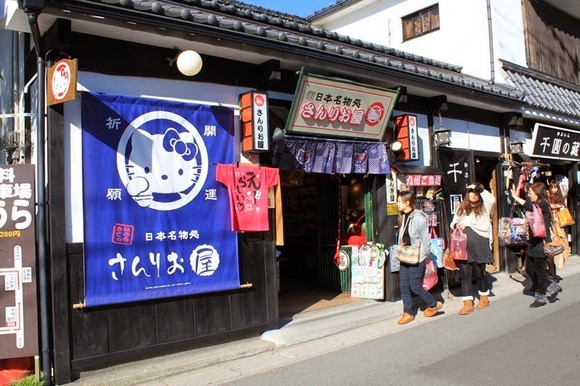
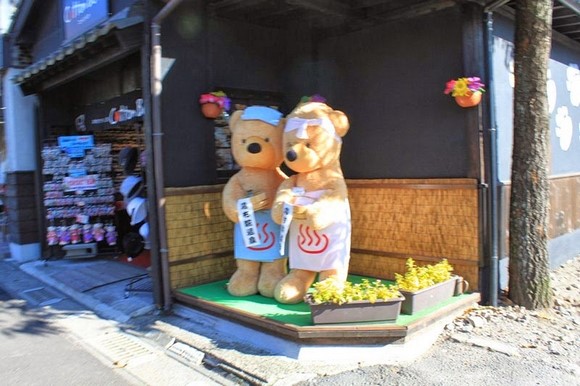
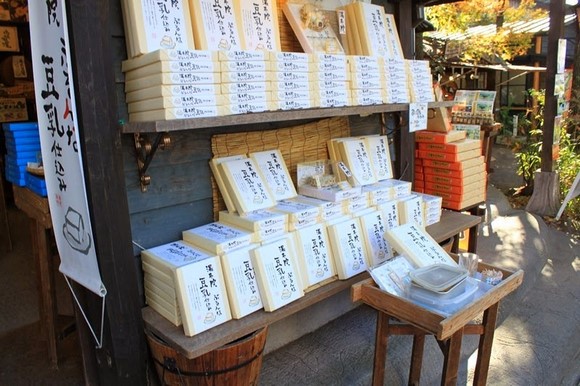
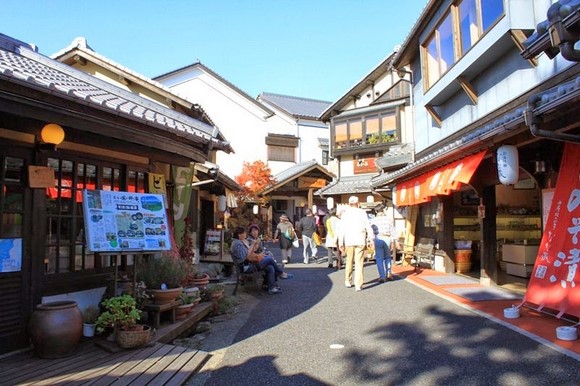
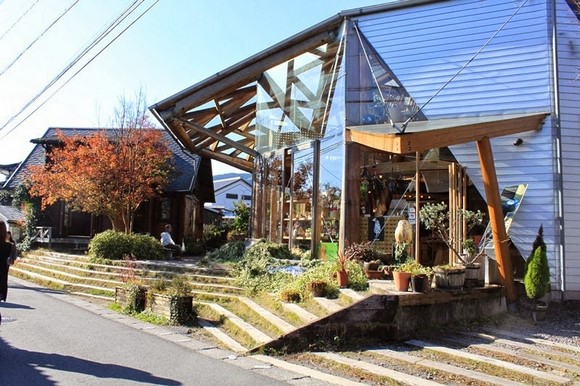
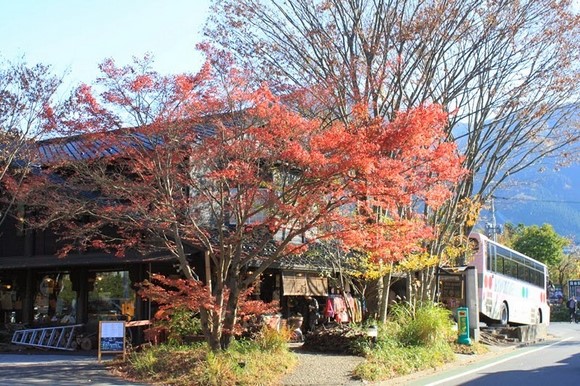
These grilled beef skewers were bought from a roadside stall, but the taste was just so-so.
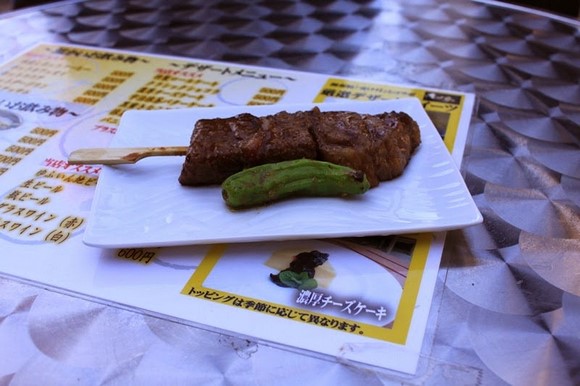
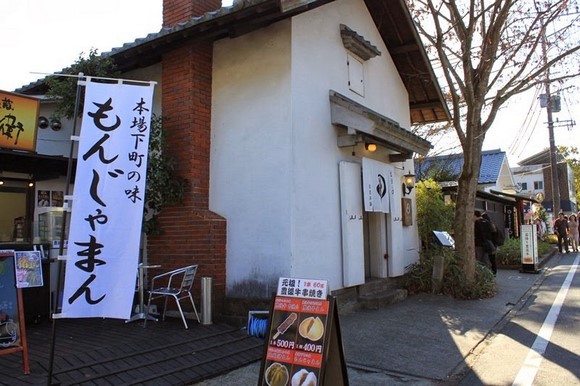
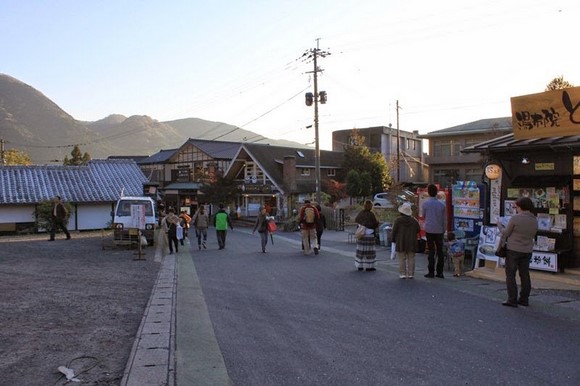
At the end of the hot spring street is Kinrinko Lake, said to be the best spot in Yufuin for autumn foliage, but there were no red leaves when we visited.
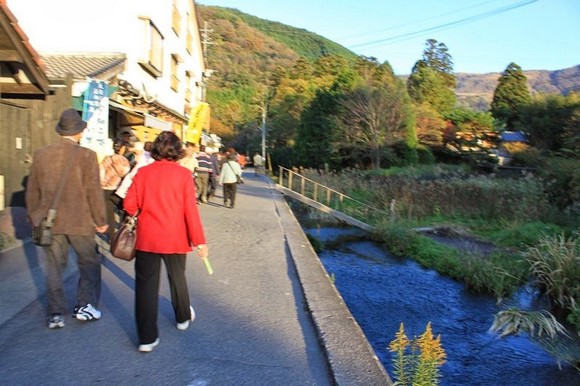
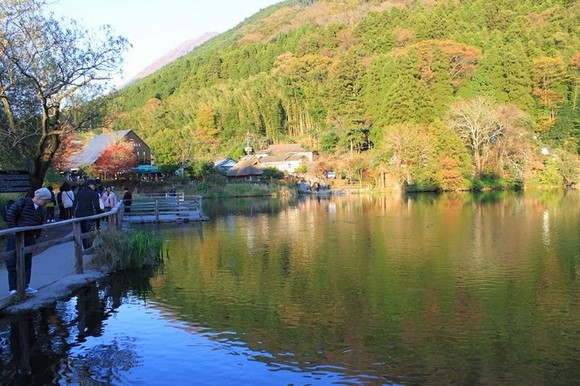
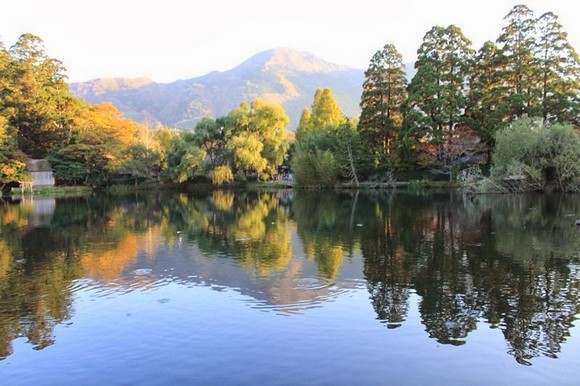
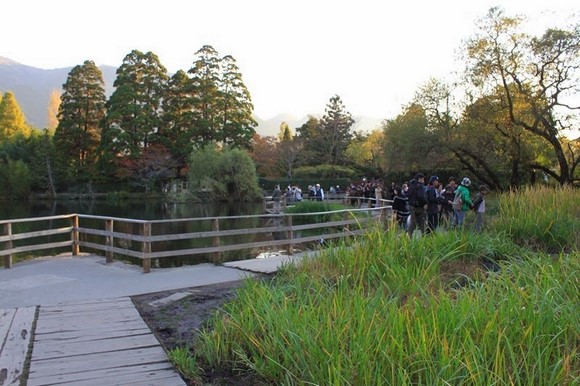
Later, we went to B-Speak, a cake shop recommended by travel guides, to buy cakes.
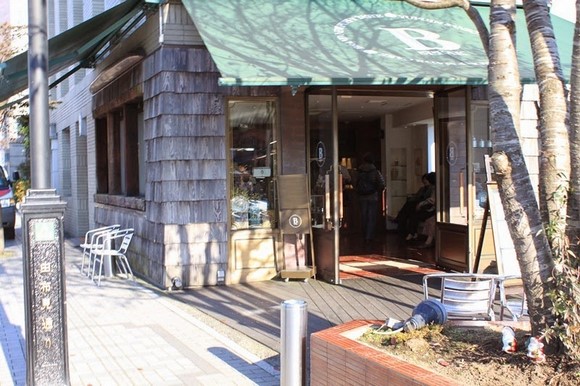
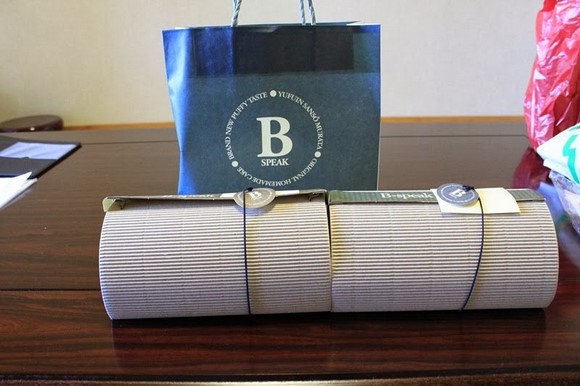
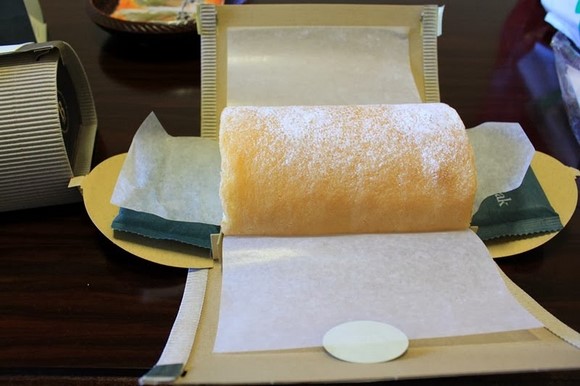
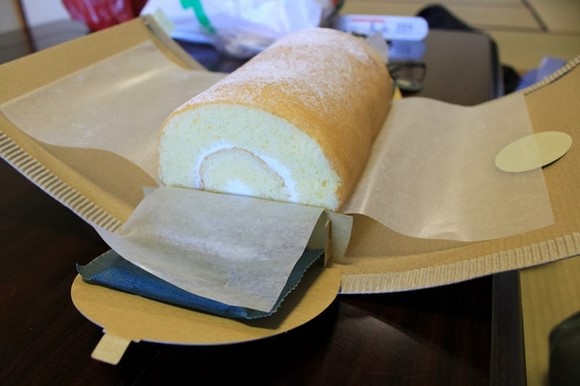
We also bought some Yufuin Kogen Pudding.
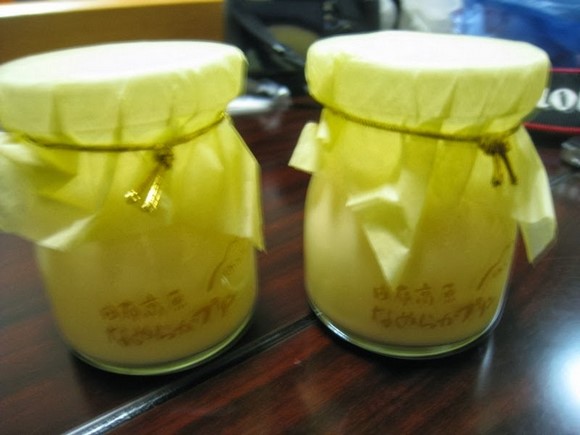
After that, we headed to the hot spring inn where we would stay for the night: Yufuin Onsen Asagiri no Mieru Yado Hanayuri.
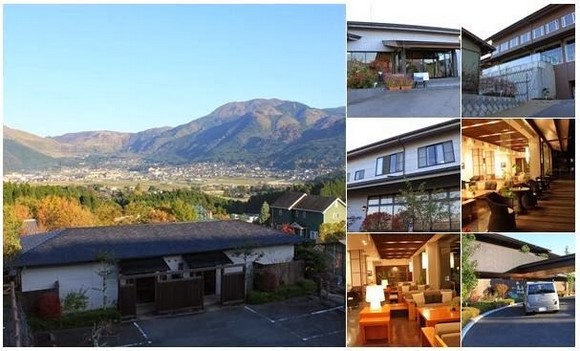
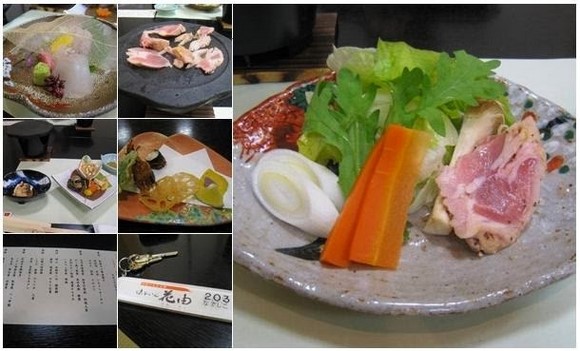
– Day 3 End –
Day 4: Visiting Kuju Dream Bridge and Aso Volcano
Today, we would travel from Yufuin to Kumamoto City, covering approximately 120 kilometers. Along the way, we planned to visit two major attractions: Kuju Dream Bridge and Aso Volcano, before staying overnight in Kumamoto.
In the morning, we soaked in the hot springs again and had the chance to see Yufuin covered in morning mist. Unfortunately, we didn’t have our phones or cameras with us, so we couldn’t capture the beautiful scenery.
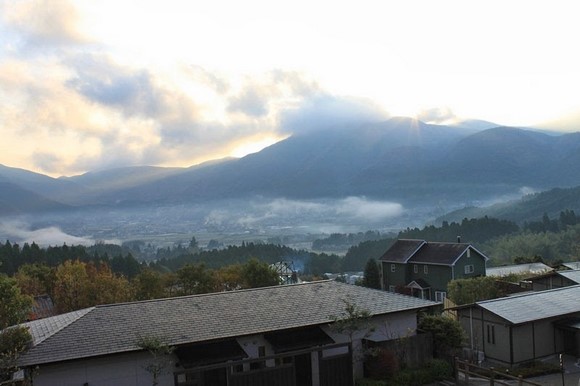
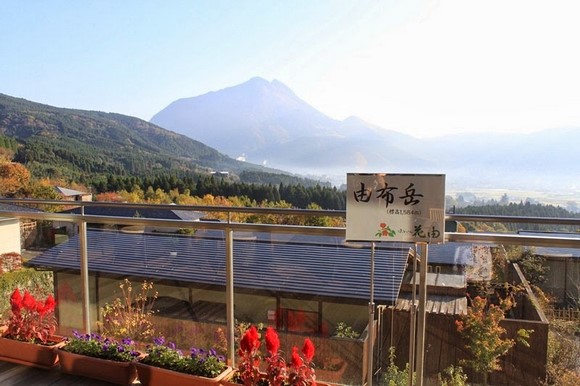
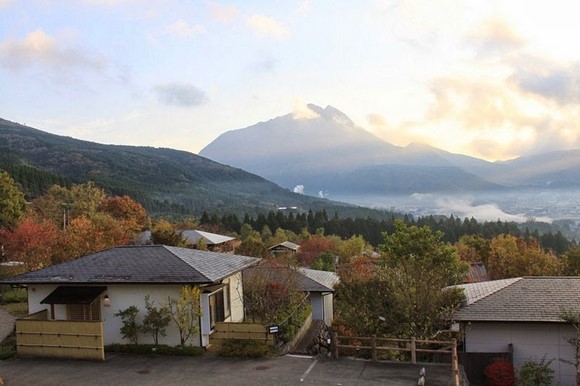
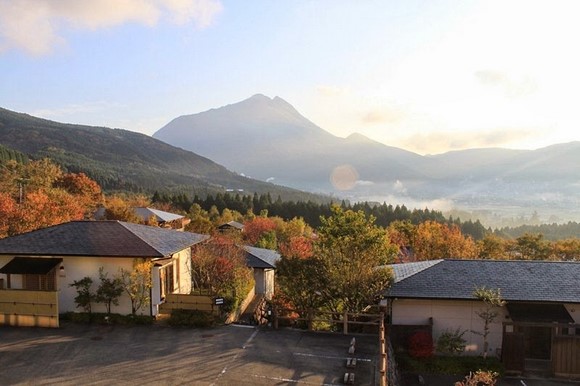
Breakfast
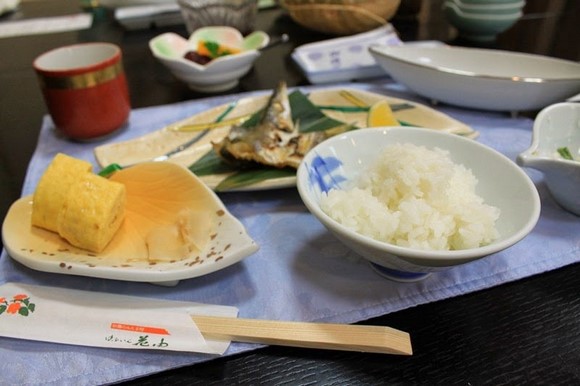
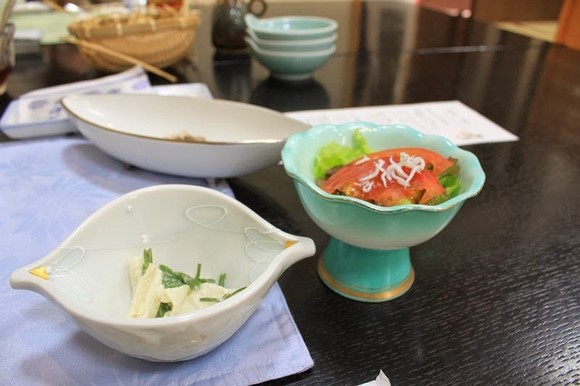
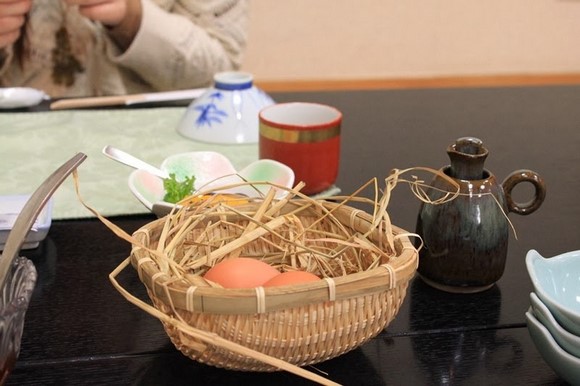
Since today’s driving distance was quite long, we checked out after breakfast and set off for our first destination: Kuju Dream Bridge.
Kuju Dream Bridge spans the Kujuukkei Valley in Kuju Town, Oita Prefecture, about 30 kilometers from Yufuin. We took a short stretch of highway from Yufuin, exited at the Kuju IC on the Oita Expressway, and then drove along local roads toward the mountains. It took about 40 minutes to reach the bridge.
The road to Kuju Dream Bridge had many twists and turns.
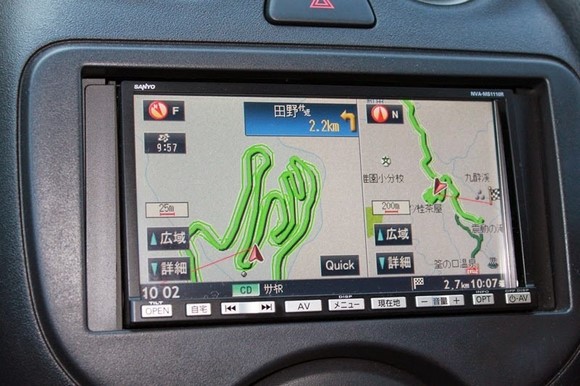
There was a parking area midway up the mountain, where we stopped to admire the beautiful view of the Kujuukkei Valley.

Finally, we arrived at Kuju Dream Bridge. As expected, it was a popular attraction, with many tour buses and private cars already parked there early in the morning.
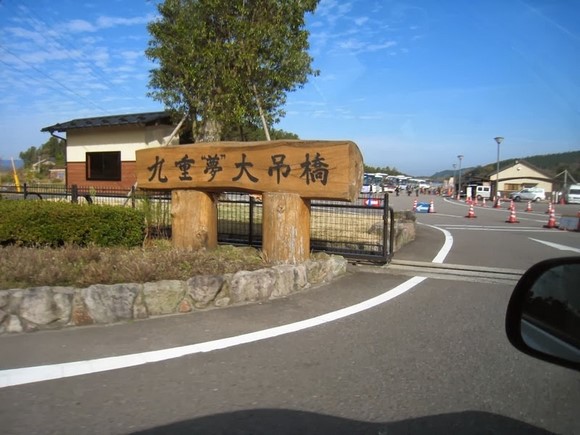
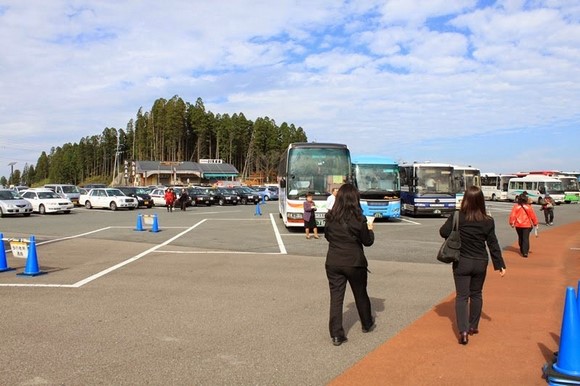
First, we bought admission tickets.
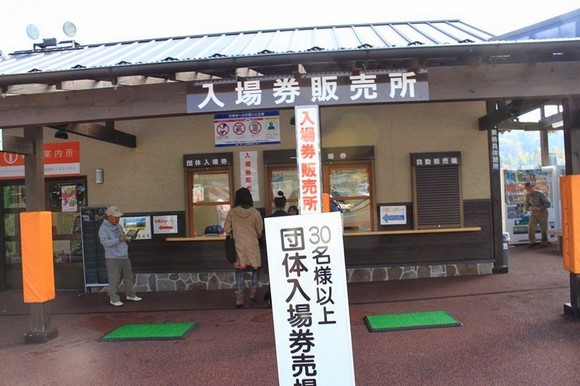
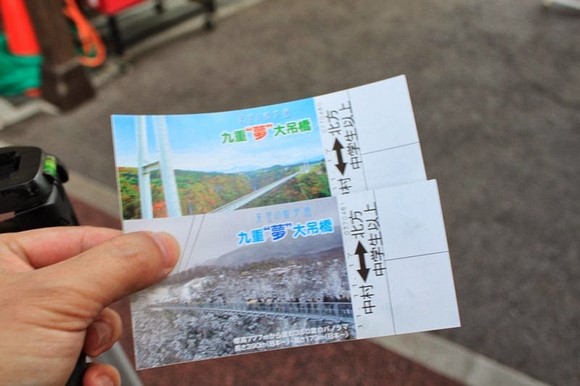
Entrance to the suspension bridge
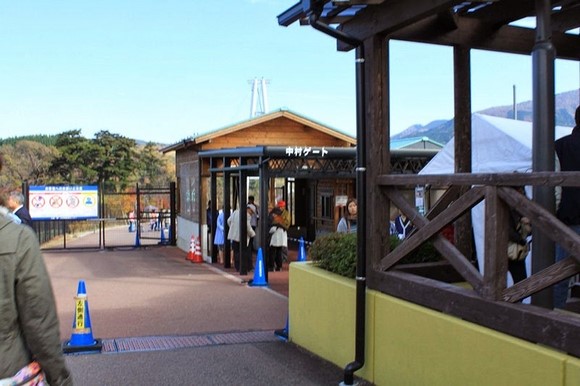
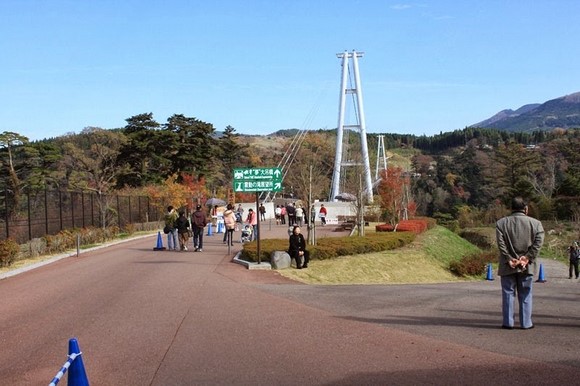
Kuju Dream Bridge spans the Kujuukkei Valley, with entrances on both the east and west sides. However, the main entrance is located on the west side of the valley.
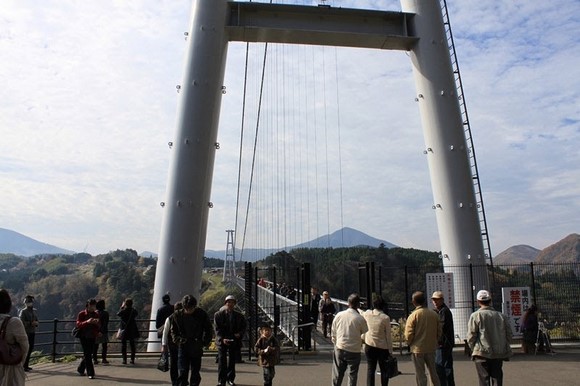
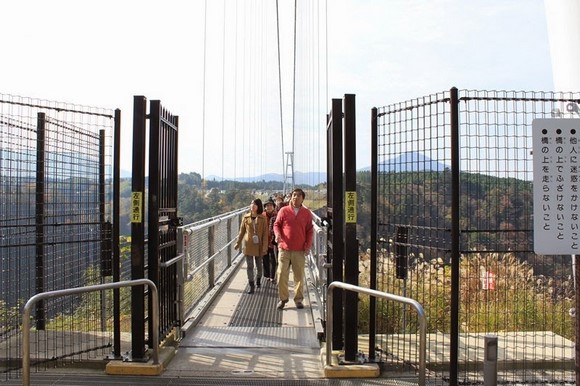
The bridge wasn’t very wide, barely enough for two people to pass side by side. It also swayed slightly when crowded or during strong winds.
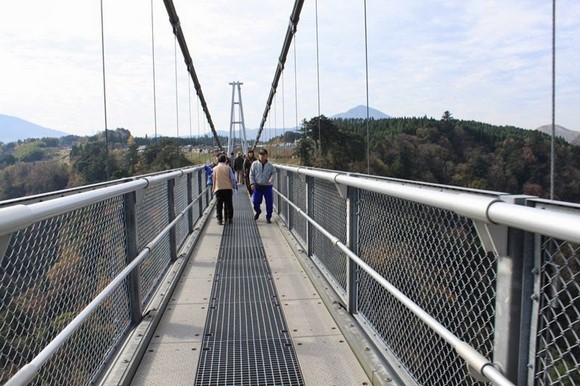
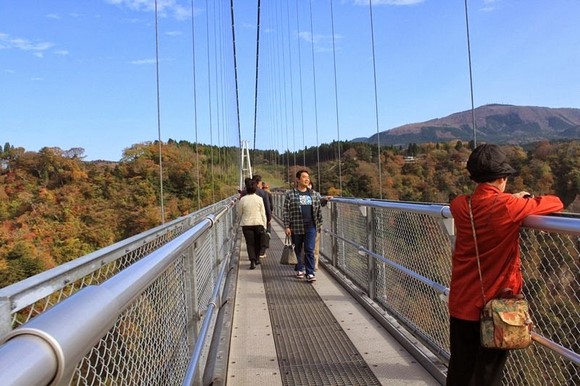
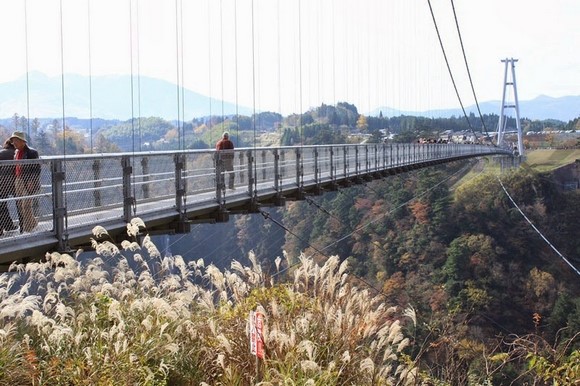
The Shindou no Taki waterfall near the Kuju Dream Grand Suspension Bridge.

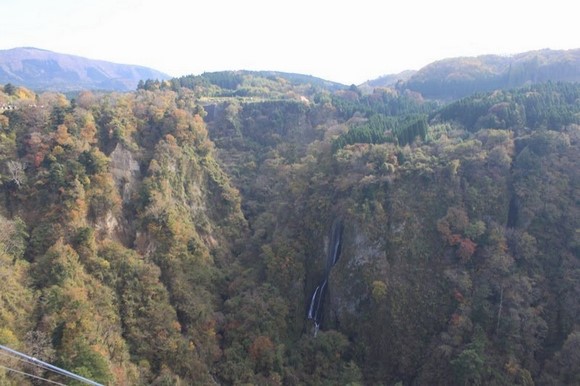
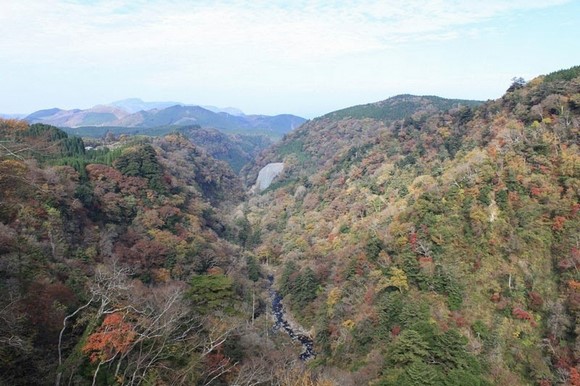
After leaving the Kuju Dream Grand Suspension Bridge, we headed towards Mount Aso. The distance from the bridge to Mount Aso is about 60 kilometers. Since there are no highways, the drive takes over an hour and a half.
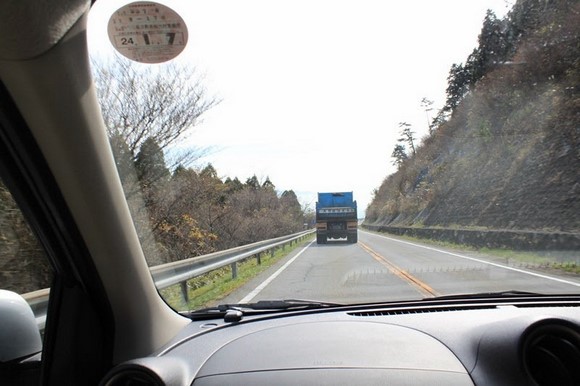
This area is part of the highlands, offering unique scenery.
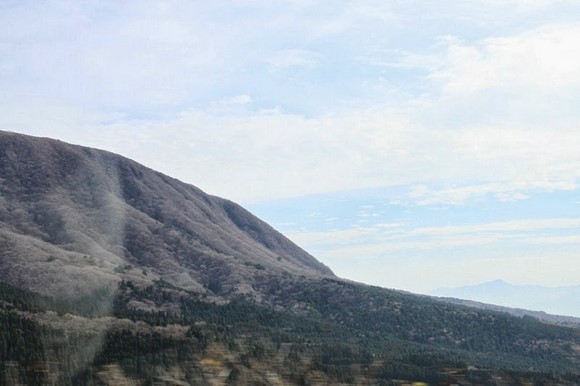
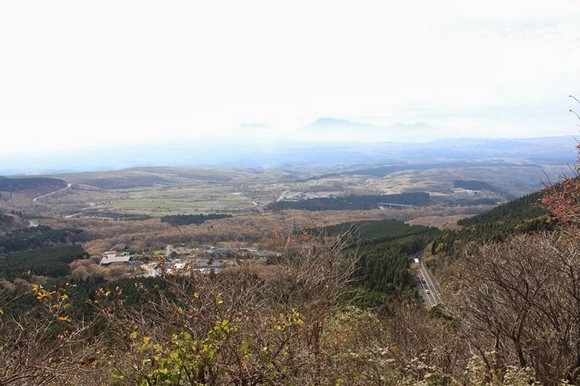
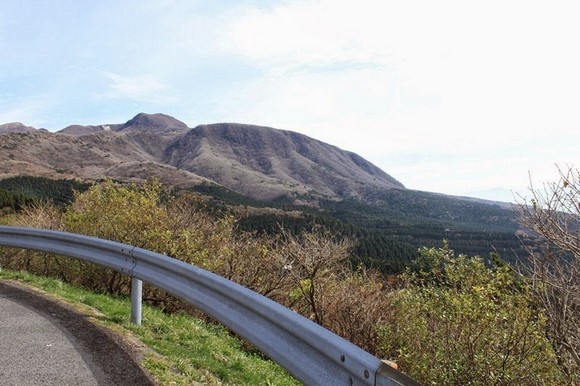
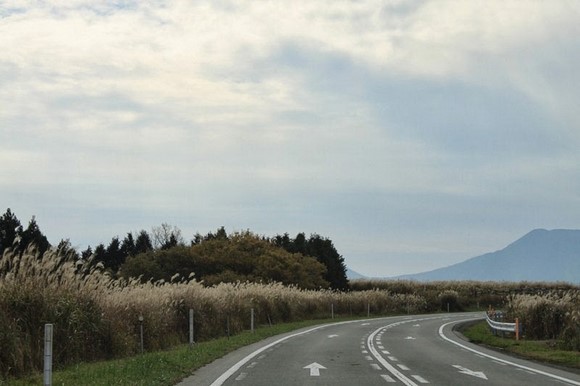
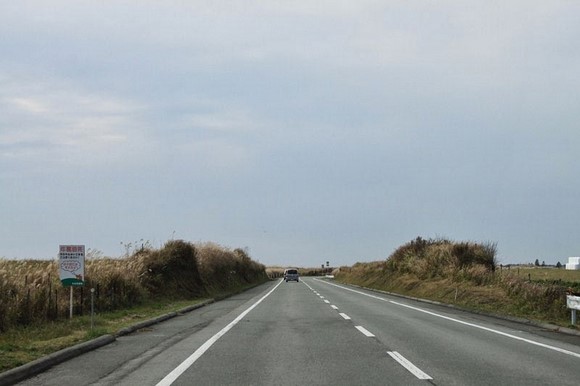
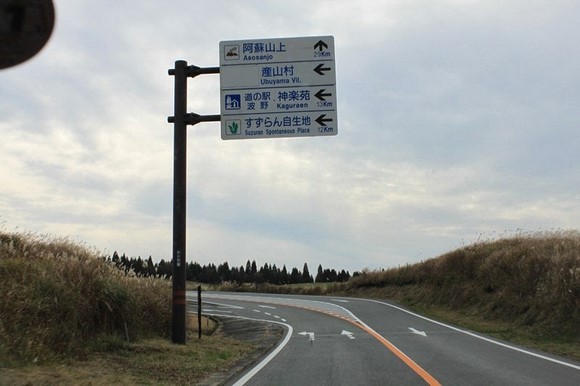
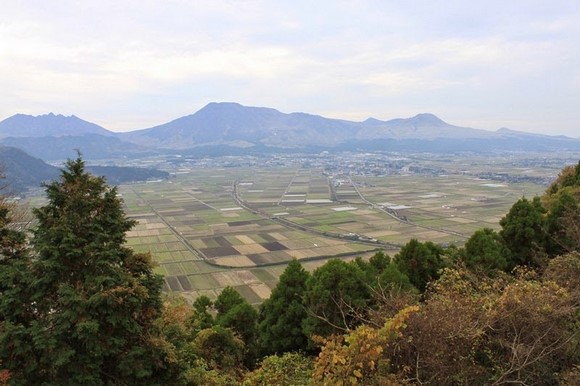
After an hour’s drive, we finally arrived at Aso Station at the foot of Mount Aso. If you take the train, you’ll need to transfer to a bus here to go up the mountain.
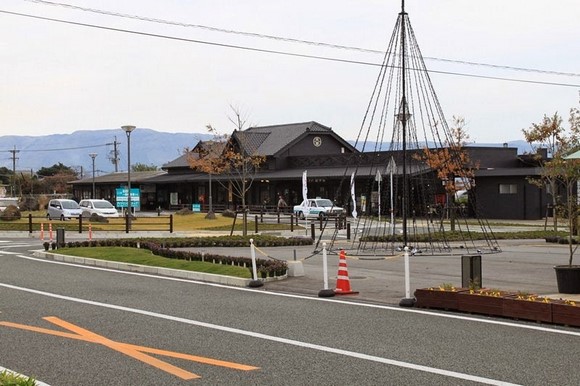
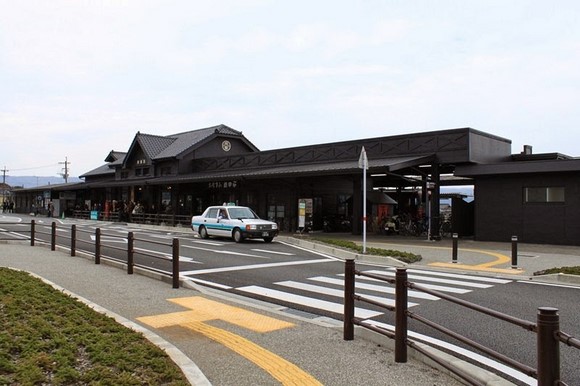
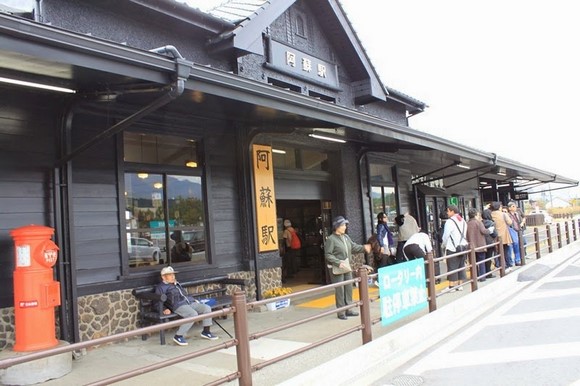
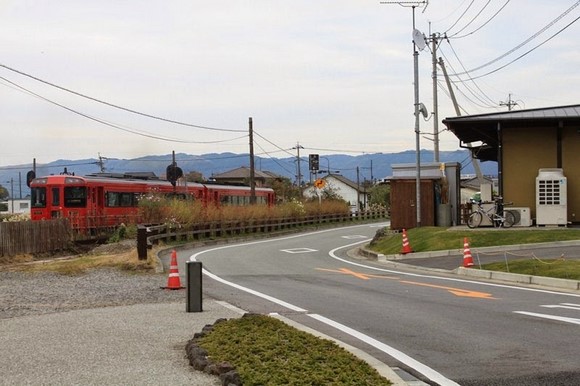
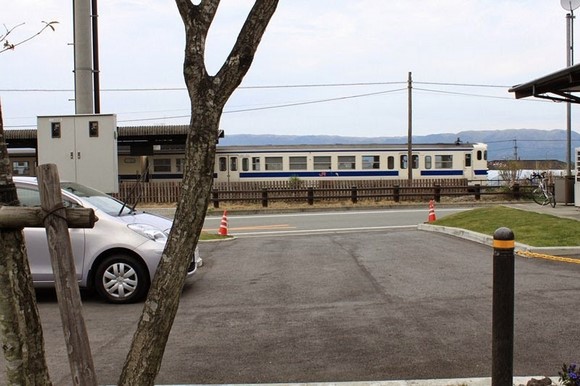
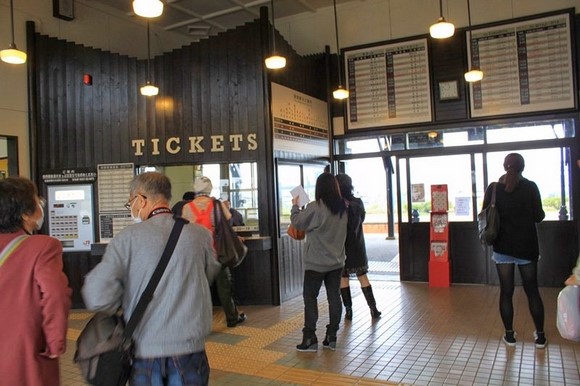

Yesterday in Yufuin, we bought two cakes from B-Speak. We ate one yesterday and saved the other for today, having it outside Aso Station as our lunch.
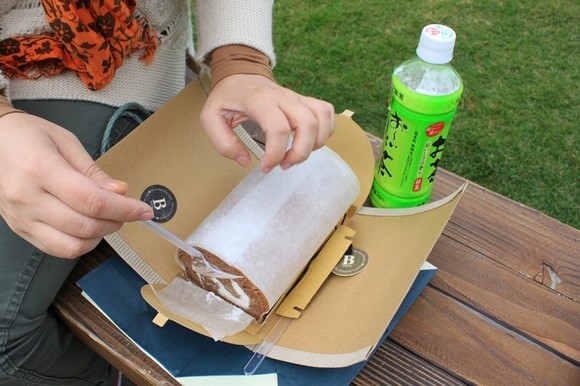
From Aso Station to Mount Aso, it takes about another half-hour drive. After leaving the station, the uphill road is lined with towering trees, making it feel like entering a forest.

But in reality, after ascending, it opens up to a vast grassy highland with beautiful scenery.
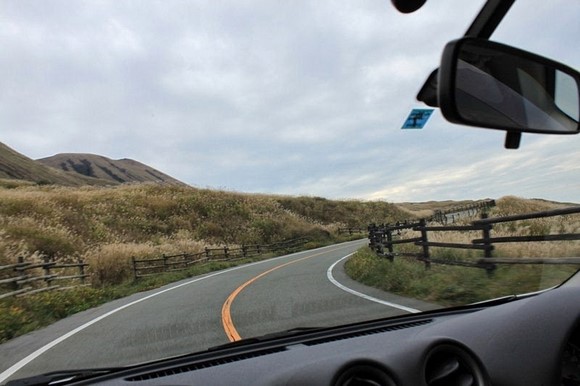
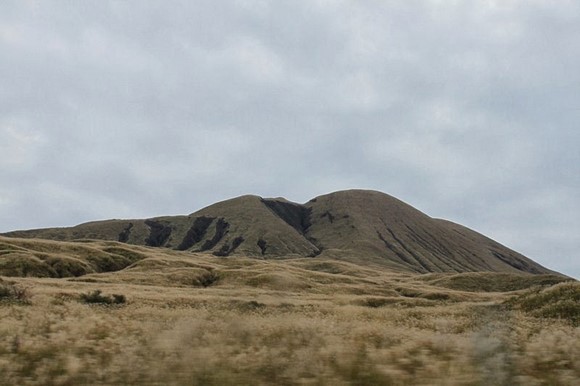
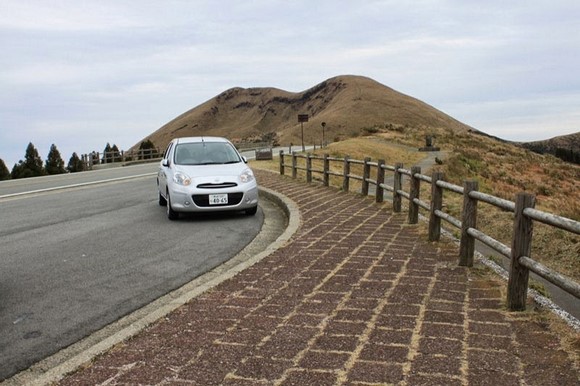
The black mountain ahead is Mount Aso. The grassland at its base is called Kusasenri, and this photo spot is a must-stop for a quick snap.
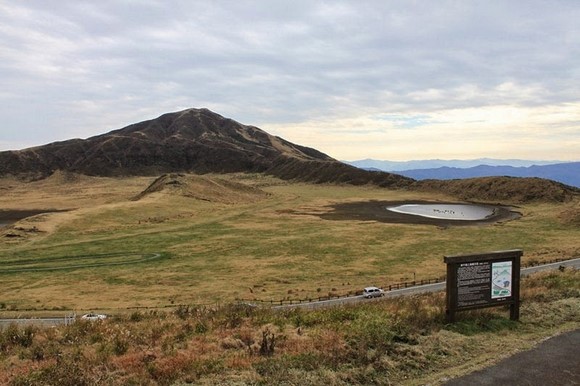
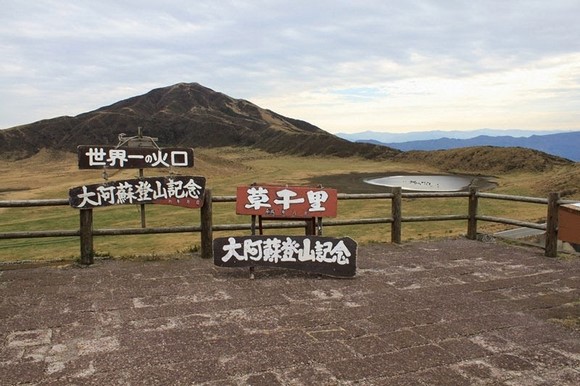
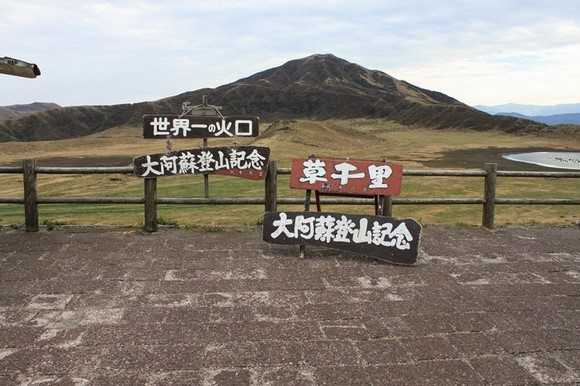
After passing Kusasenri, we reached the cable car station at the base of Mount Aso.
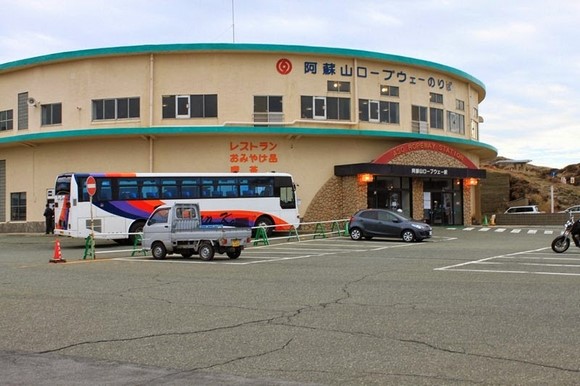
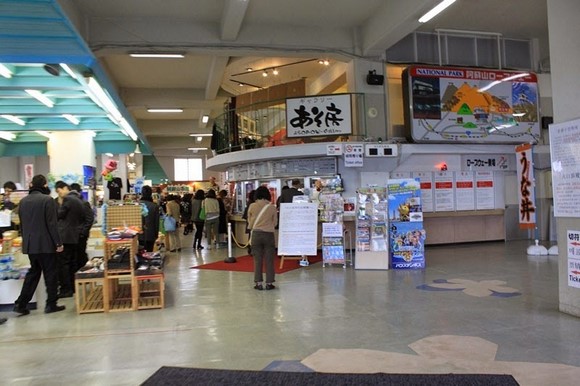
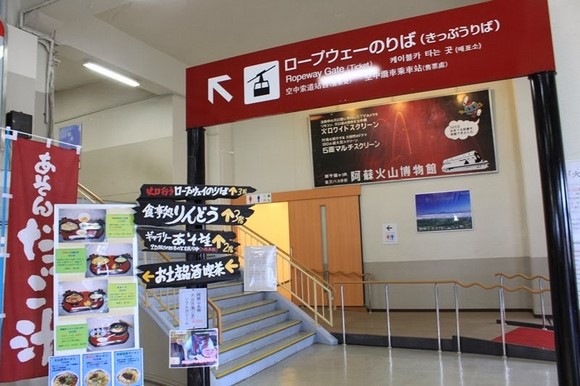
However, the cable car was under maintenance and not operating, which we knew before the trip.
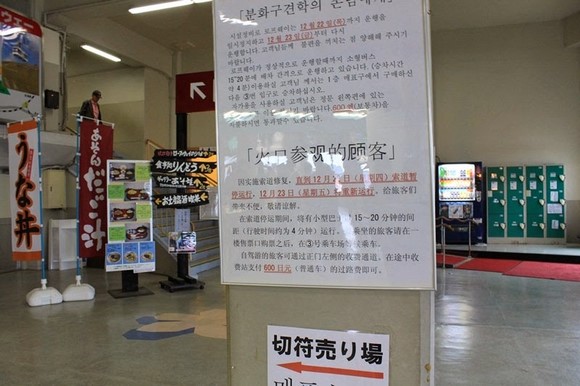
There’s also a small shrine next to the cable car station.
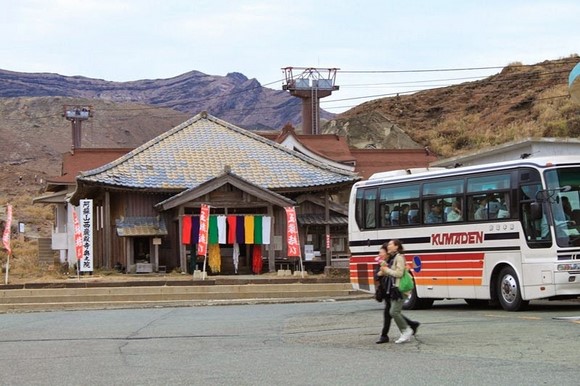
Since the cable car wasn’t running, the only way to reach the crater was by car. There were shuttle buses available next to the cable car station, but since we had our own car, we drove up ourselves. The toll was 600 yen per vehicle. (Note: It’s 1,000 yen now. For details, please refer here.)
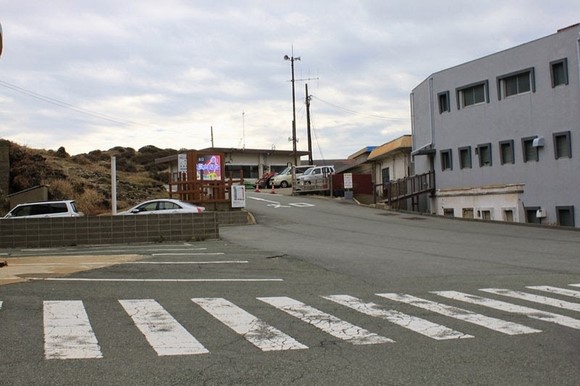
The toll booth on the uphill road.
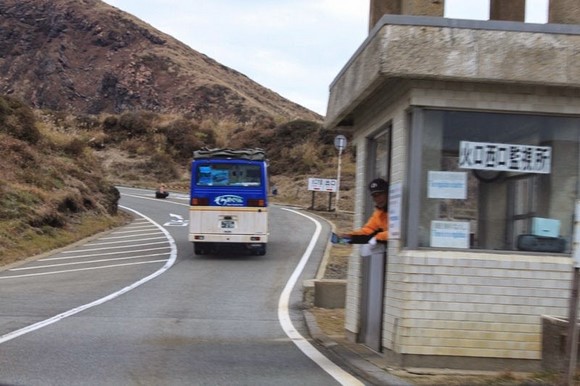
It only takes 4 minutes to drive from the cable car station at the base to the one near the crater.
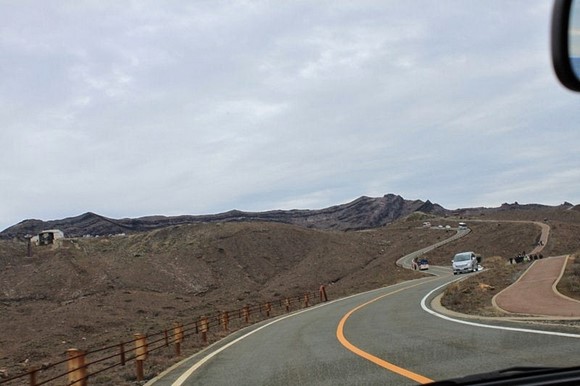
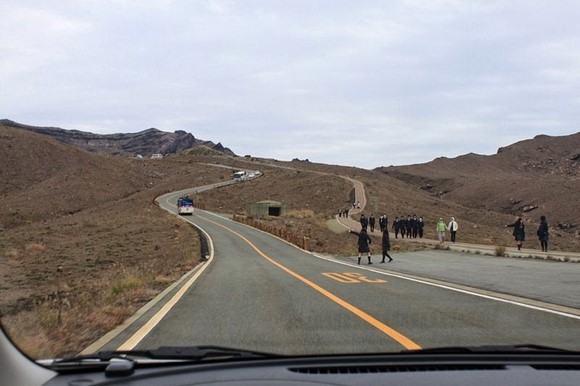
There’s a parking lot outside the cable car station near the crater. After parking the car, we began exploring the crater of Mount Aso.
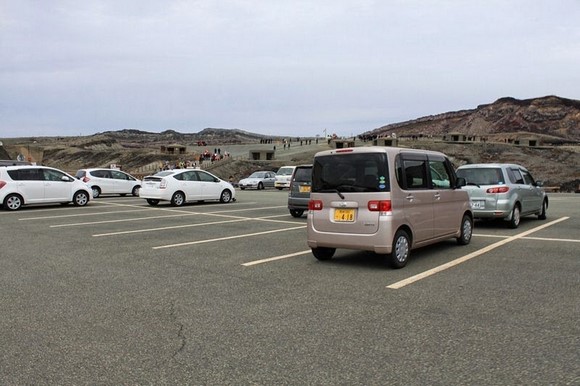
There are alarms installed near the crater that will sound evacuation warnings if the volcano becomes dangerous.
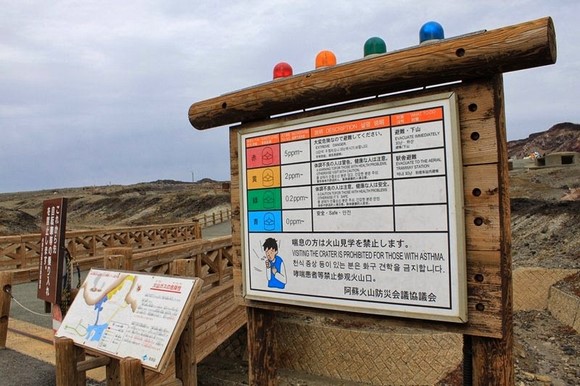
Bunker-like shelters are scattered around the crater.
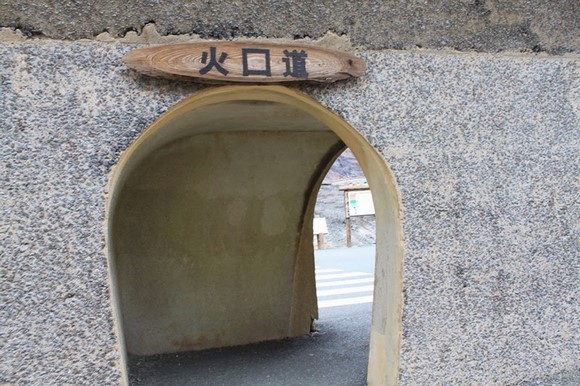
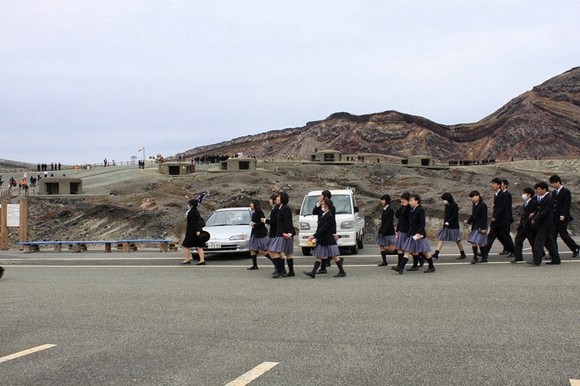
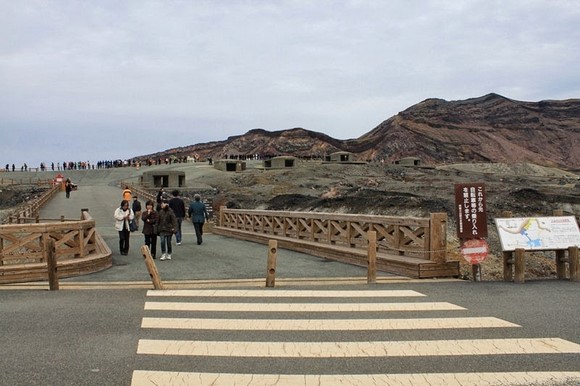
The area around the crater is desolate.
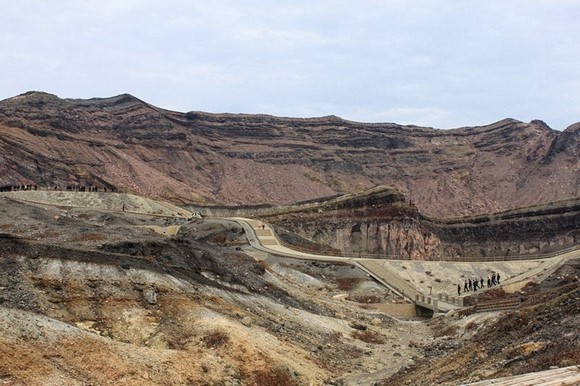
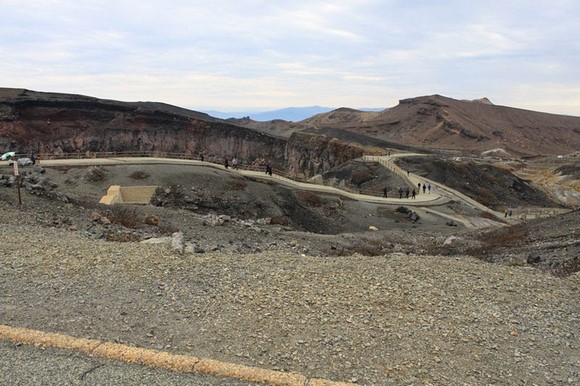
This is the crater of Mount Aso.
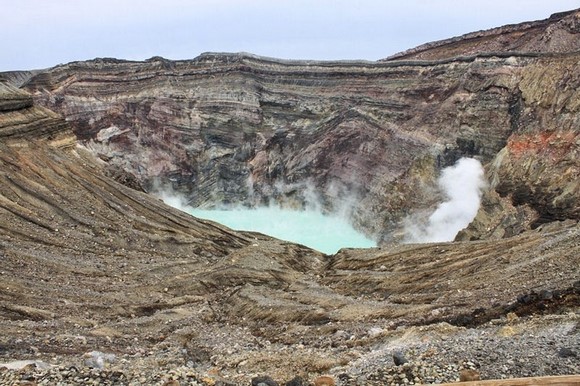
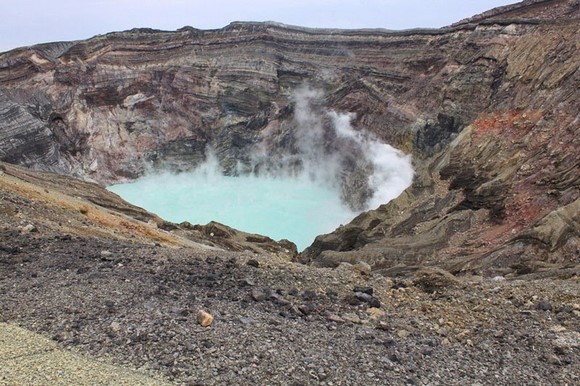
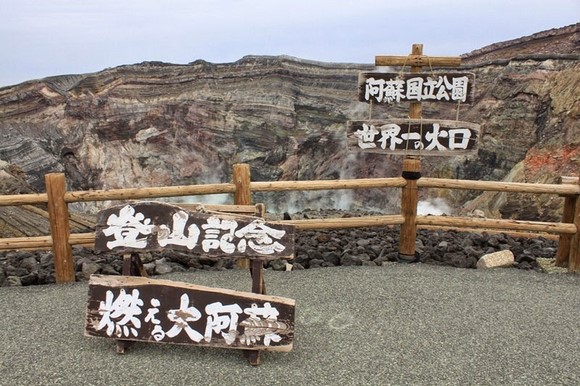
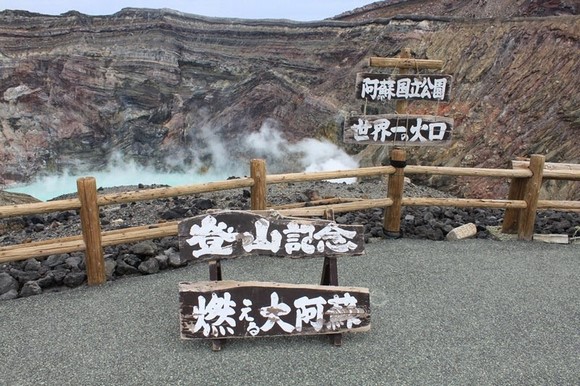
Looking back at the cable car station from the volcano crater.
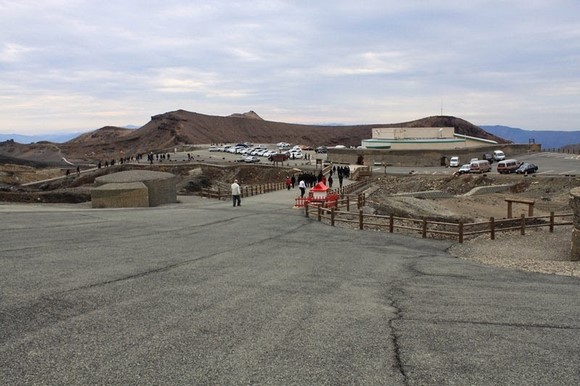
【Important】In recent years, Mount Aso has often been unstable, leading to frequent closures. Before visiting, be sure to check the operational status on the official website.
Our accommodation for the night was in Kumamoto City, about 50 kilometers from Mount Aso, with a driving time of approximately 1 hour and 15 minutes.
This is the hotel we stayed at tonight, called Kumamoto Wasukikan. Although the name sounds a bit odd, the hotel is of good quality with spacious rooms, and most importantly, its location is excellent and very convenient.
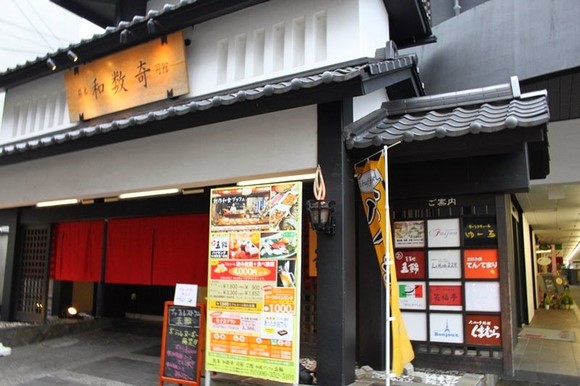
Kumamoto Wasukikan is located in Kumamoto’s main shopping and tourist area, situated next to the Kamitori Shopping Arcade and just a few steps away from the bustling Tsuboi Street. It’s also only a 3-minute walk to Kumamoto Castle.
Tsuboi Street is the liveliest street in Kumamoto, where major shopping malls and pedestrian streets are concentrated.
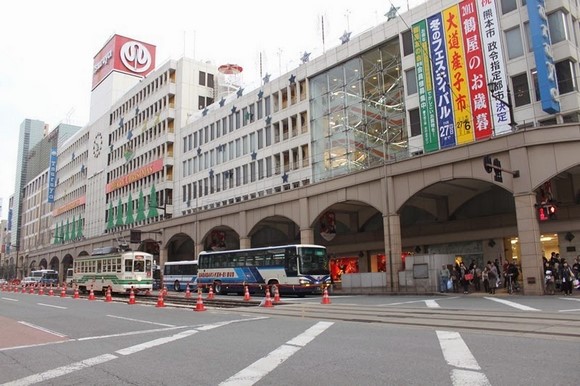
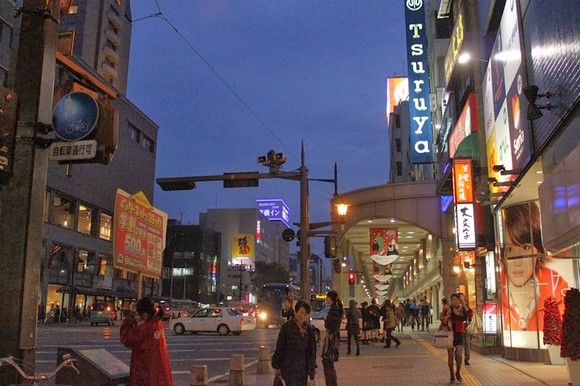
After checking in at the hotel, we first visited Sakura no Kojima at Sakura no Baba Josaien near Kumamoto Castle.
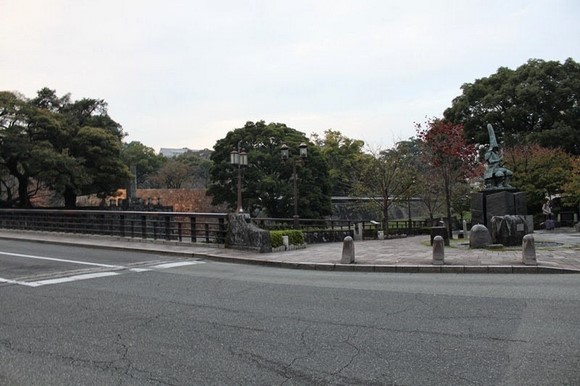
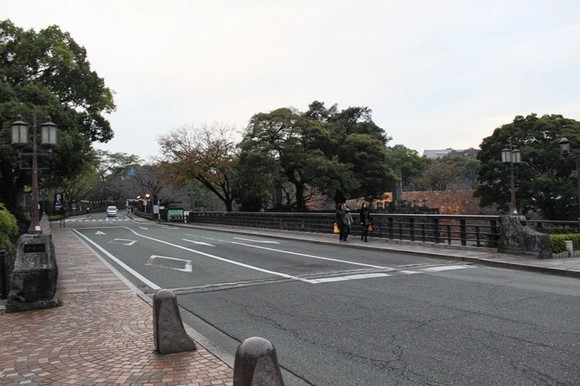
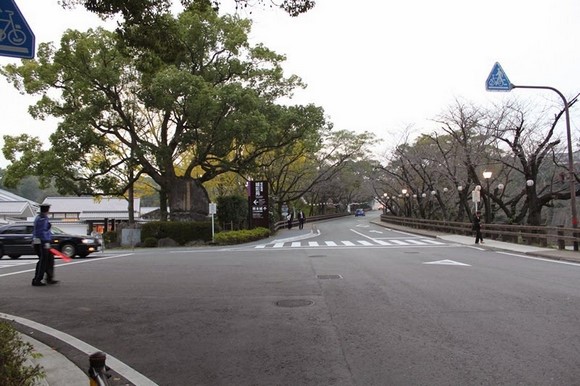
Sakura no Kojima is essentially a shopping street with buildings designed in a traditional style.
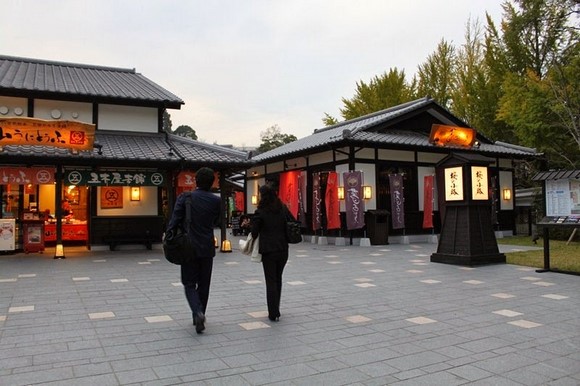
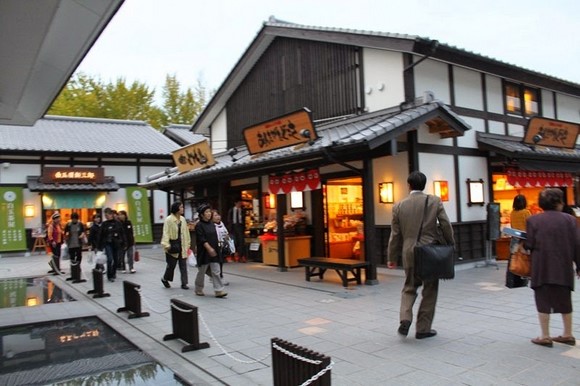
After exploring Sakura no Kojima, we returned to the Shimotori Shopping Arcade to find a place for dinner.
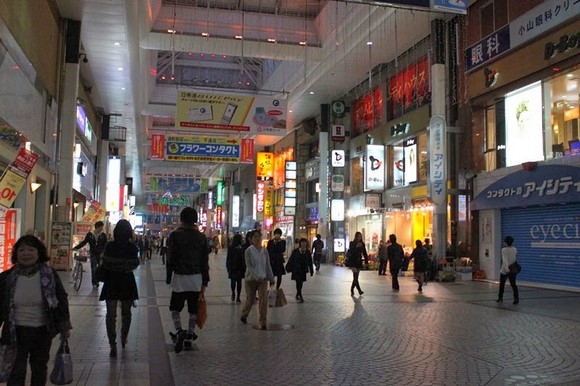
Tonight’s dinner.
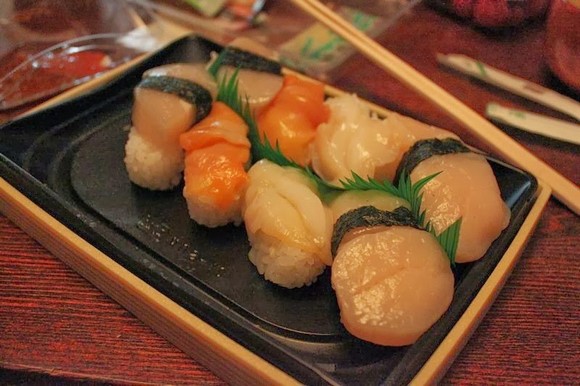
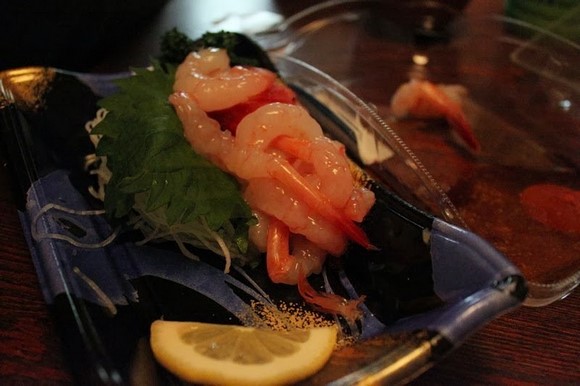
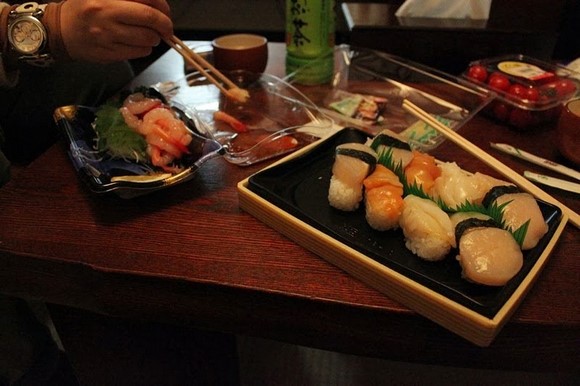
Kamitori Shopping Arcade.
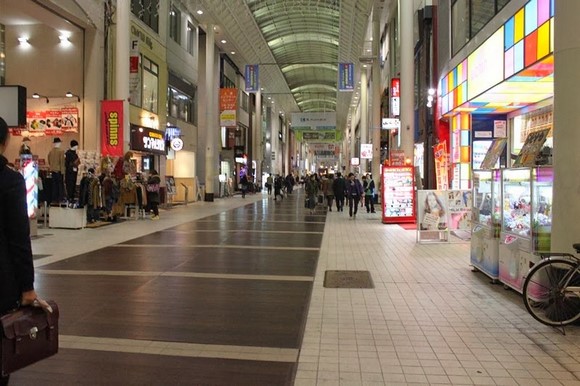
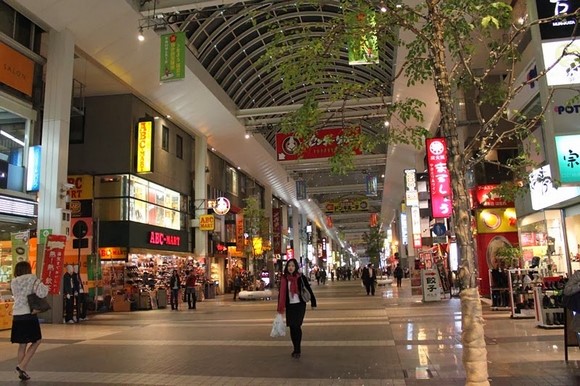
This restaurant, Kamoshika, is famous for its grilled chicken, as mentioned in travel guides. Even though we had already eaten dinner, we decided to stop by for a small snack since it was still open.
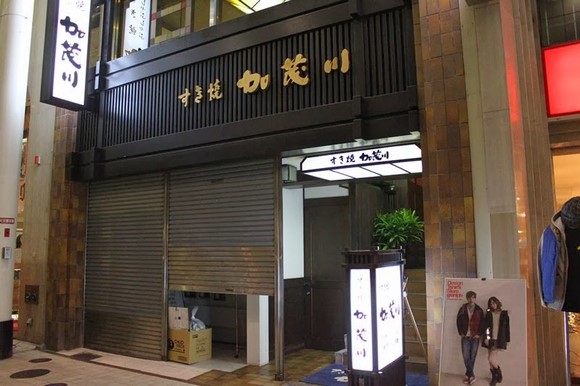
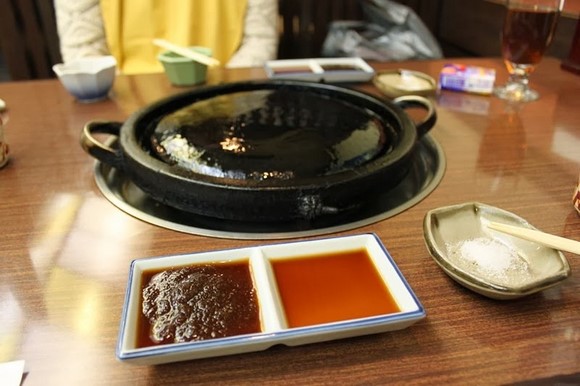
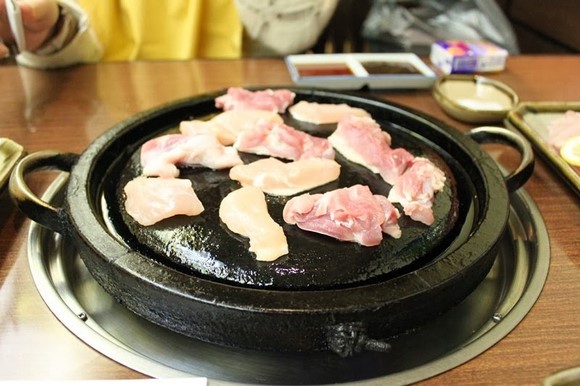
– End of Day 4 –
Day 5: Exploring Kumamoto Castle and Nagasaki
The weather today wasn’t great—it had been raining since early morning. Although the rain varied in intensity, it didn’t stop all day, following us from Kumamoto to Nagasaki, which was quite disappointing.
Today, we only planned to visit Kumamoto Castle in Kumamoto. When we stepped out, it was raining, which dampened our spirits a bit.
The hotel we stayed at was Kumamoto Wasukikan.
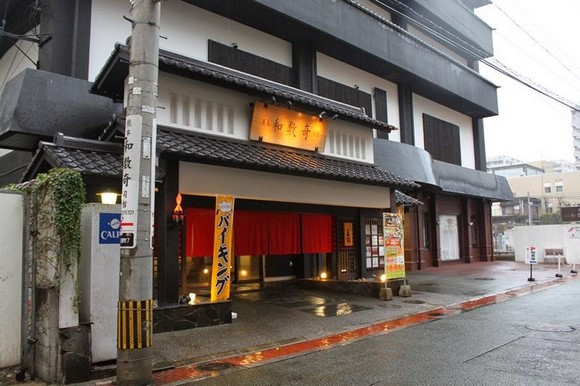
For breakfast, we kept it simple with donuts from the nearby Mister Donut.
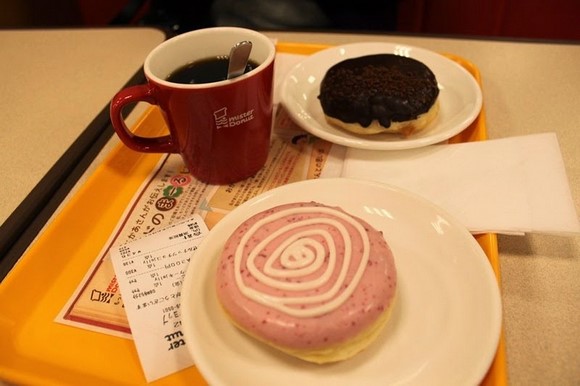
From our hotel, Kumamoto Wasukikan, the entrance to Kumamoto Castle was only about 400 meters away, a 4-minute walk.
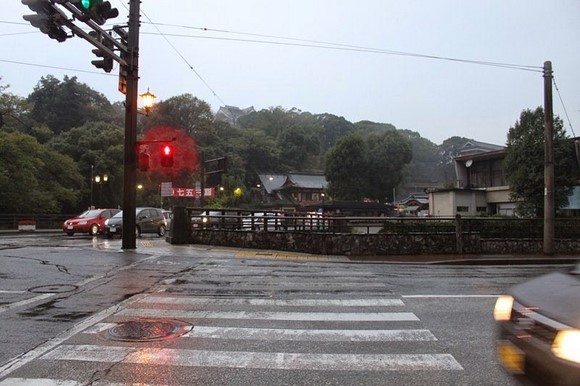
The moat in front of Kumamoto Castle.
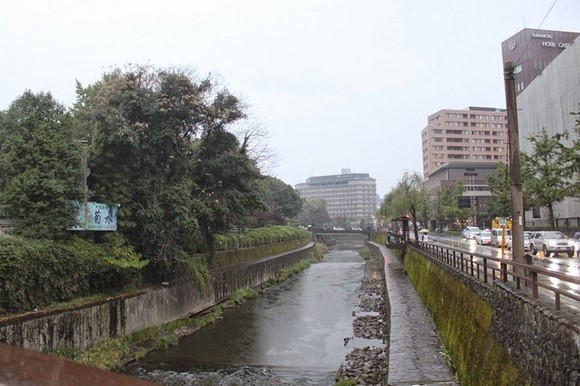
The main street in front of Kumamoto Castle.

The primary mode of public transportation in Kumamoto is these trolley buses, but unfortunately, we didn’t get a chance to ride them.

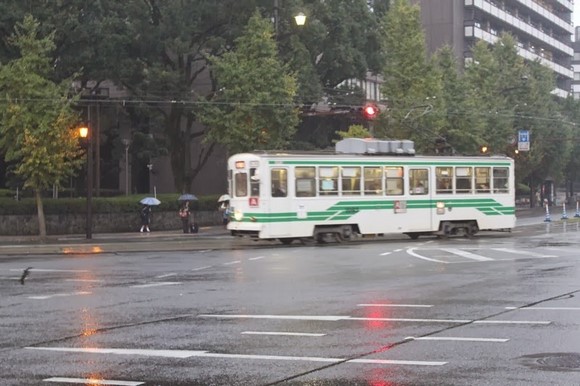
Kumamoto Castle has several entrances. We entered through the main Sudoguchi Gate and exited through the side Fuka Gate.
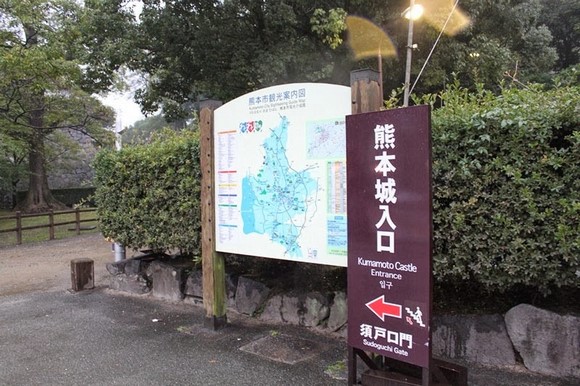
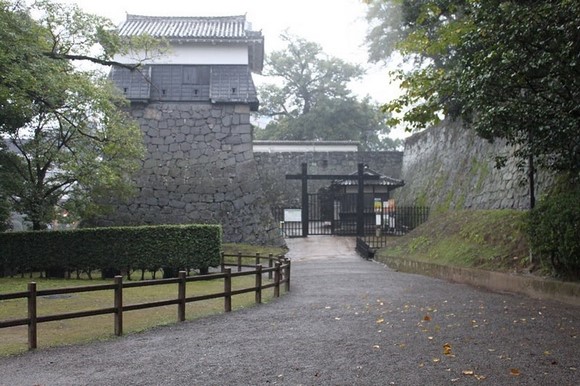

Inside Kumamoto Castle. Due to the rain, walking around wasn’t very convenient.
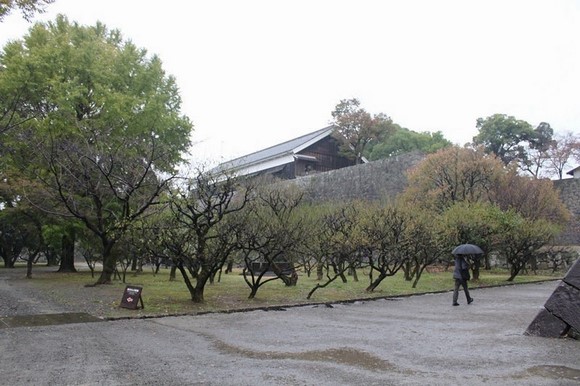
The Honmaru (main keep) of Kumamoto Castle.
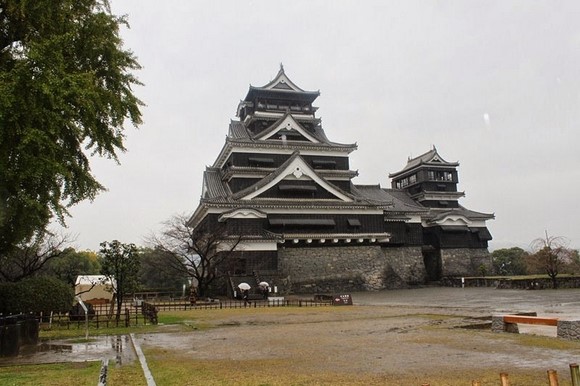
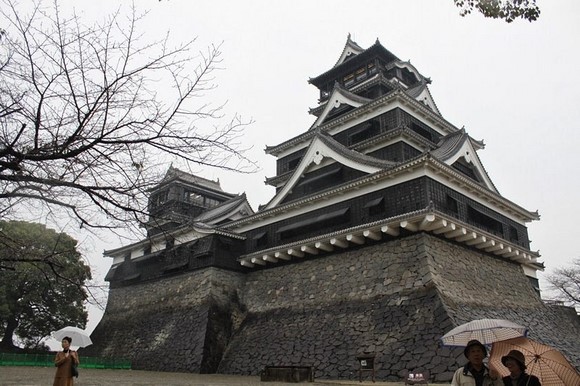
From the Honmaru, you can enjoy a panoramic view of Kumamoto Castle.
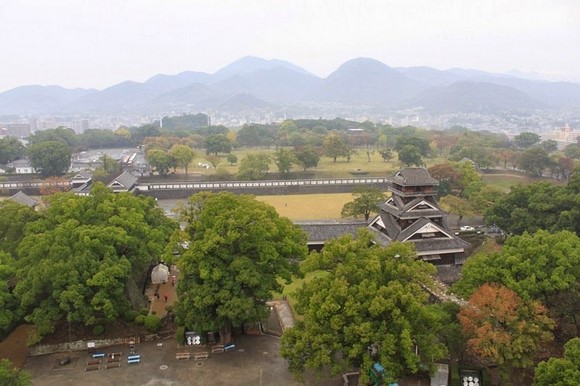
You can now explore Kumamoto Castle in advance using Google Maps street view if you’re interested.
The Honmaru Goten (palace) is open for visitors.
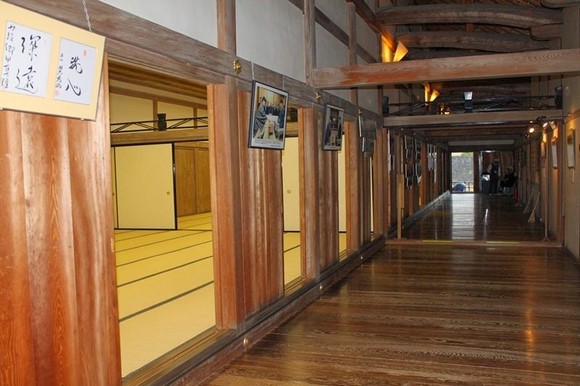
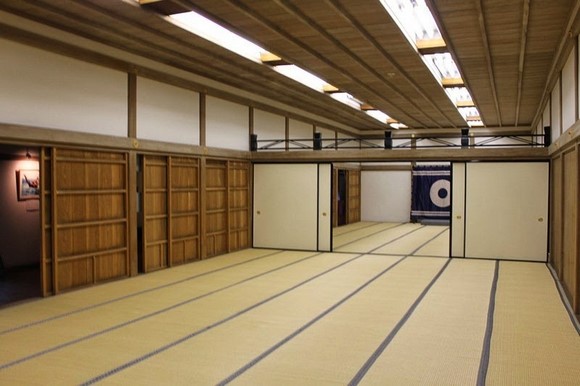
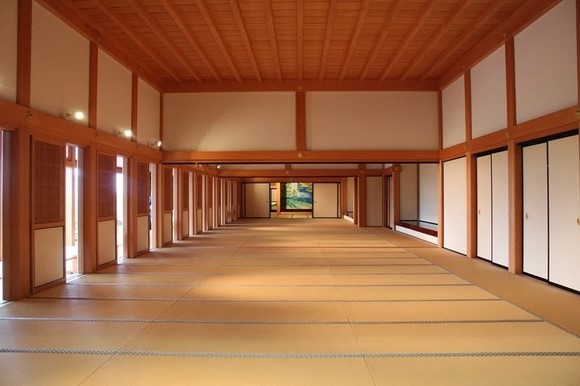
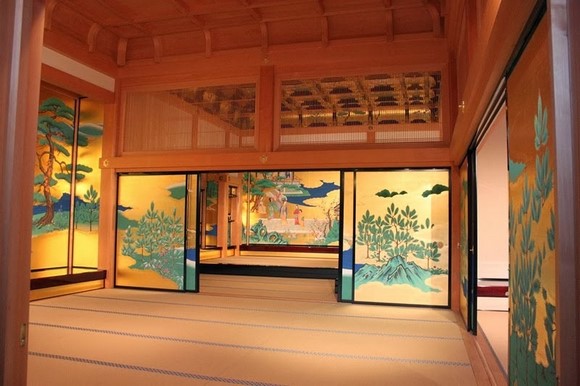
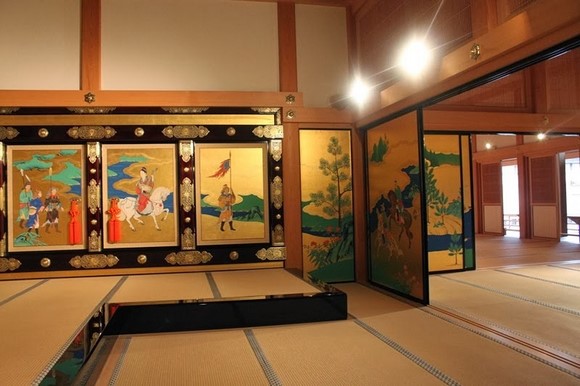
Kumamoto Castle Ticket
Kumamoto Castle requires an admission ticket, which costs 800 yen. Tickets can be purchased on-site, on the official website, or alternatively, you can buy them on Klook.
Kumamoto Castle Parking
We walked to Kumamoto Castle from a nearby hotel this time, but when we visited again a few years later, we drove. So, here is some supplementary information about parking.
The parking lots around Kumamoto Castle are mainly located on the west side of the castle. The official parking lots are primarily the Ninomaru Parking Lot and the Sannomaru Parking Lot. Among them, the Ninomaru Parking Lot (Entrance MapCode: 29489164*84) is relatively close to the entrance and is the most convenient one. If this lot is full, the next closest one to the entrance is the Sakuranobaba Josaien parking lot (Entrance MapCode: 29459831*28) next to Kumamoto Castle.
Additionally, between the Ninomaru Parking Lot and Josaien, there is a large parking lot belonging to Kumamoto Hospital (Entrance MapCode: 29459877*70). If the first two lots are full, you can try parking here. If this one is also unavailable, you’ll have to park at the farther Sannomaru Parking Lot (Entrance MapCode: 29489614*62).
After visiting Kumamoto Castle, we returned to the hotel to check out and headed to Nagasaki.
Kumamoto and Nagasaki are separated by the Shimabara Bay. If you take the land route, you’d have to go around the bay, which is a detour. To avoid this, we took a ferry from Kumamoto Port to Shimabara and then drove a shorter distance to Nagasaki. This was my first time taking a car ferry in Japan, so it was an interesting experience and added some variety to the trip.

The drive from Kumamoto city center to Kumamoto Port took about 30 minutes. The port is relatively small, as shown in the photo below.
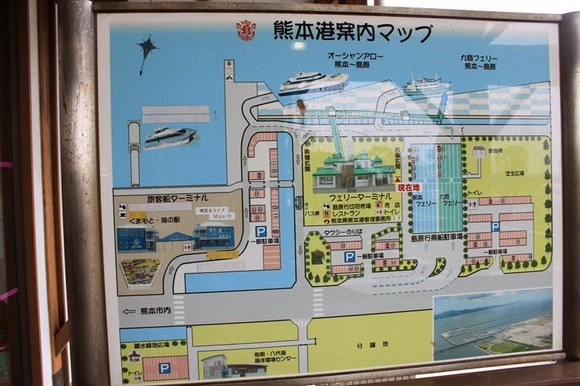
There are two ferry companies at Kumamoto Port, and we took the car ferry operated by Kumamoto Ferry Co., Ltd., which runs between Kumamoto and Shimabara. Reservations can be made online. Upon arrival, follow the staff’s instructions to park your car in the designated queue and wait to board. Since there was still about half an hour before departure, everyone locked their cars and went to the waiting room.
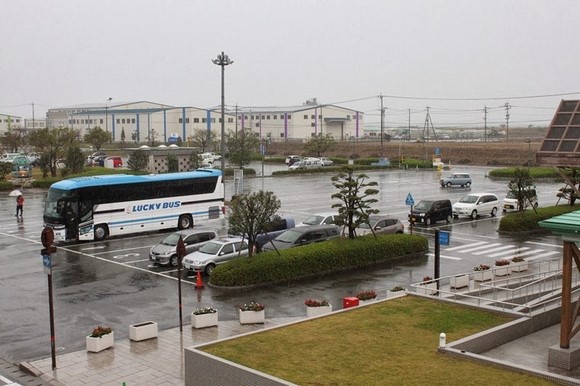
The main building at Kumamoto Port is this waiting room, with the ticket office located on the lower level. This is where you purchase your ferry tickets.
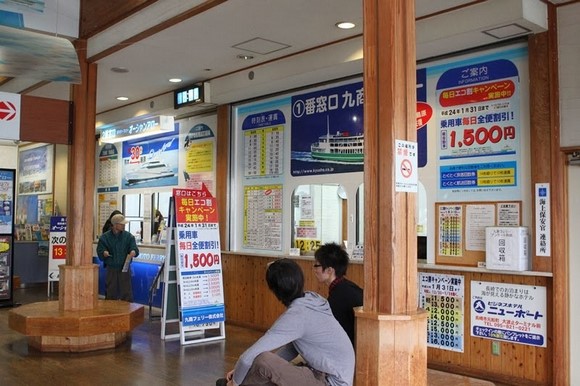
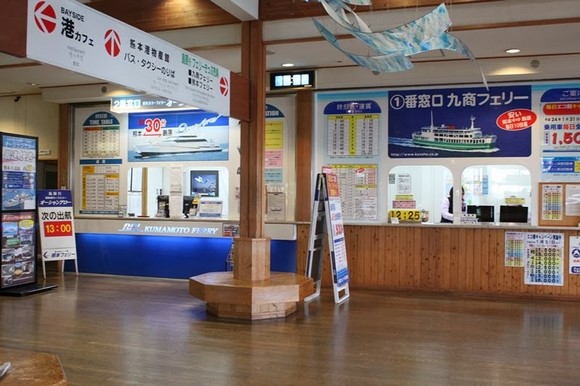
This is the ferry we took.
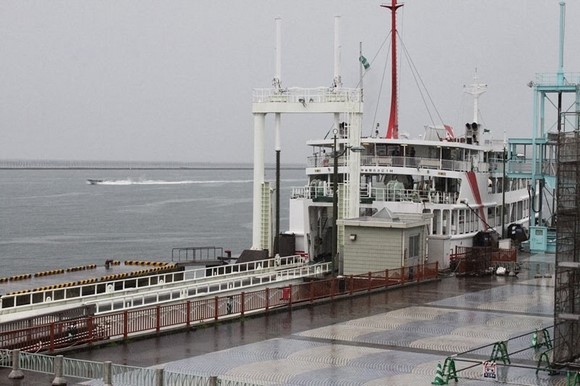
The ferry carries not only cars but also passengers without vehicles. If you’re not driving, you can board from the second-floor entrance of the waiting room. For those with cars, both the driver and passengers can stay in the vehicle during the crossing—no need to separate.
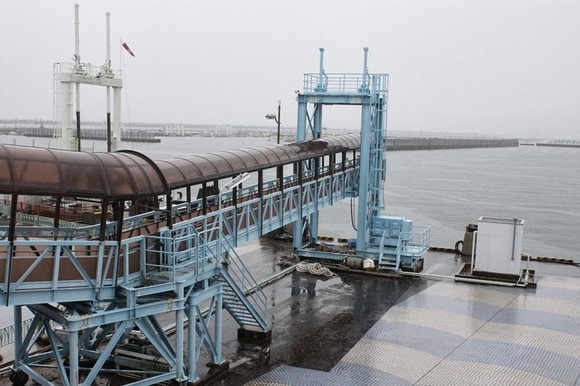
Since we had some time to spare, we grabbed a bite at a small eatery on the lower level of the waiting room.
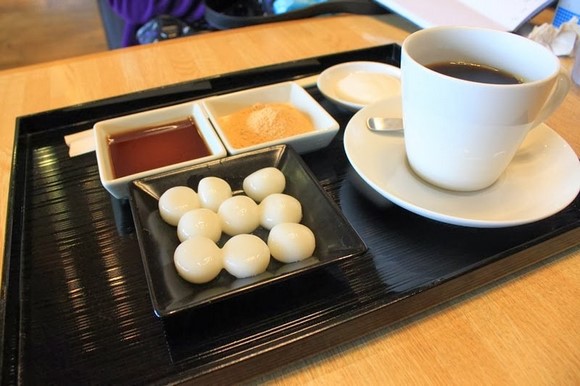
Time to board!
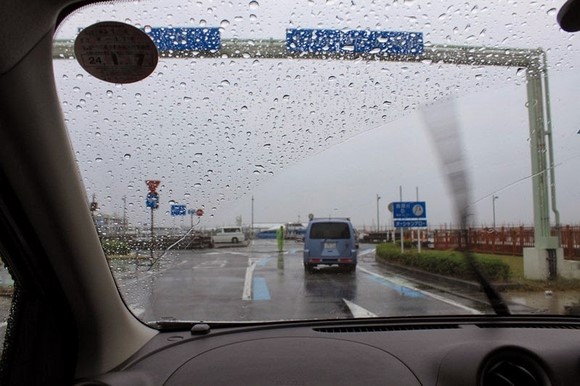
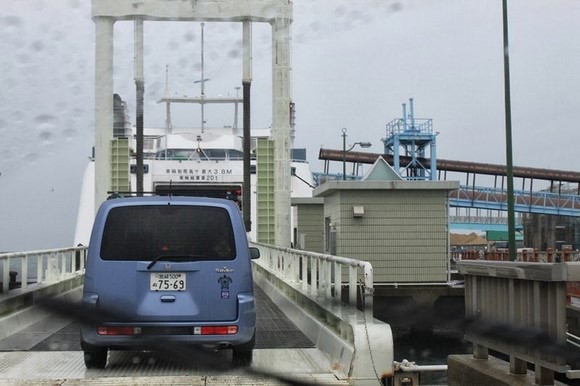
Once inside the ship, we parked the car as instructed by the crew.
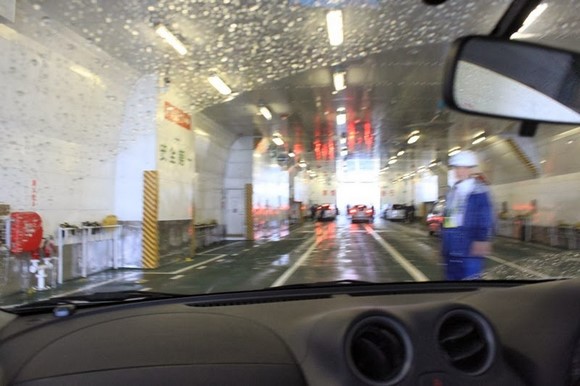
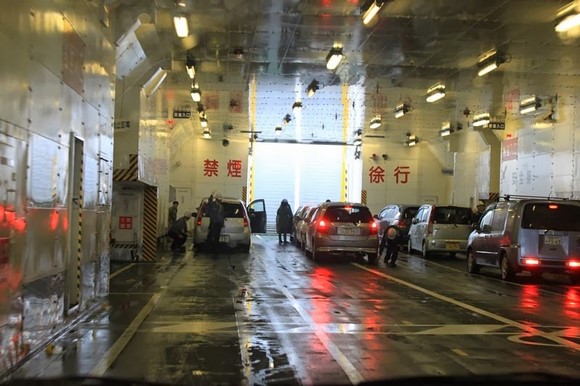
After locking the car, we headed to the passenger area via the nearby stairs. Note that there are only stairs here.
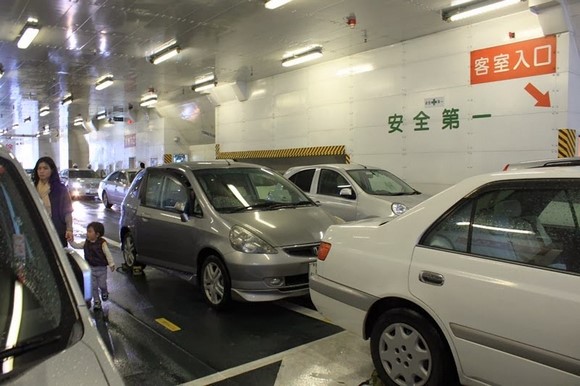
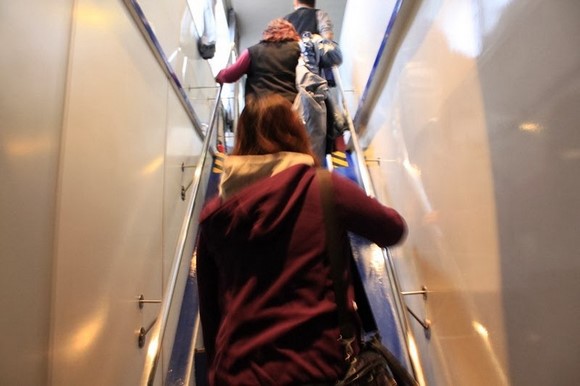
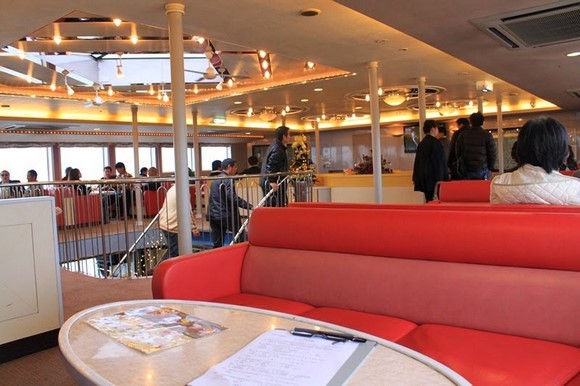
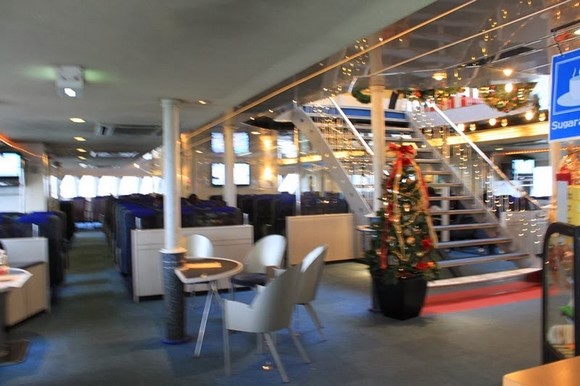
The ferry ride from Kumamoto Port to Shimabara Port takes only 30 minutes, so make sure to enjoy the main attraction of this trip: the seagulls.
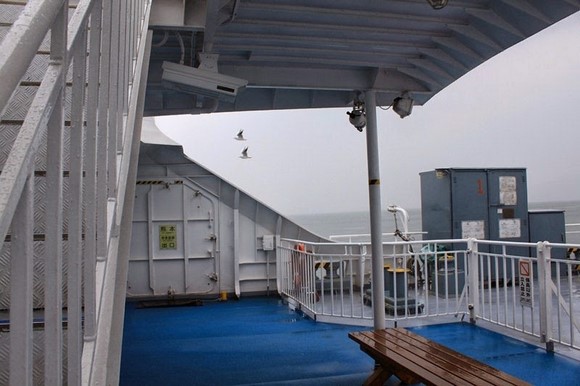
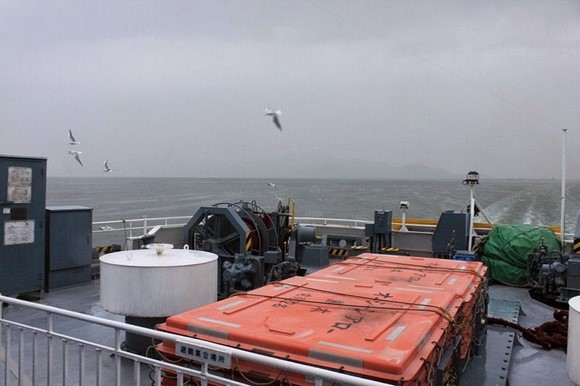
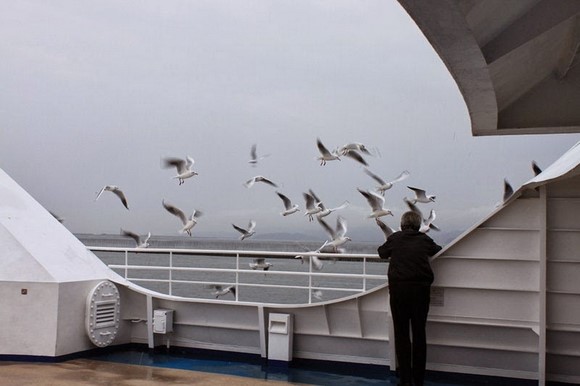
Shortly after departure, a large flock of seagulls began following the ferry. If you’re interested, bring some breadcrumbs to feed them.
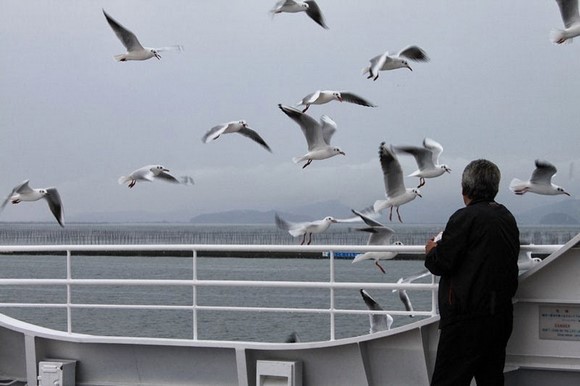
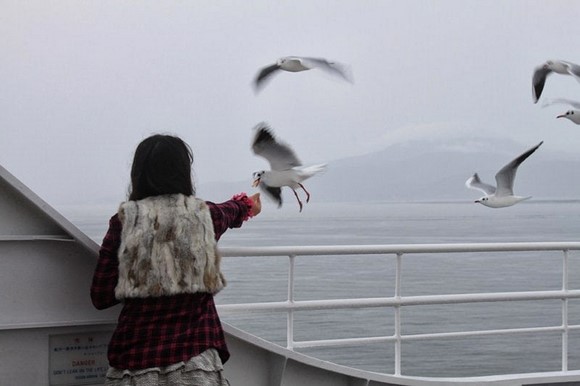
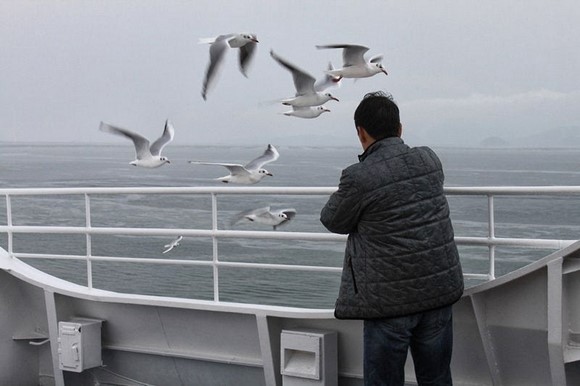
Before long, we arrived at Shimabara Port on the opposite shore.
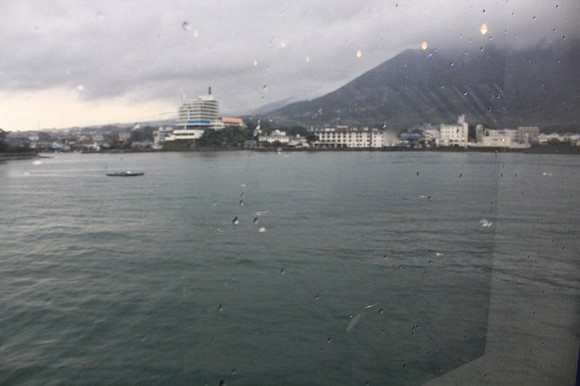
Time to drive off.
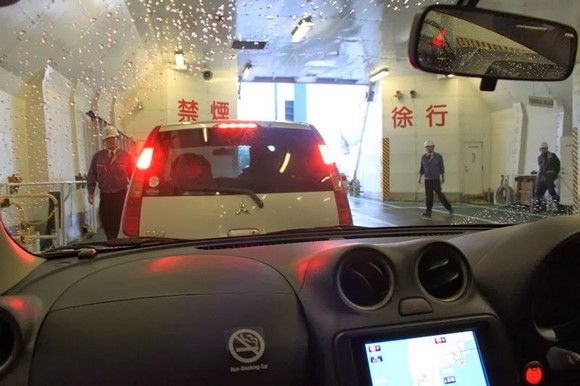
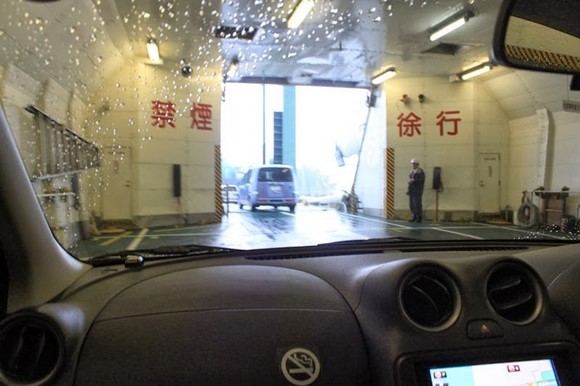
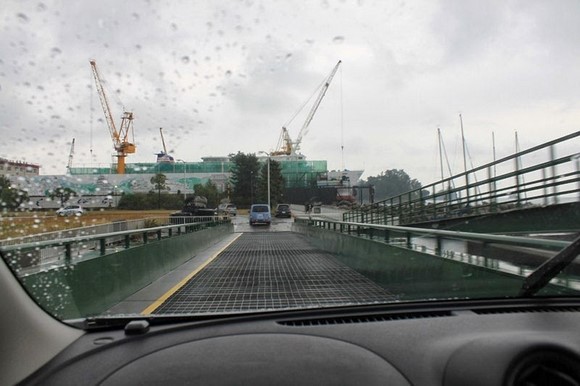
Originally, we planned to take the southern Unzen Road to Nagasaki, which would allow us to visit the hot spring town of Unzen Hell along the way. However, due to rainy weather and the mountainous terrain around Unzen Hell, we decided to take the northern Shimabara Street instead.
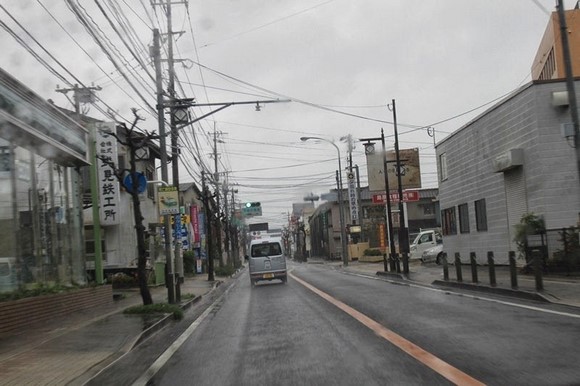
Our hotel for the night in Nagasaki was Dejima no Yu Dormy Inn Nagasaki, located in Nagasaki’s Doza-machi, right next to Shinchi Chinatown.
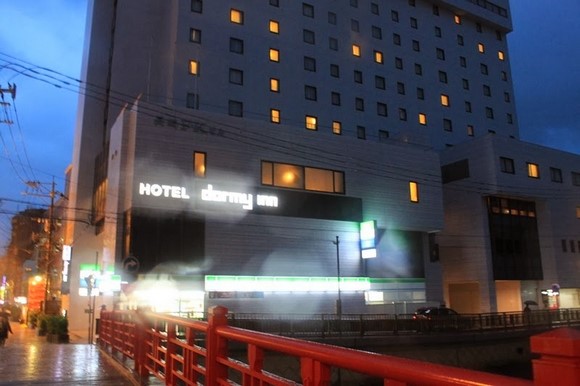
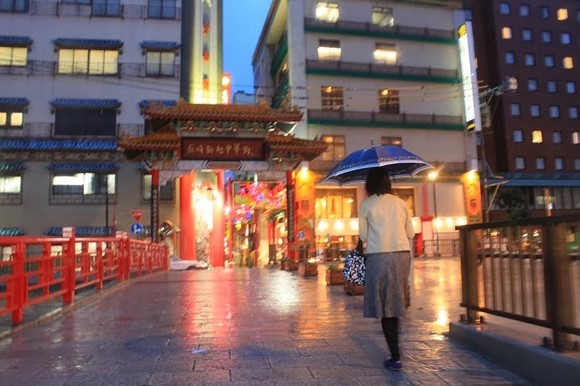
Dormy Inn rooms are typically small but of good quality, and they feature hot spring baths, making them one of my favorite accommodation choices in Japan.
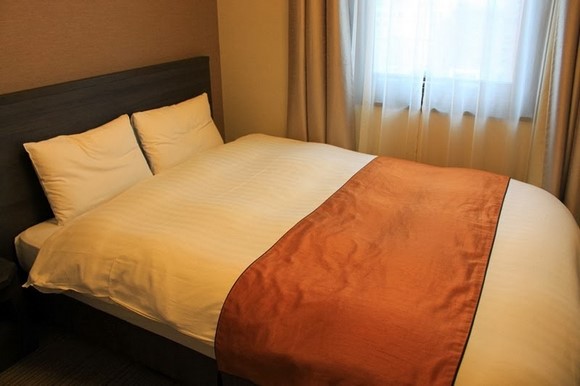
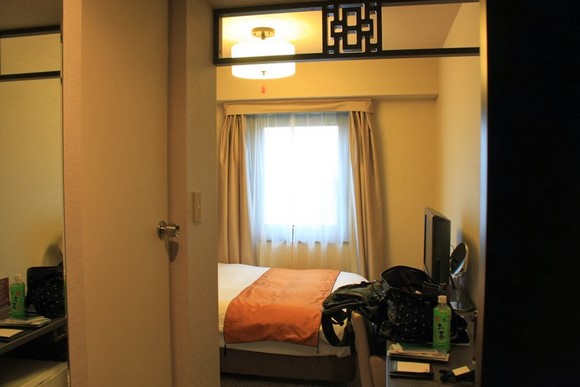
Next to Dejima no Yu Dormy Inn Nagasaki, there’s a seafood restaurant called Nagasaki Port.
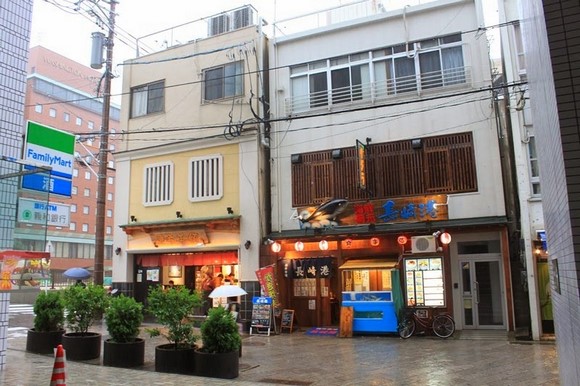
Nearby streets
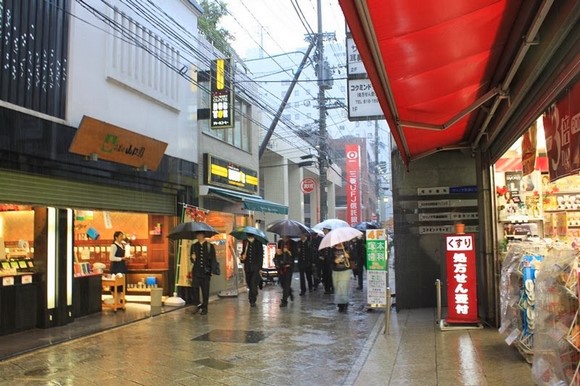
Trolley buses are the main mode of transportation in Nagasaki.
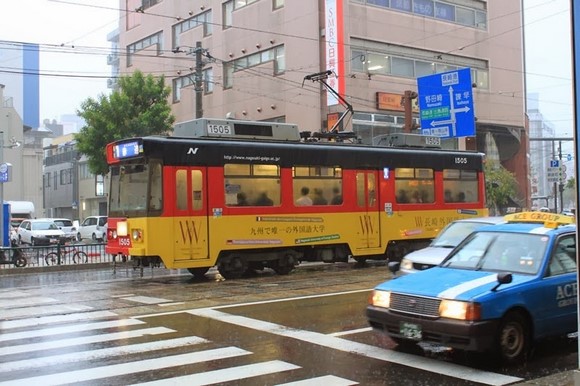
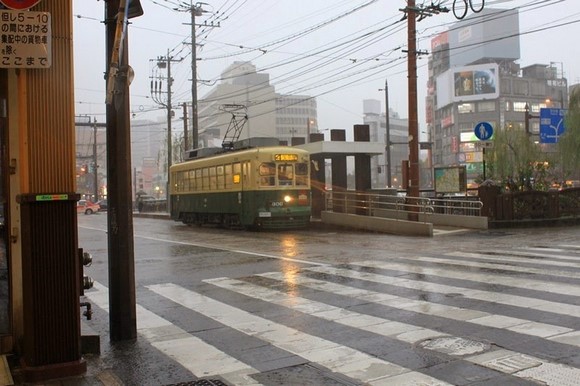
Walking out from Dormy Inn onto the main street brings you to Kanko-dori, one of Nagasaki’s main shopping areas.
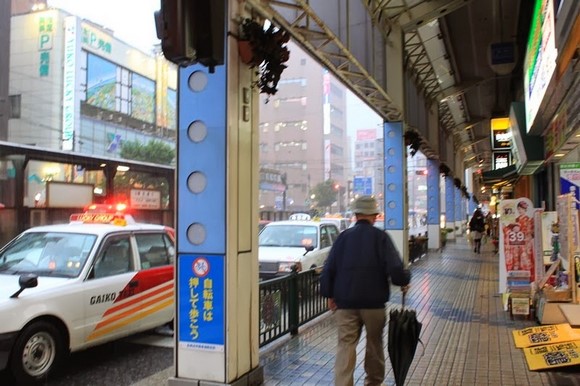
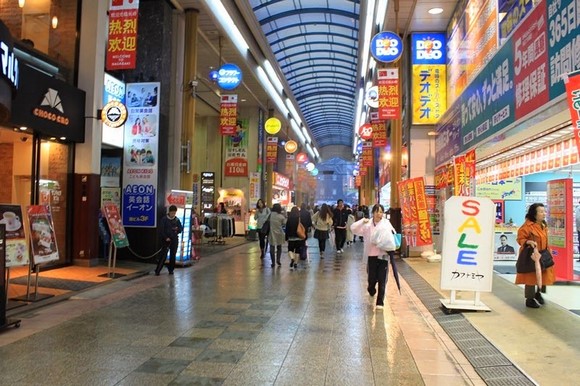
For dinner, we had curry rice at this CoCo Ichibanya on Kanko-dori—absolutely delicious.
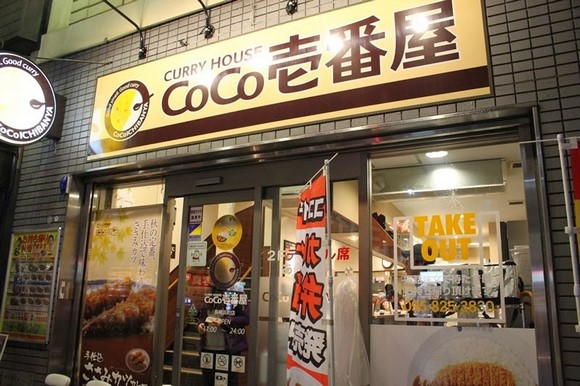
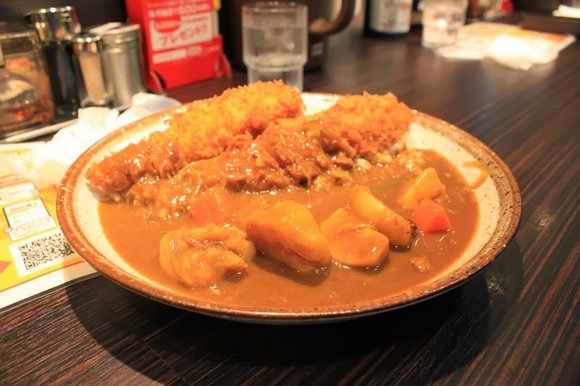
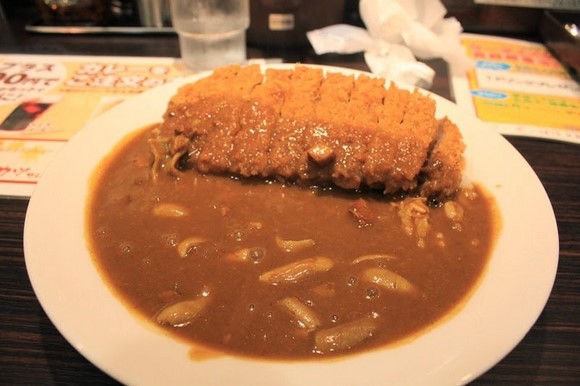
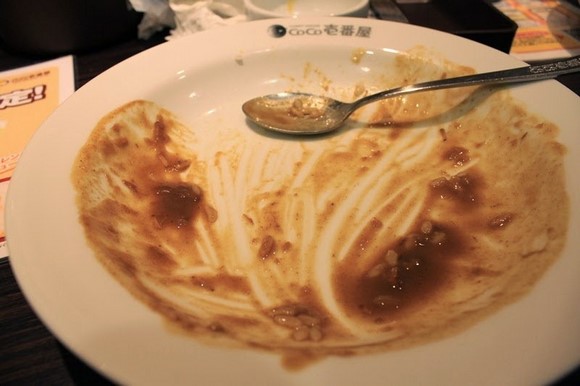
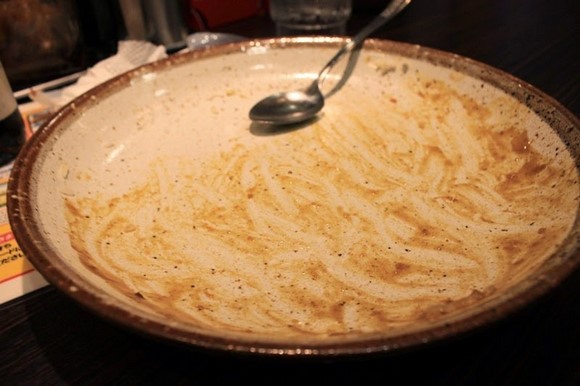
We originally planned to visit Inasayama at night for the夜景 (night view), but due to heavy rain and poor visibility, we had to cancel this part of the itinerary.
– Day 5 End –
Day 6: Exploring Nagasaki, Tenjin in Fukuoka
Although we stayed one night each in Kumamoto and Nagasaki during this trip, time constraints limited our exploration of these major Kyushu cities to just one or two main attractions. Today in Nagasaki, we only visited the Atomic Bomb Museum.
Waking up in the morning and looking out the window, we found the weather had cleared up—no more rain. Thank goodness.
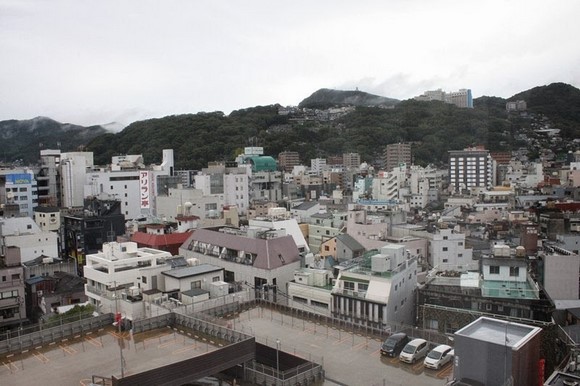
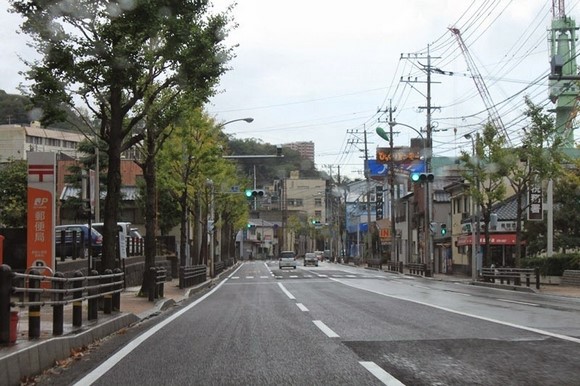
After checking out from the hotel, we first visited the Minamiyamate area, which features many Western-style architectural attractions. However, since there were no parking spaces available, we could only drive around briefly before heading to Bunmeido’s main store to buy Nagasaki castella cakes.
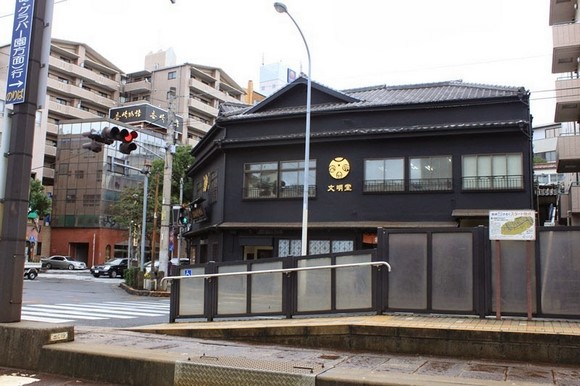

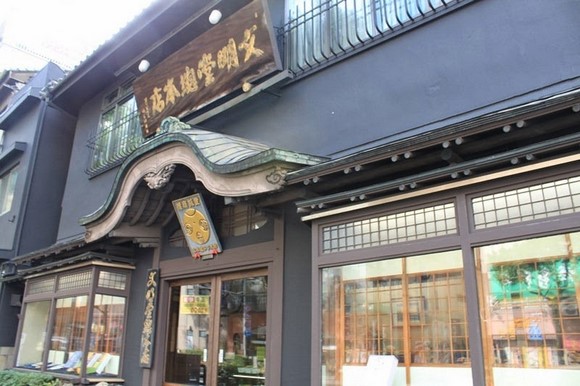
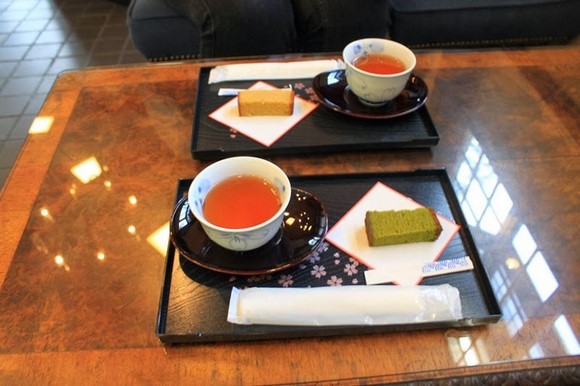
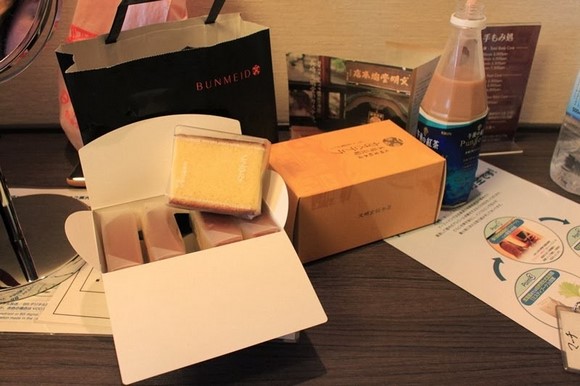
After buying souvenirs, we set off for the Nagasaki Atomic Bomb Museum.
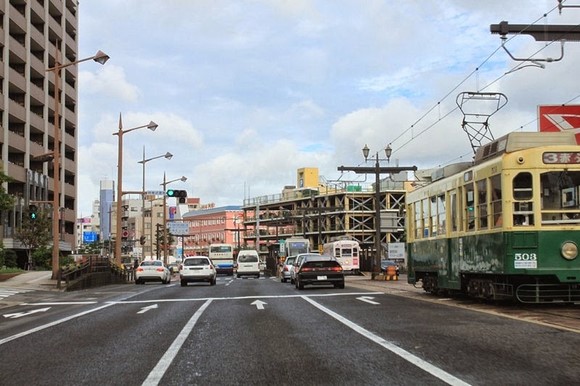
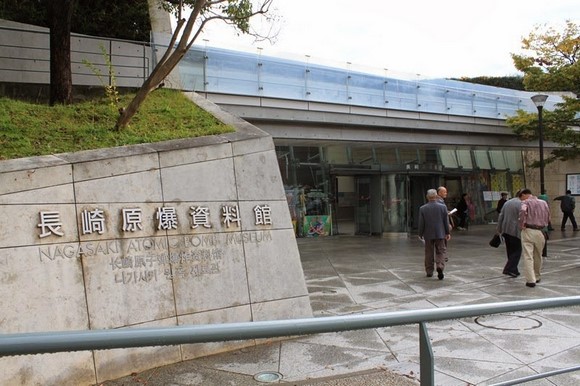
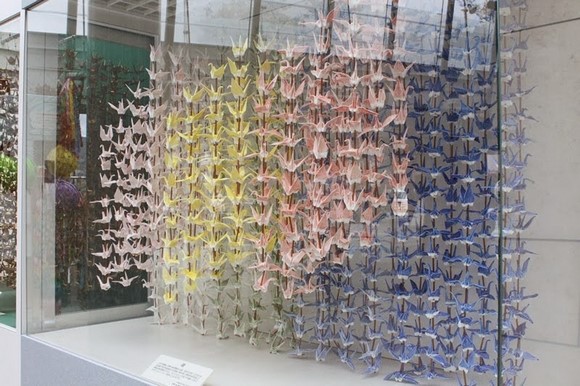
After visiting the Atomic Bomb Museum, we left Nagasaki and headed back to Fukuoka, making a stop at Tosu Premium Outlet for some shopping along the way.
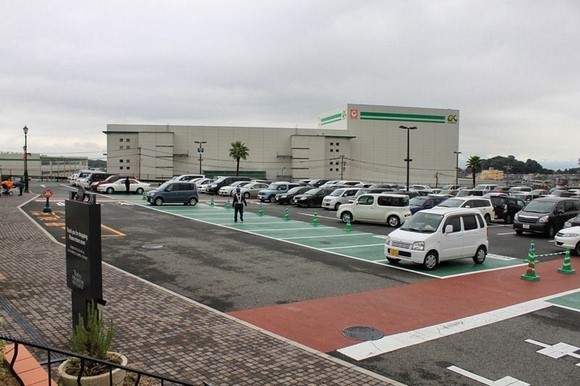
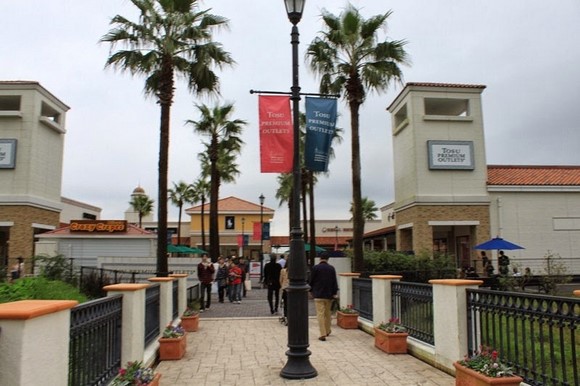
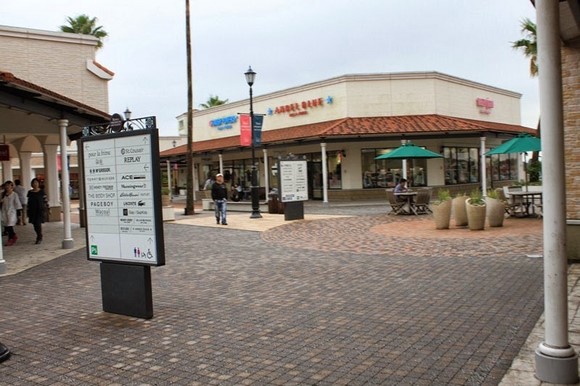

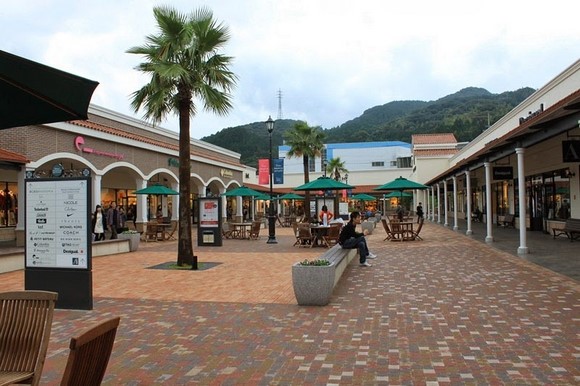
Had lunch at the Outlet.
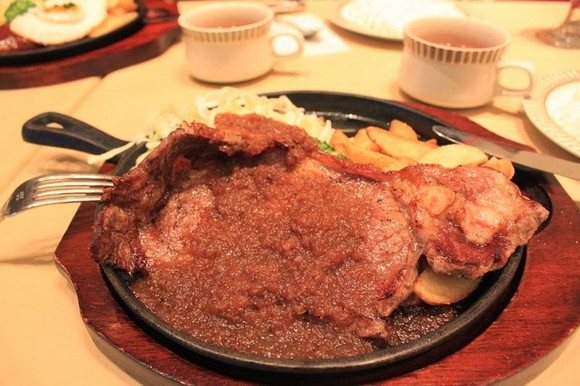
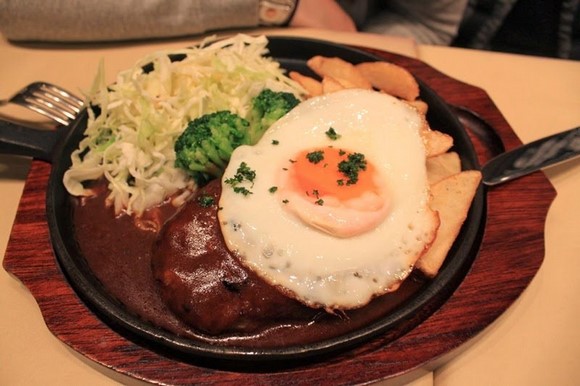
For the last two days of our trip in Fukuoka, we stayed at Hakata Excel Hotel Tokyu in Nakasu. This hotel was included in our package, but it seemed a bit dated in terms of style, and the quality was just average.
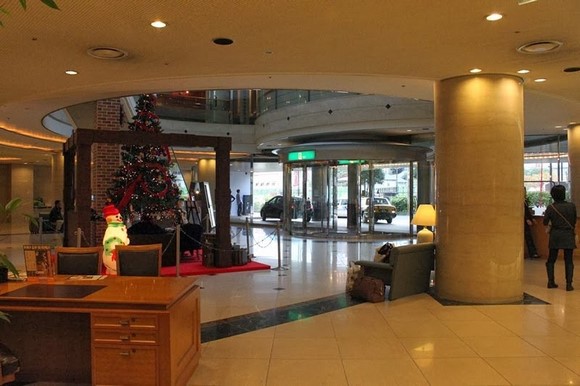

After checking in at the hotel, we drove to the car rental shop to return the vehicle. We chose the Tenjin location for the return, and afterward, we took a stroll through Tenjin Chikagai (Tenjin Underground Shopping Mall).
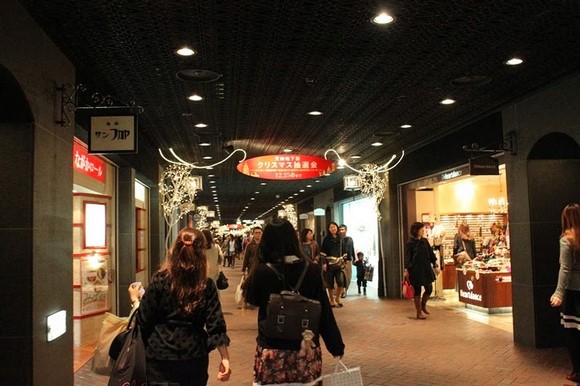
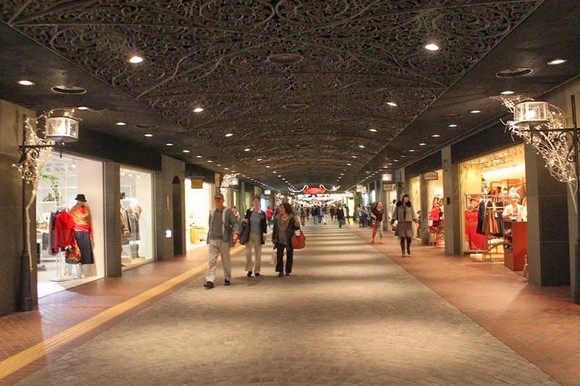
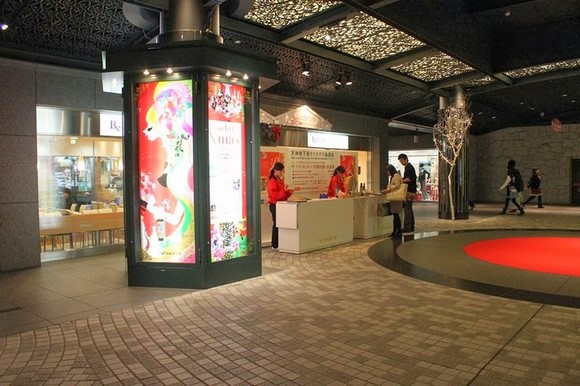
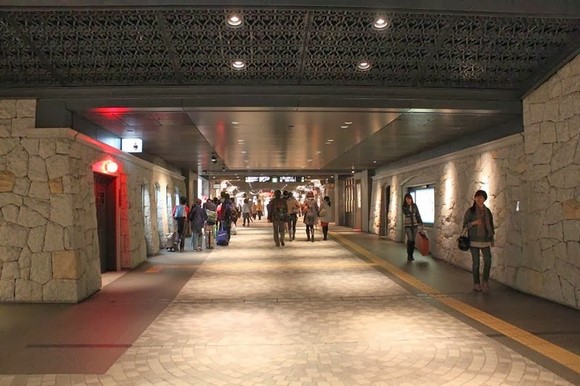
Then we continued shopping around the Tenjin area.
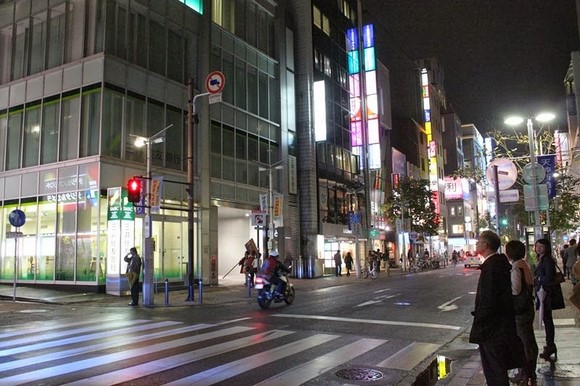
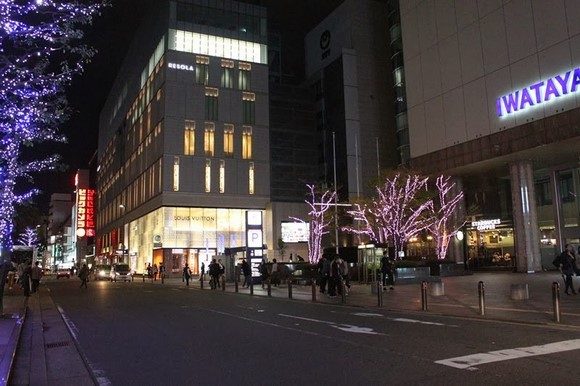
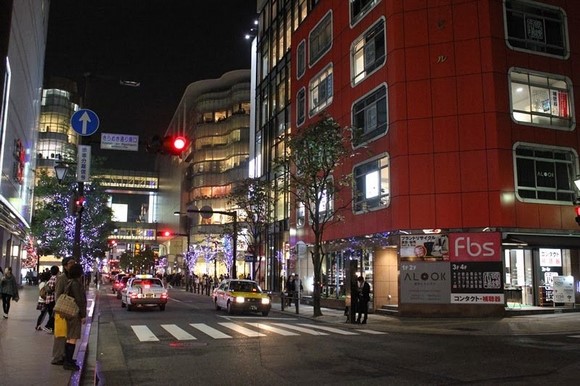
The walk from Tenjin back to Nakasu wasn’t far. After passing through Tenjin Central Park, we arrived in Nakasu.
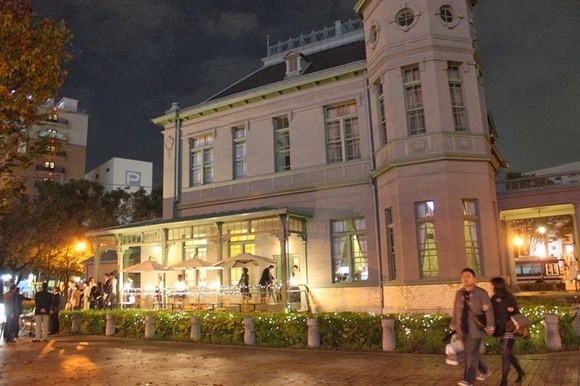

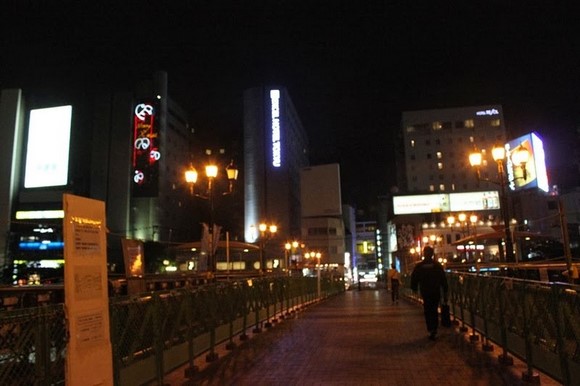
Nakasu is Fukuoka’s red-light district, and the atmosphere felt a bit sketchy.
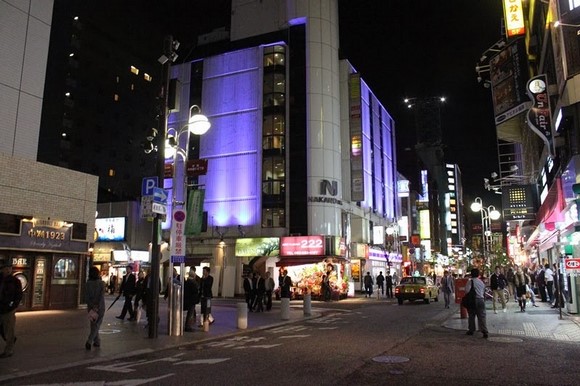
Had some late-night snacks before calling it a day.
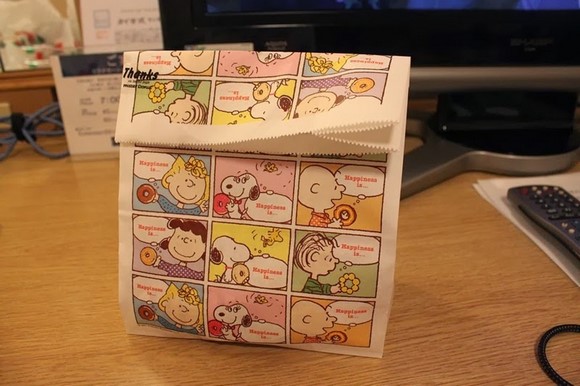
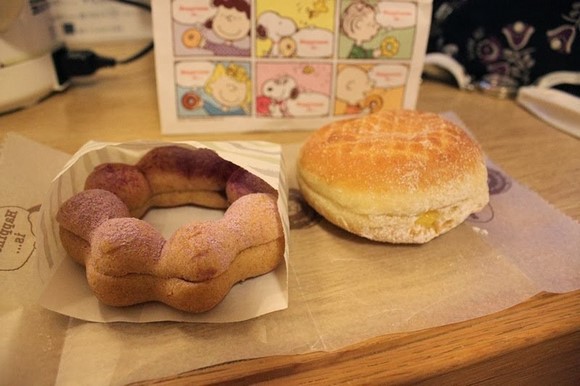
– Day 6 End –
Day 7: Fukuoka Free Time, Shopping at Marinoa City
The last two days of our trip were dedicated to shopping in Fukuoka.
The streets were quiet in the morning, and with the cold weather, everything felt quite deserted.
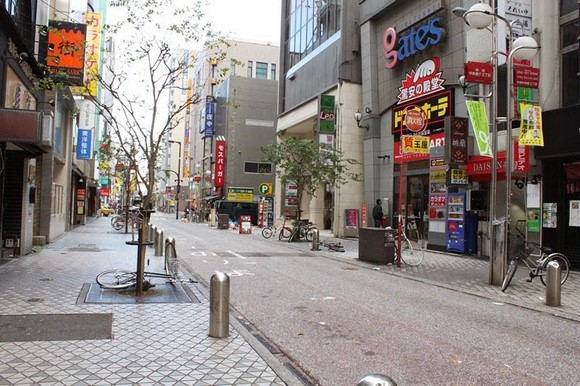
This morning, our main destination was Marinoa City for shopping. To get there, you can take a direct bus from Hakata or Tenjin, but we opted to take the subway to Meinohama first and then transfer to a bus. (Updated: Marinoa City has closed down)
Before heading out, we bought a one-day subway pass at the station.
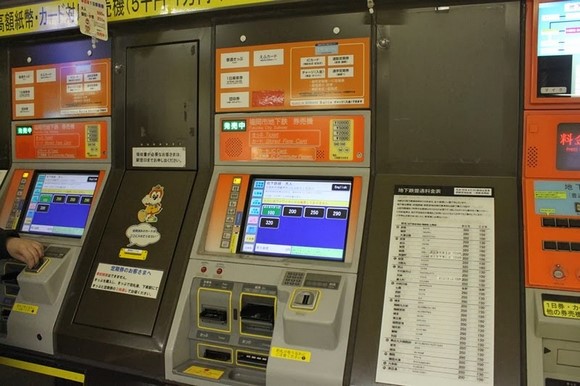
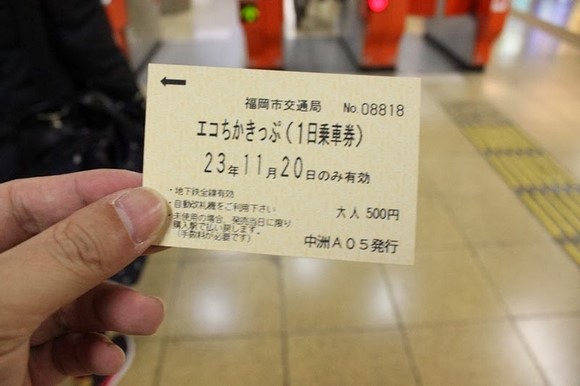
Nakasu-Kawabata Subway Station
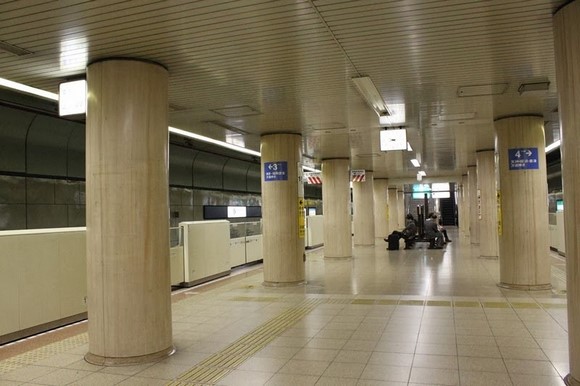
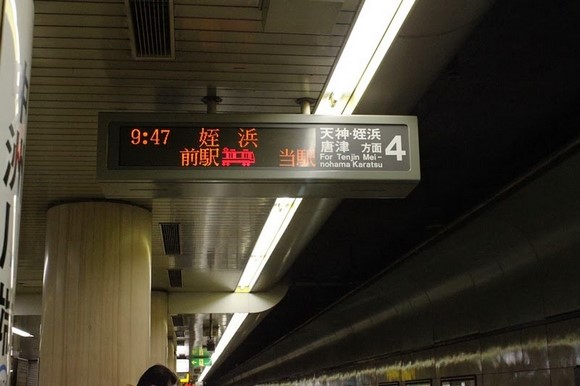
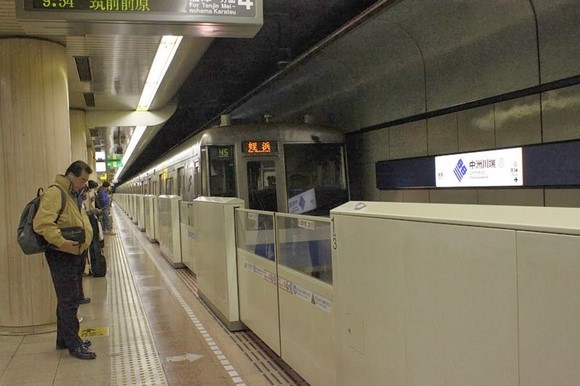
Arrived at Meinohama!
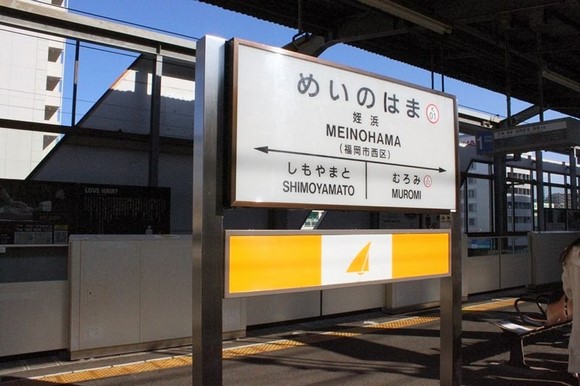
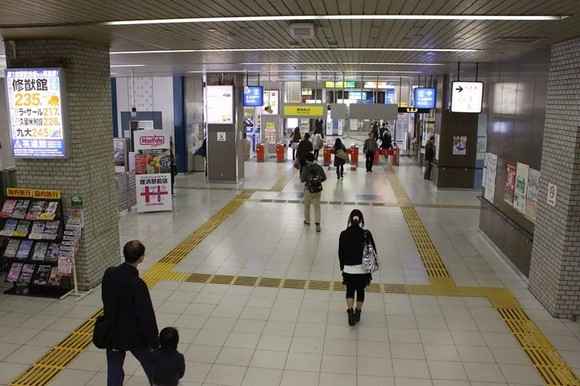
The weather was freezing today, so we stopped for breakfast at a restaurant outside the subway station.
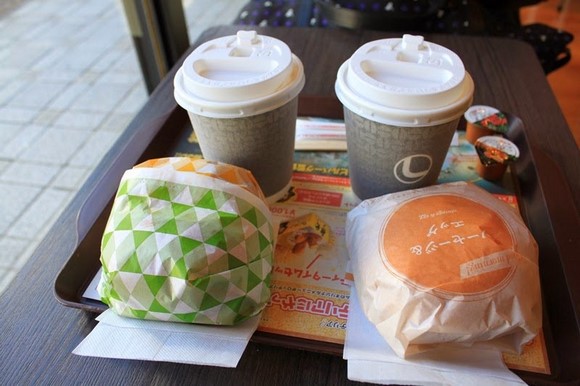
The bus to Marinoa City departs from the south exit of Meinohama Station.
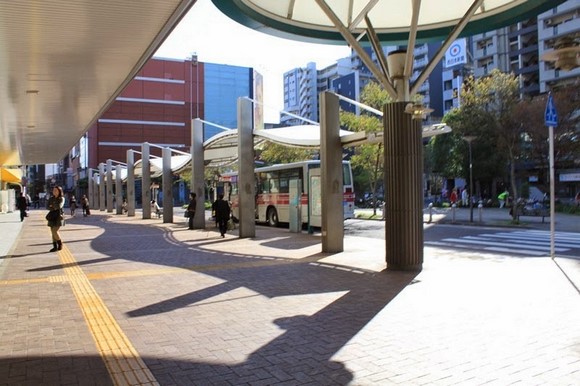
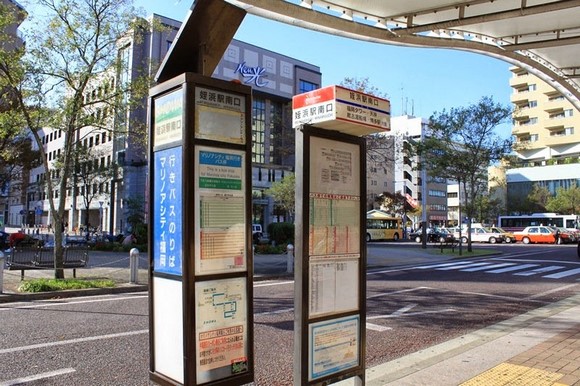
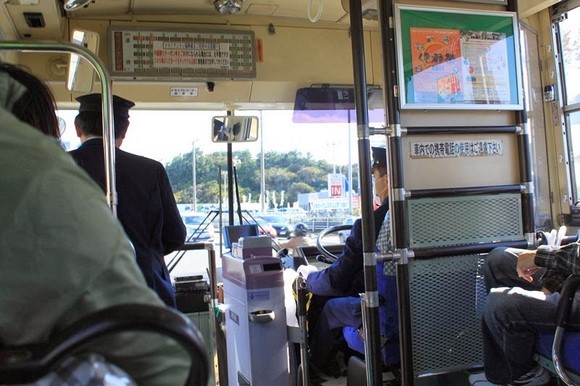
The distance from Meinohama Station to Marinoa City isn’t short. Taking a direct bus from Hakata or Tenjin would likely take even longer.
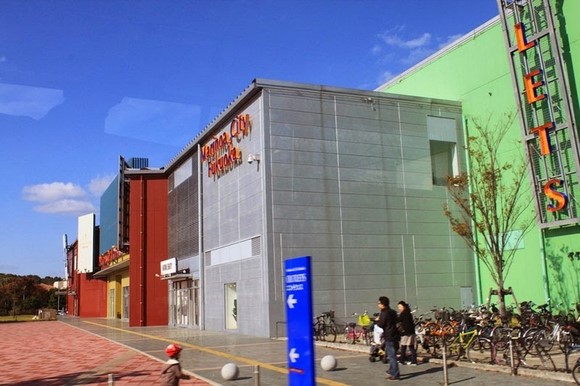
The bus stop inside Marinoa City. This is also where we waited for the return bus.
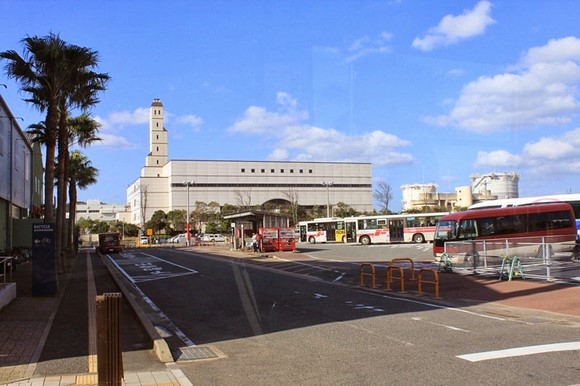
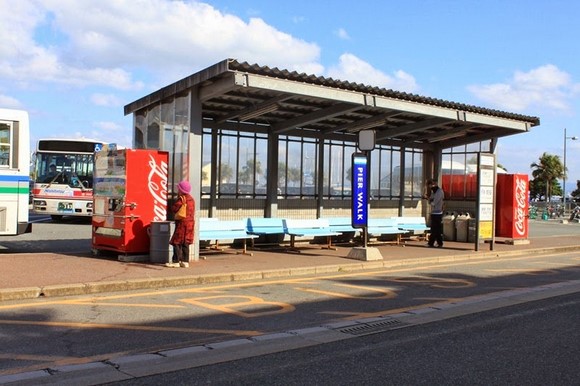
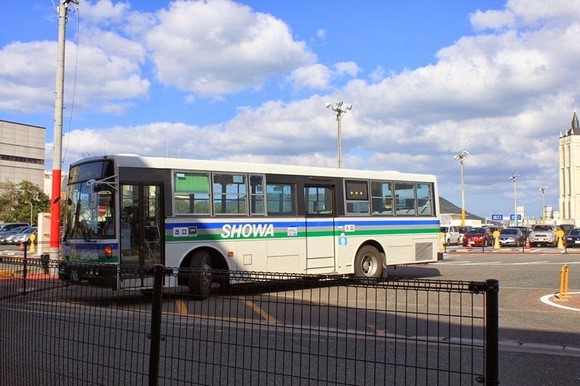
Time to go shopping!
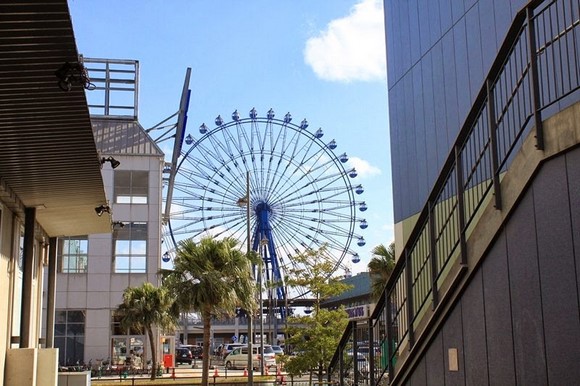

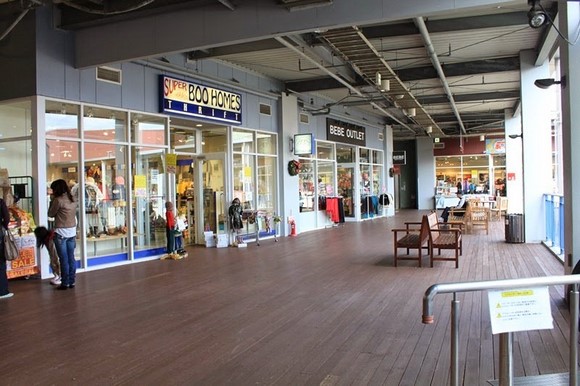
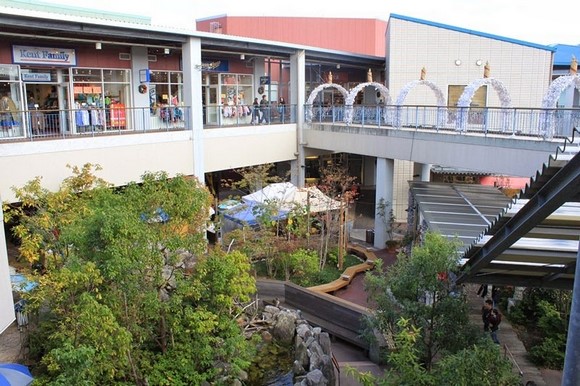
After the shopping spree, we ate at this ramen shop—absolutely delicious.
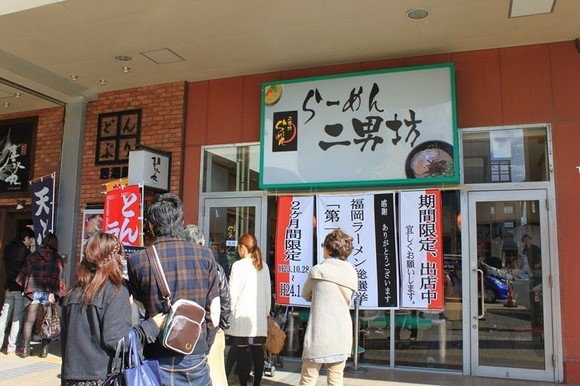
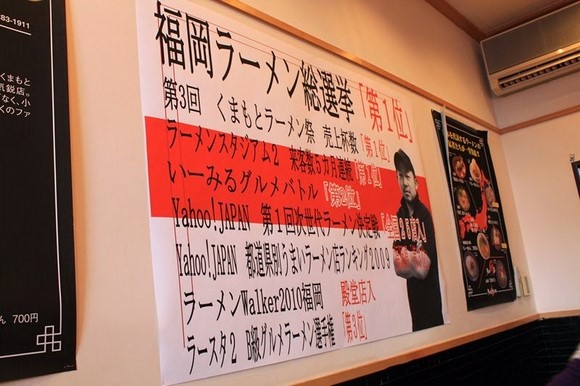
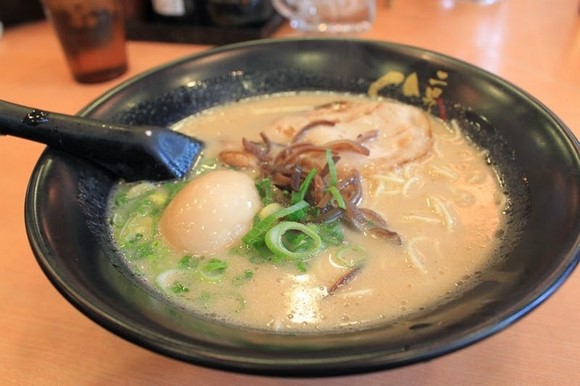
After visiting Marinoa City, we returned to the Tenjin area for more shopping. But we were too focused on shopping to take any more photos.
– End of Day 7 –
Day 8: Conclusion of the 8-Day Northern Kyushu Road Trip
On the eighth day of the trip, we had to head to the airport early, so there isn’t much to write about. Below are some photos from the airport.
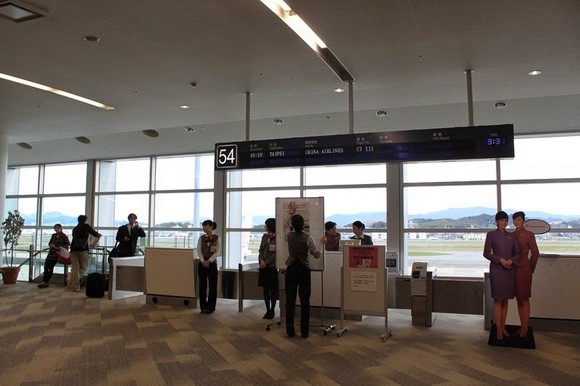
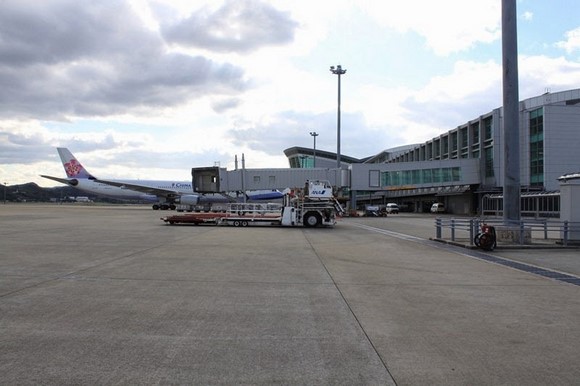
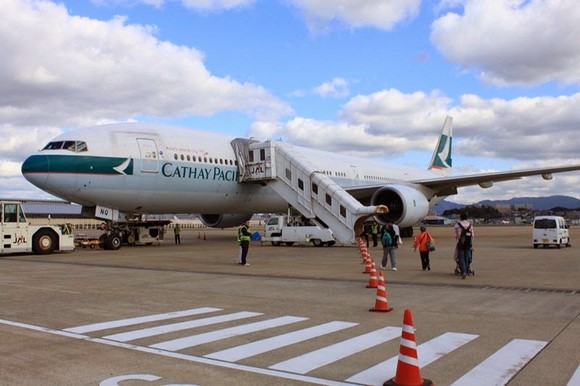
– The End of Autumn 2011 Japan Northern Kyushu Road Trip –
Related Articles:
- Kyushu Expressway Pass (KEP): Pricing, Coverage, and Where to Buy
- Japan Toyota Rent a Car Guide: Official Website Rental Process and Discounts!
- Japan Highway Toll Calculation! 5 Methods to Check, Calculate Toll Fees, and Payment Options
- Summer Road Trip in Hokkaido! Itinerary, Routes, and Attractions for a Self-Drive Tour from Sapporo
- Complete Guide to Shirakawa-go Illumination: Dates, Transportation, Tickets, Accommodation, and Itinerary Planning
- Exploring Japan’s Tateyama Kurobe (Part 1): Alpine Route Transport, Stations, and Attractions
- Exploring Japan’s Tateyama Kurobe (Part 2): Tickets, Passes, and Seat Reservations
- Exploring Japan’s Tateyama Kurobe (Part 3): Recommended Itineraries
- Guide to Tateyama Kurobe’s Snow Wall (Yuki no Otani)
- Alpine-Takayama-Matsumoto Area Pass: Purchase, Exchange, and Usage Guide
- Takayama-Hokuriku Area Tourist Pass – Essential Rail Pass for Exploring Japan’s Chubu and Hokuriku Regions: Purchase, Exchange, and Usage Guide
- USJ Osaka Universal Studios Tickets + Express Pass: Official Purchase Guide
- Universal Studios Japan App Tutorial: How to Get Timed Entry Tickets
- Using Visit Japan Web for Immigration, Customs, and Tax-Free Shopping
- Japan Accommodation Tax: Which Cities Levy It? Who Needs to Pay? How to Pay?
- Kaiten-Sushi Nemuro Hanamaru: Locations, Crowds, Reservations and Queue-Skipping Tips for Tokyo and Sapporo Branches



